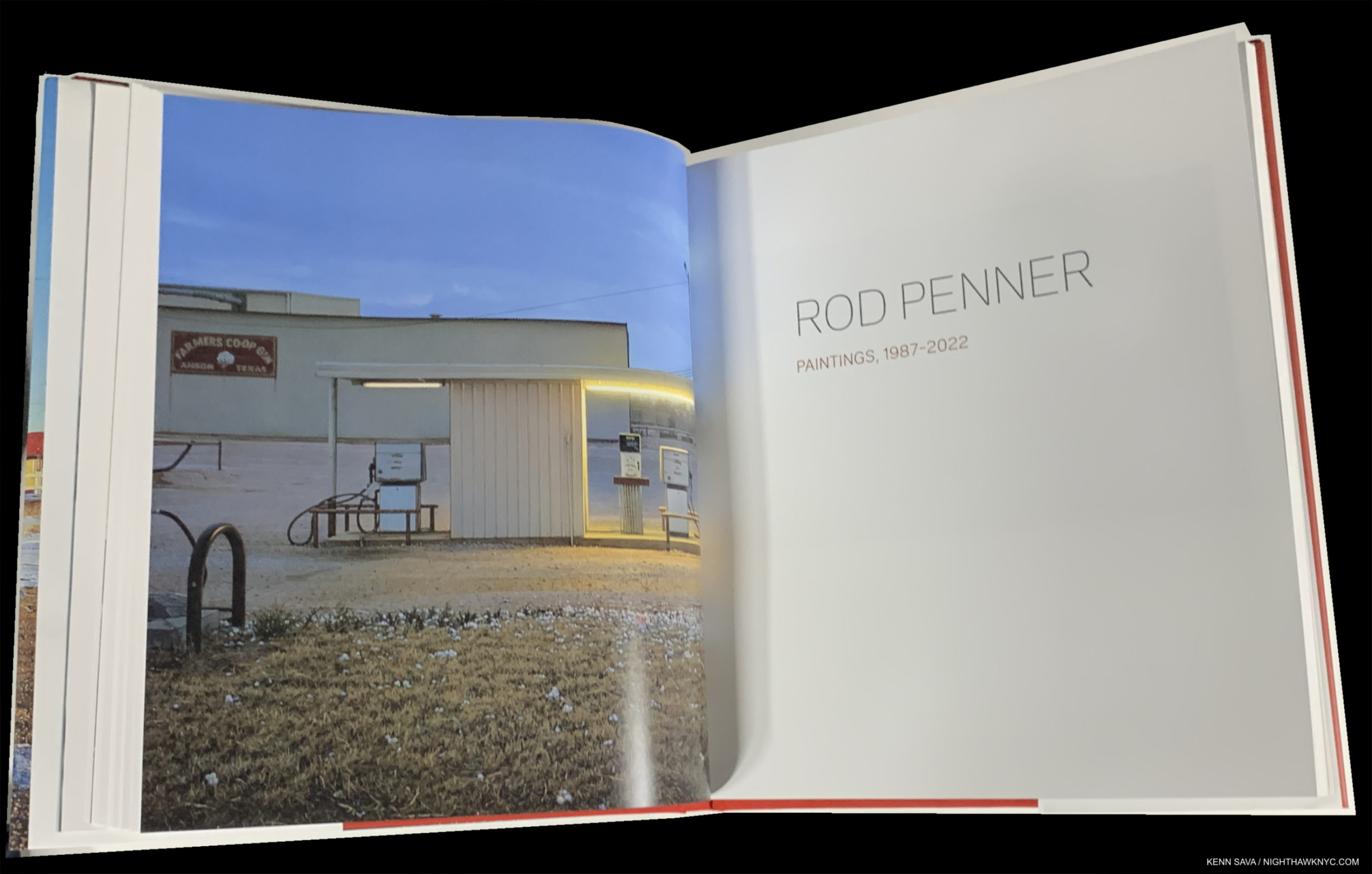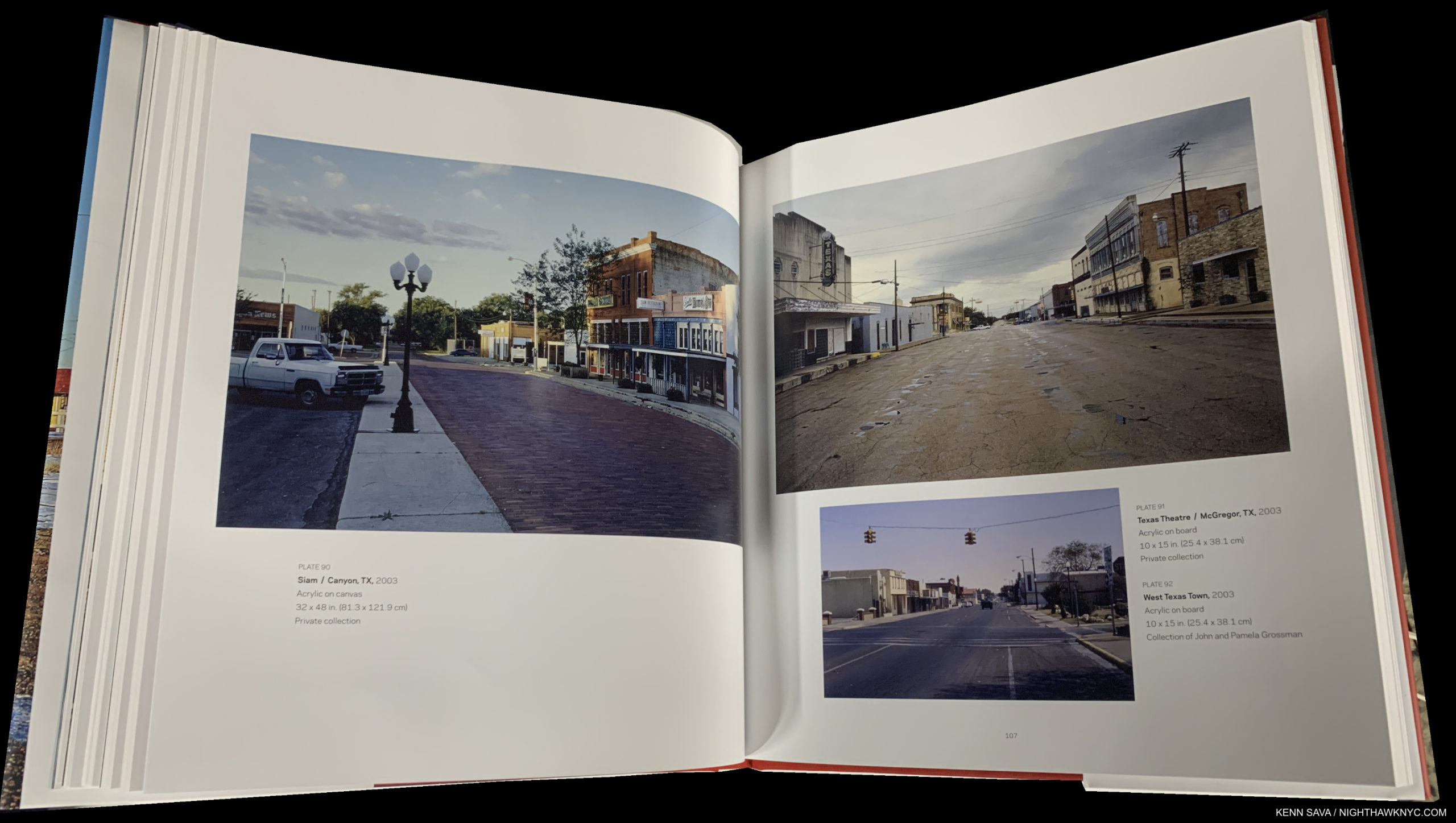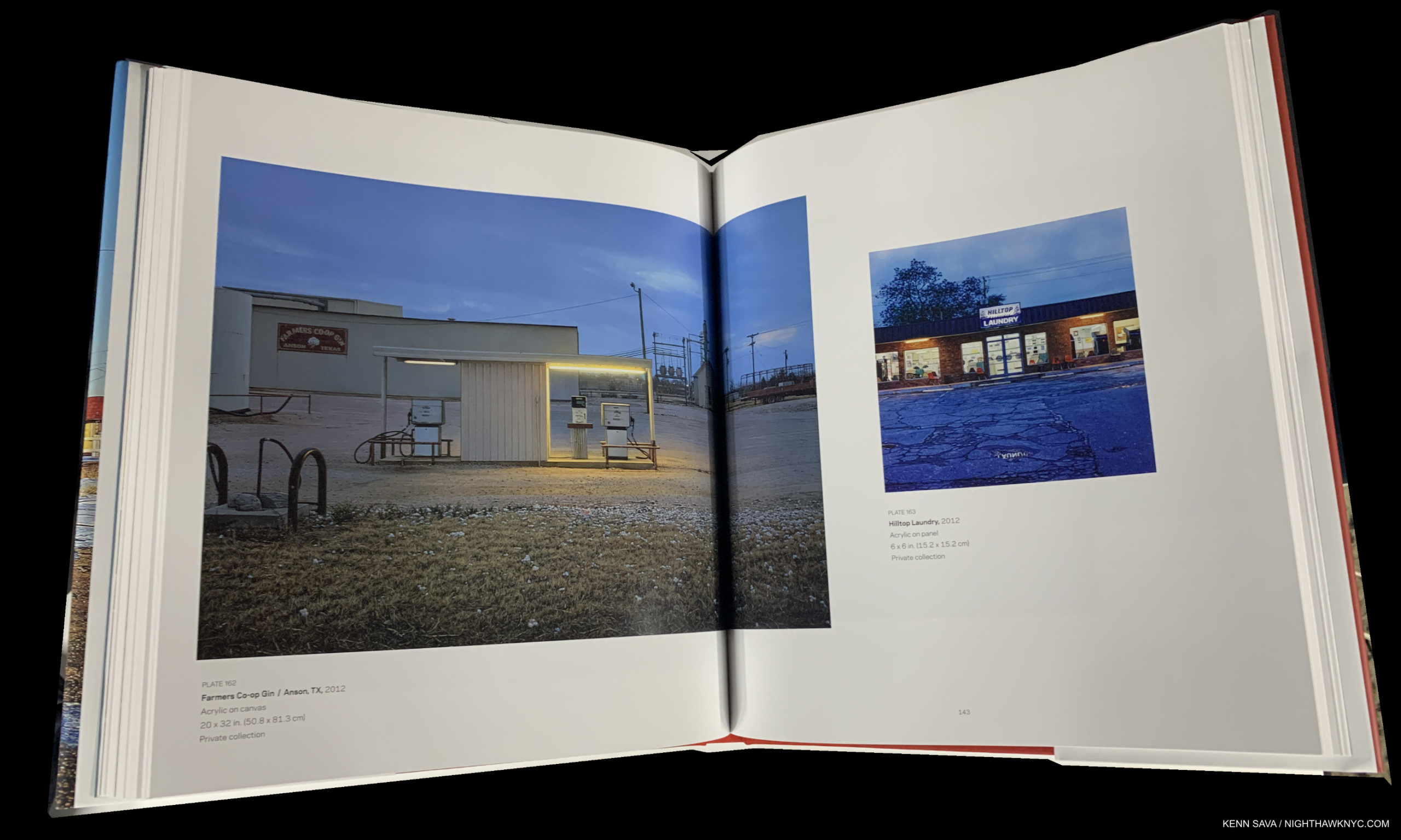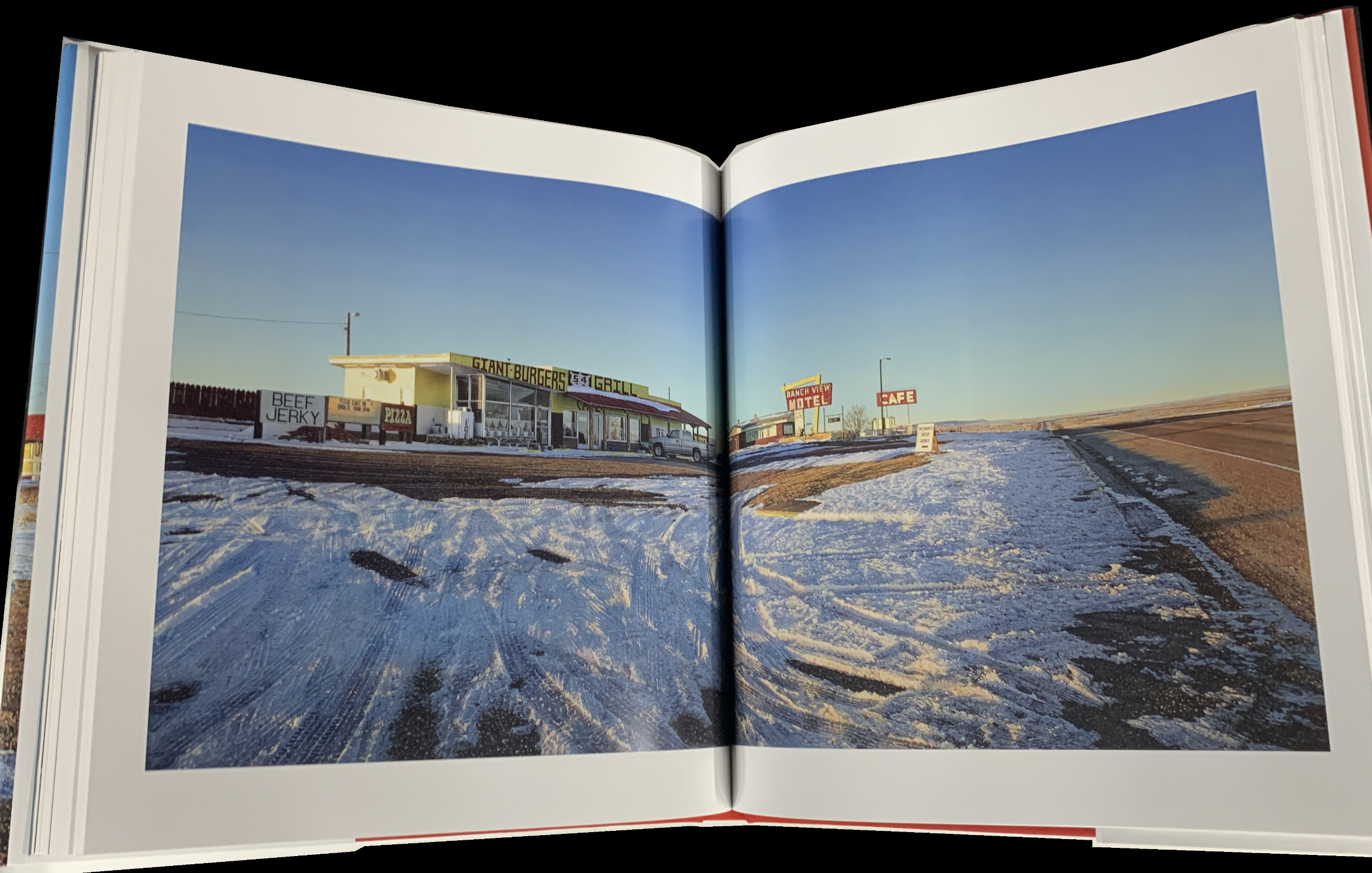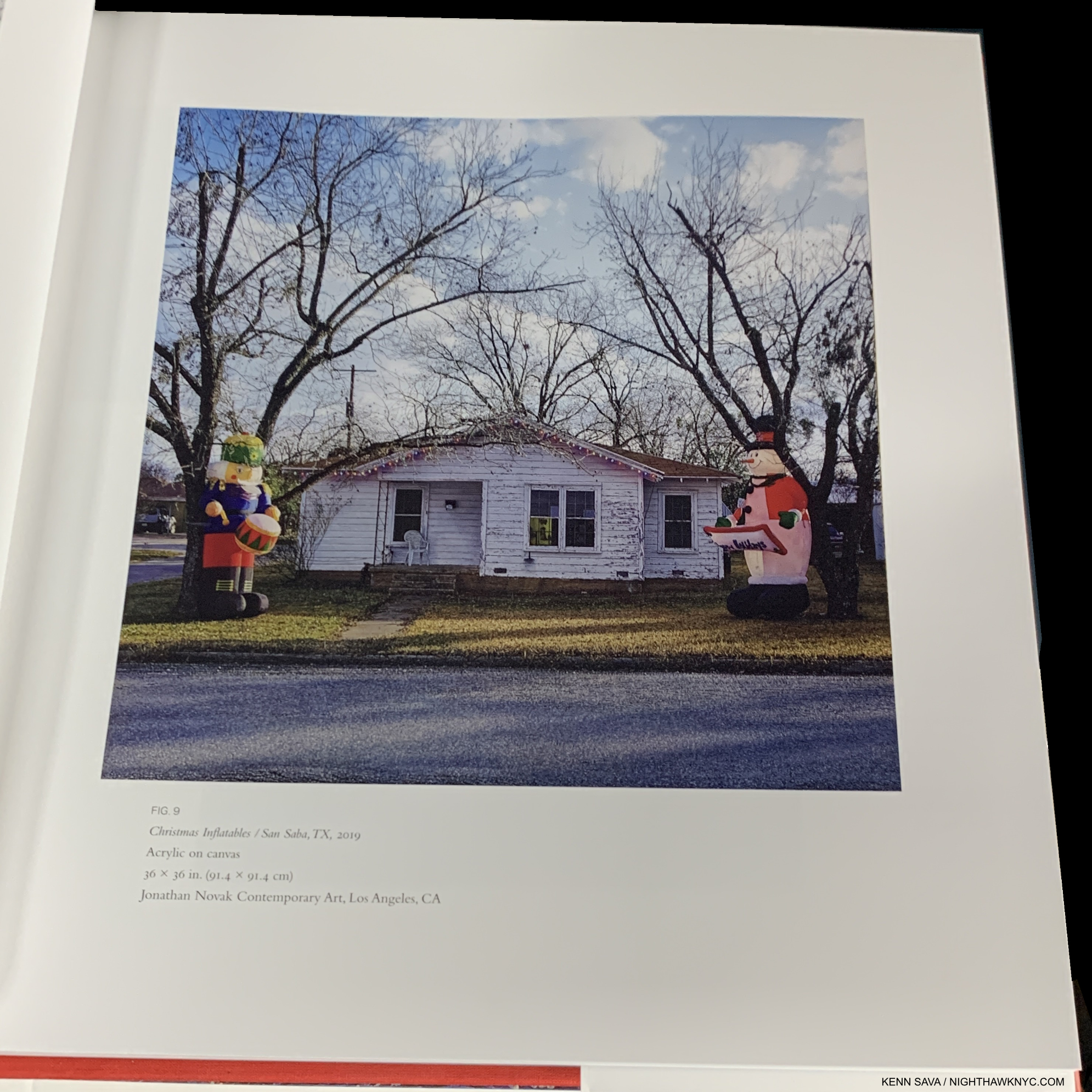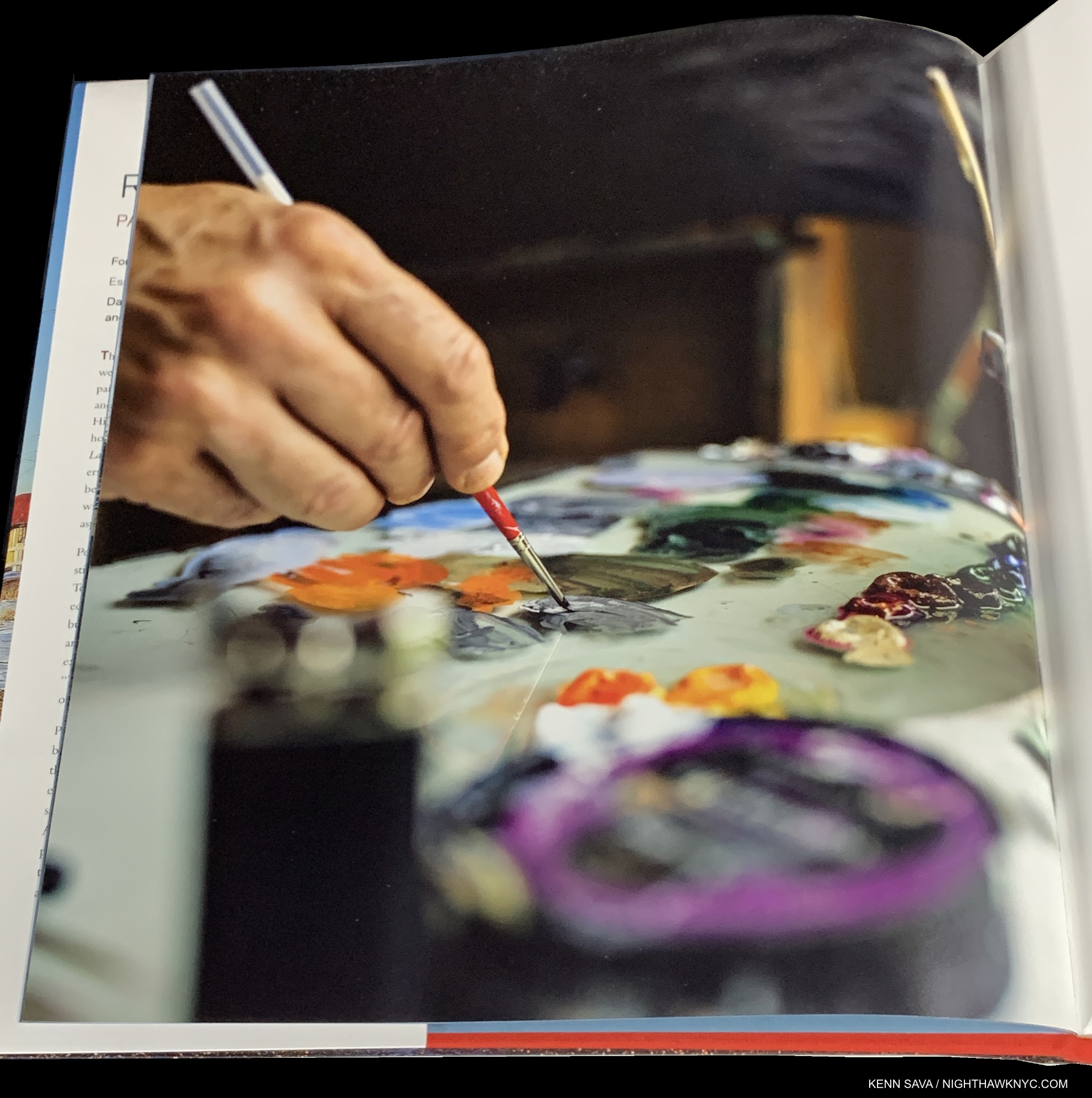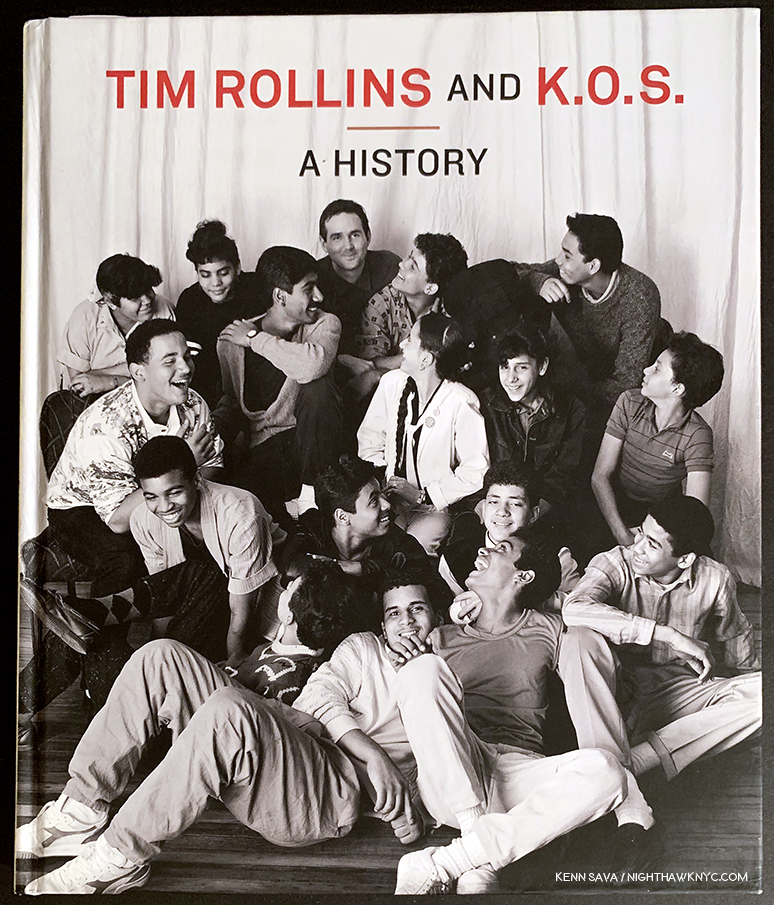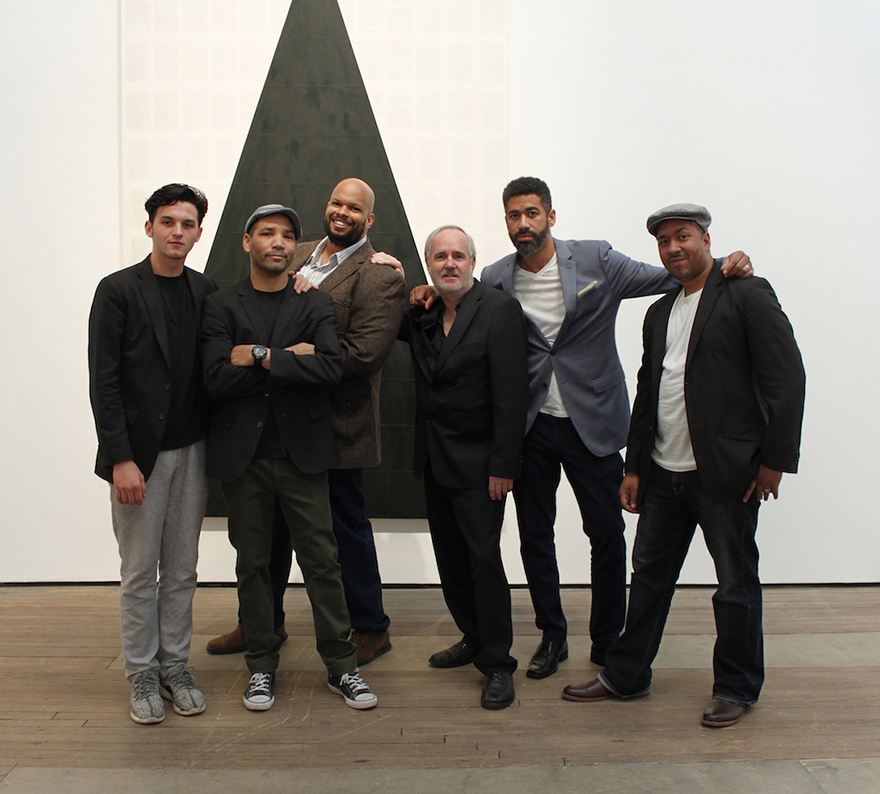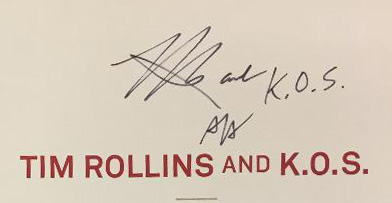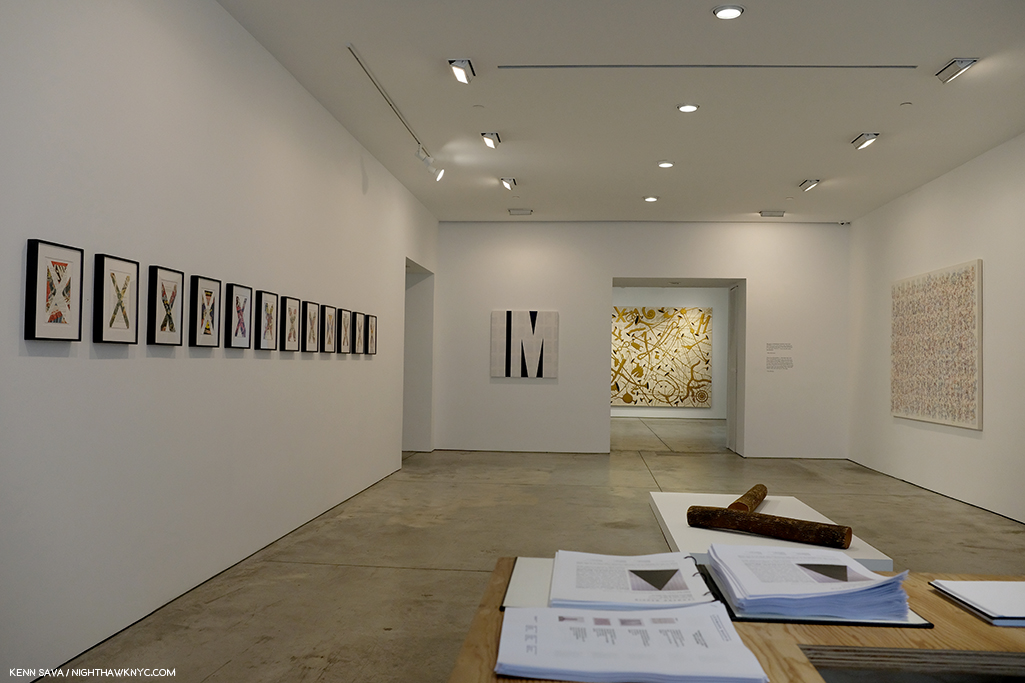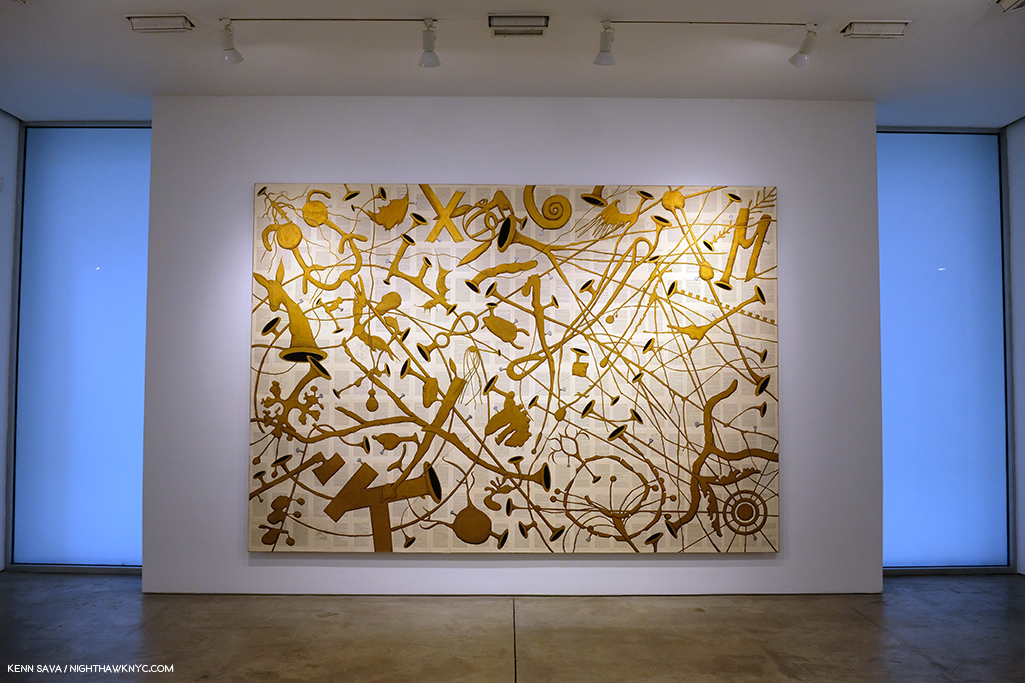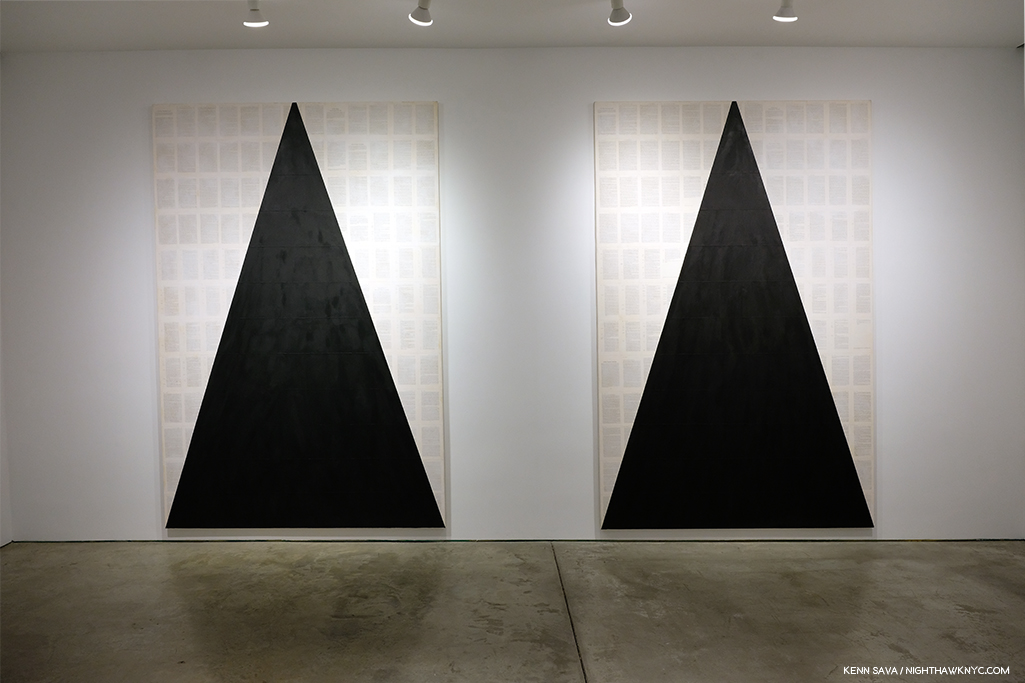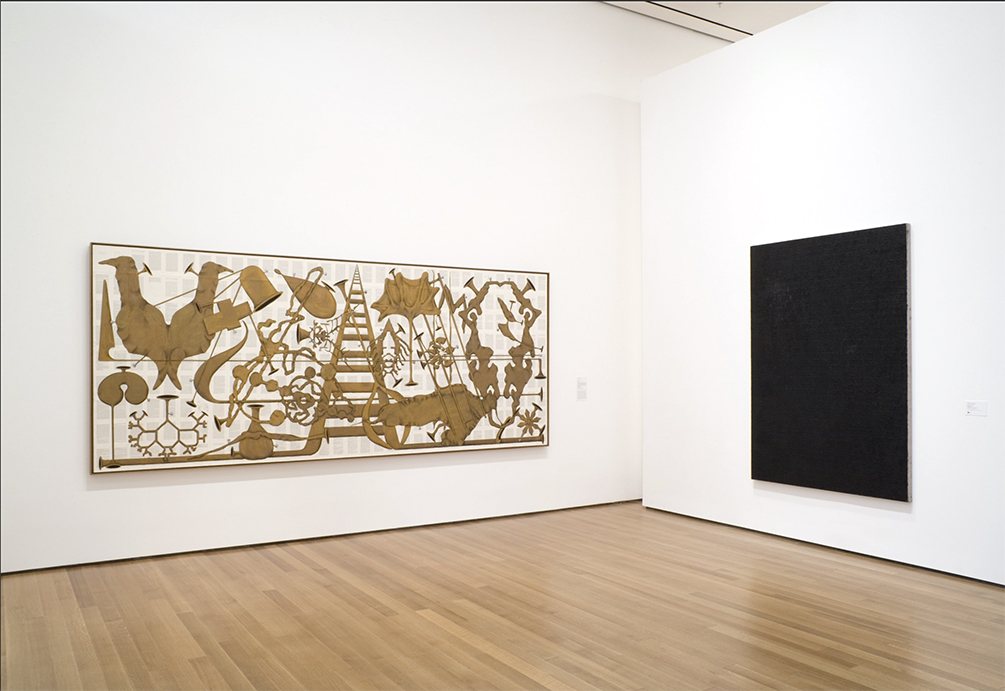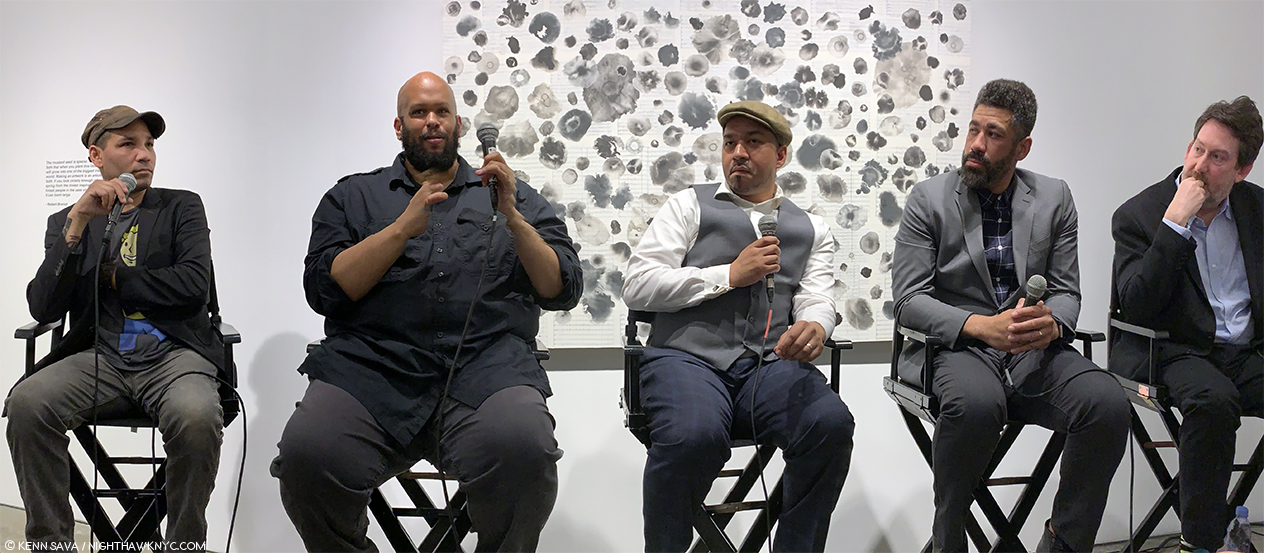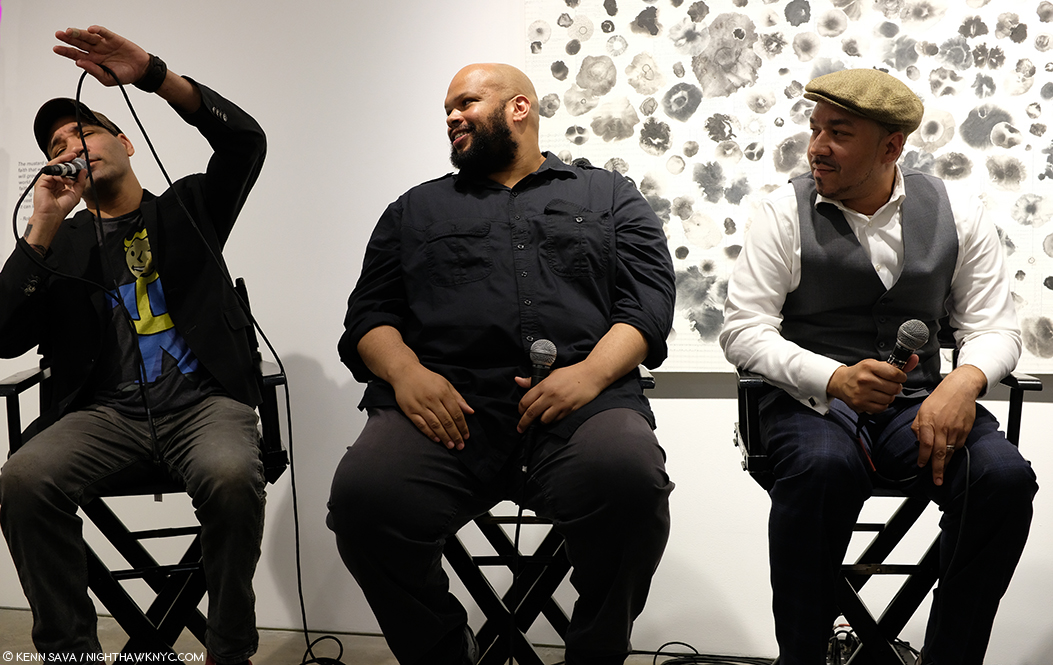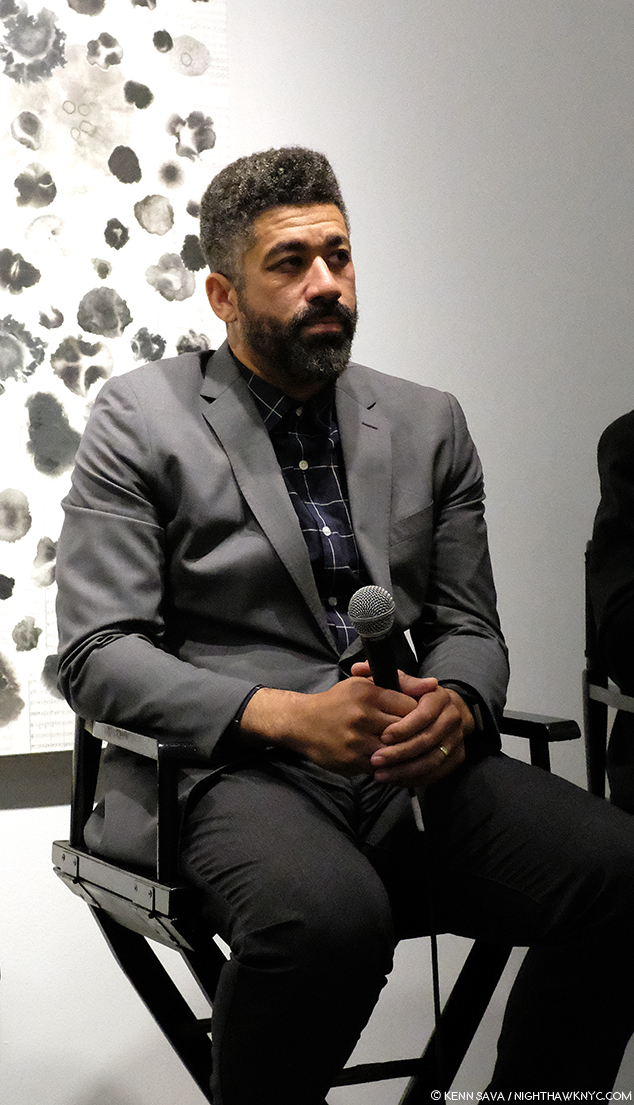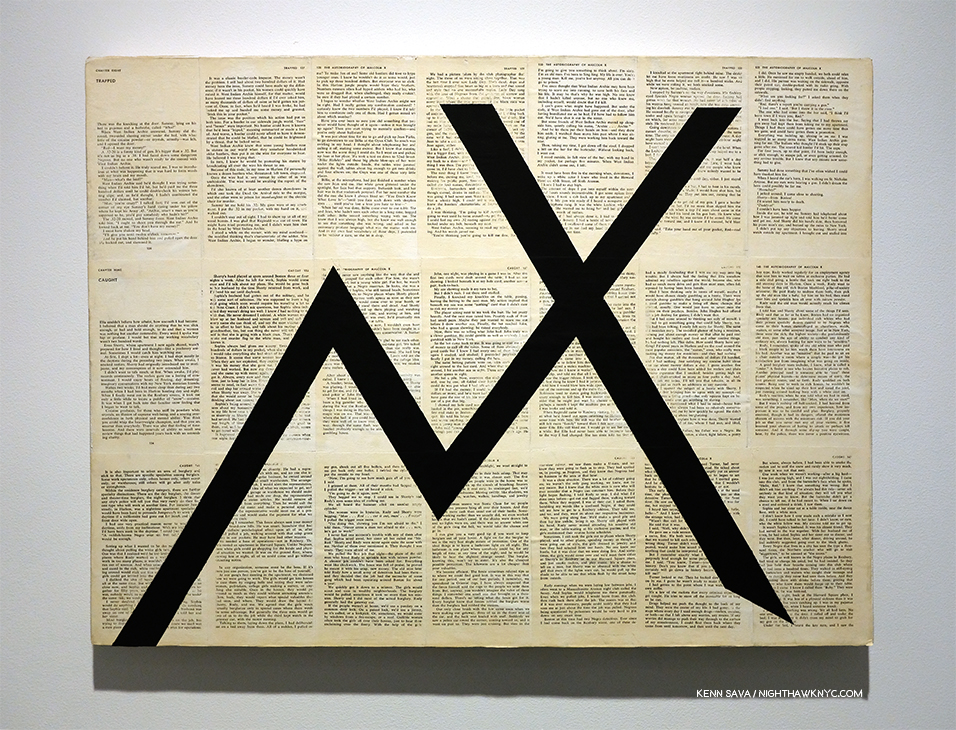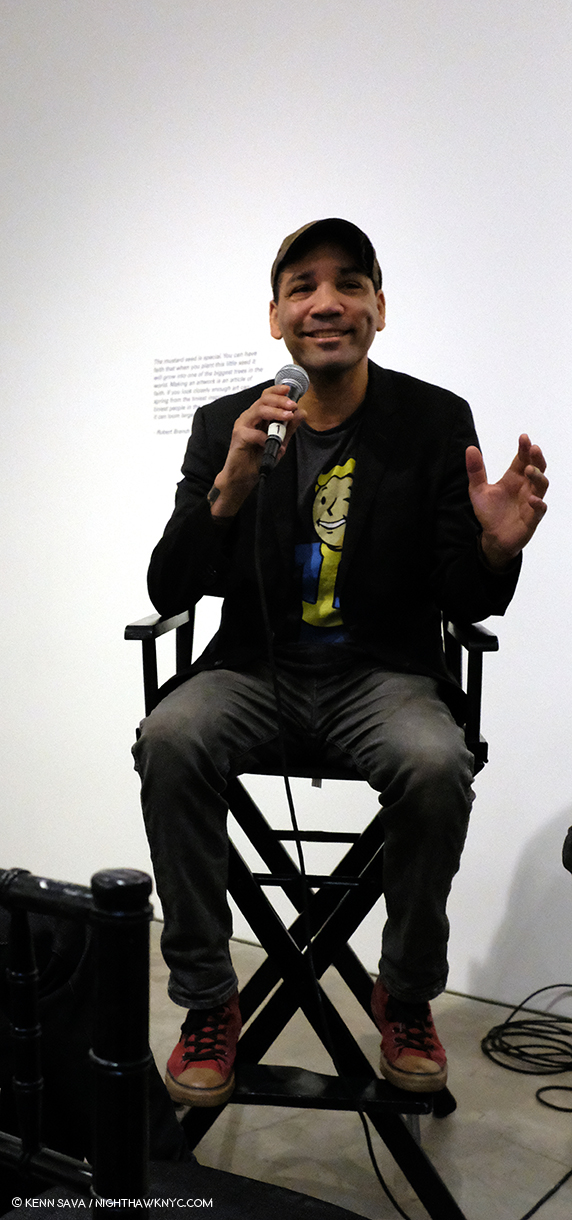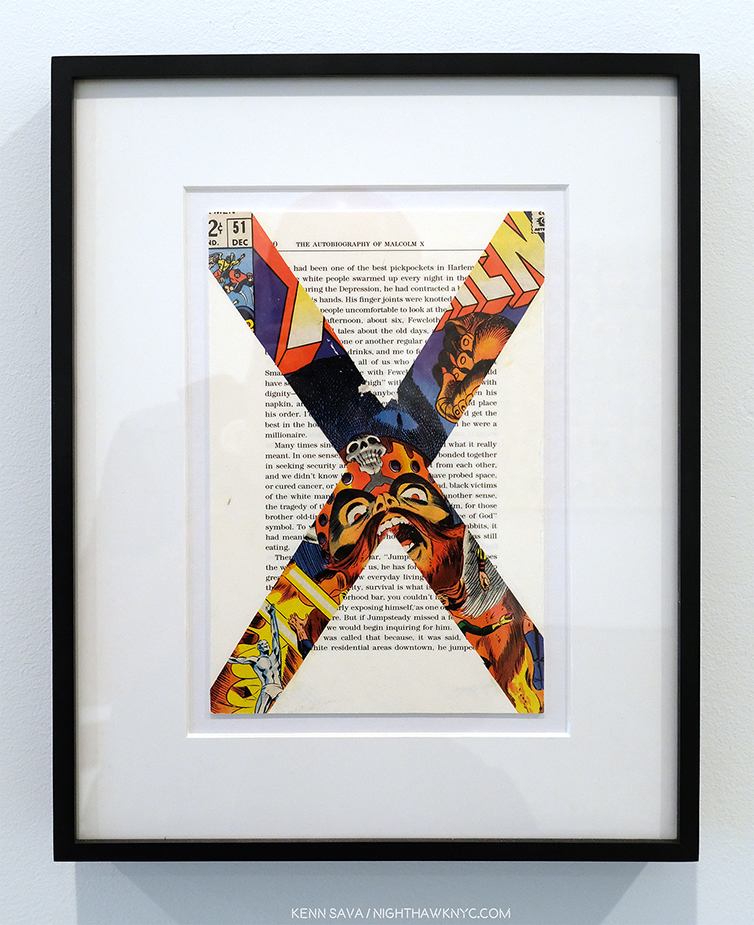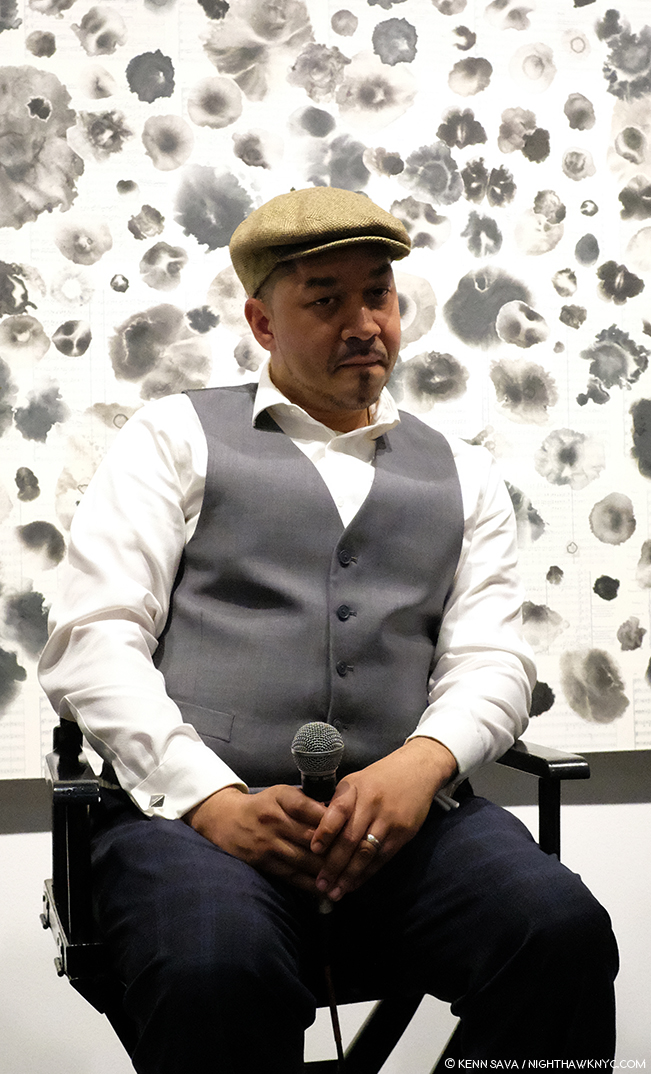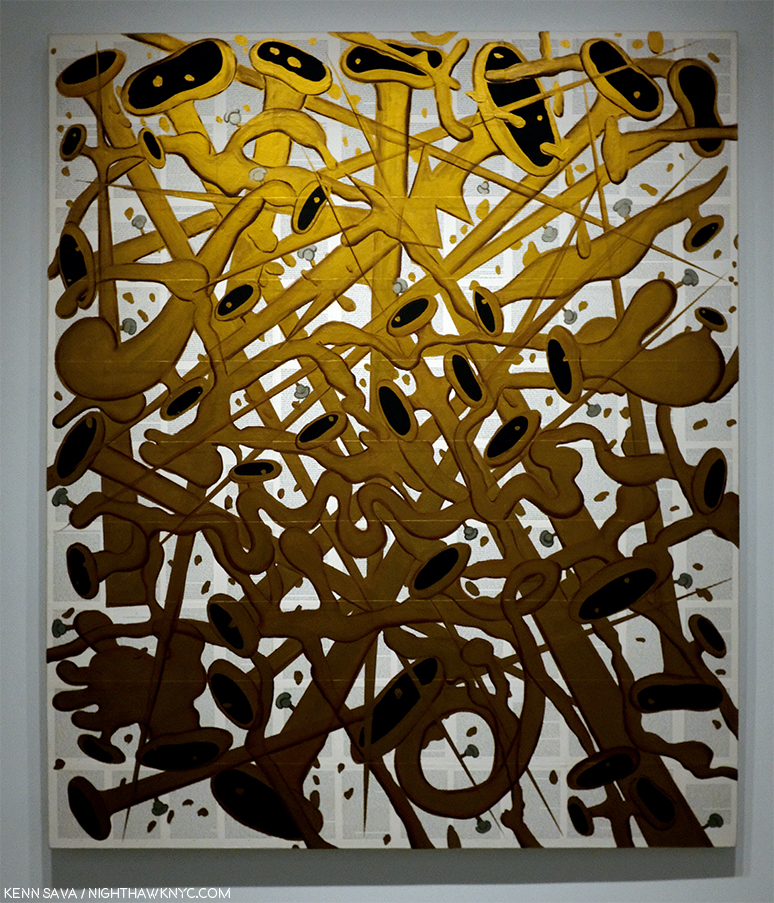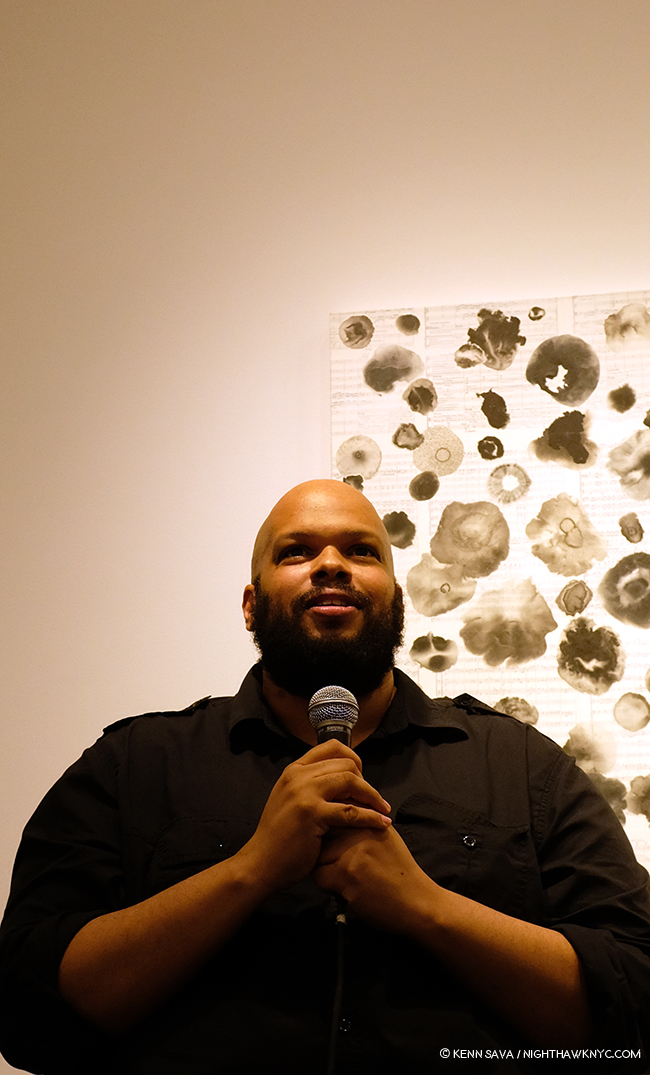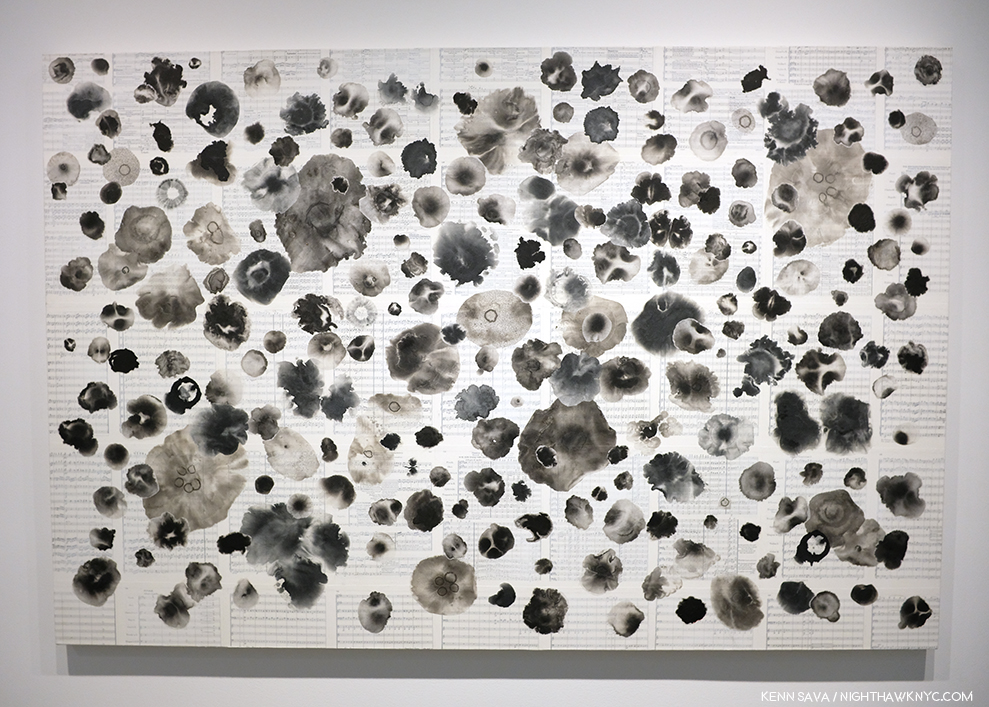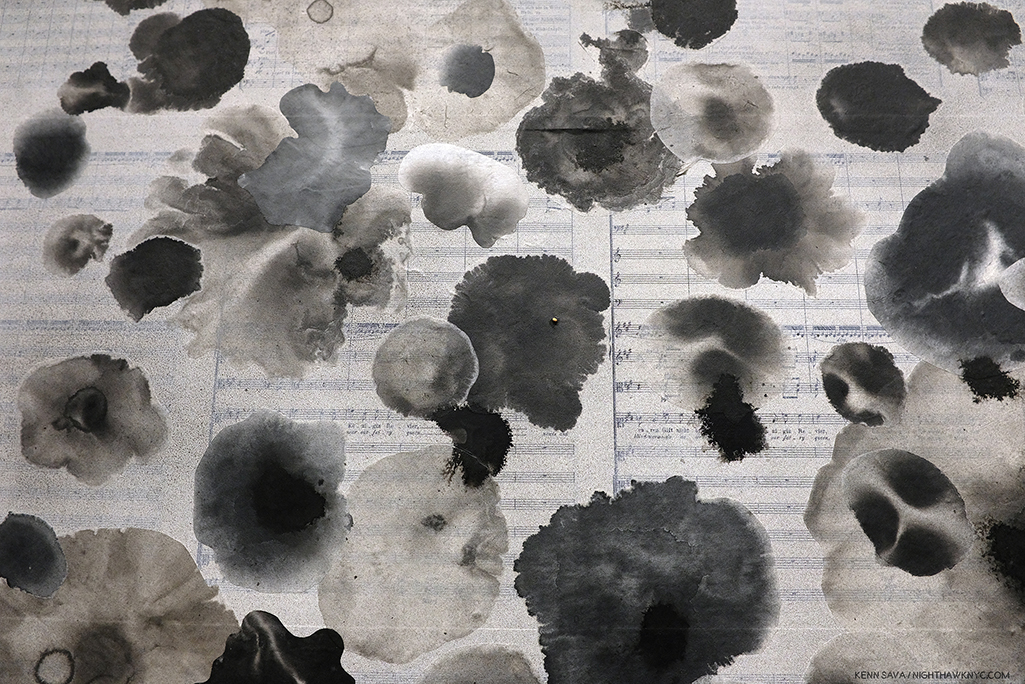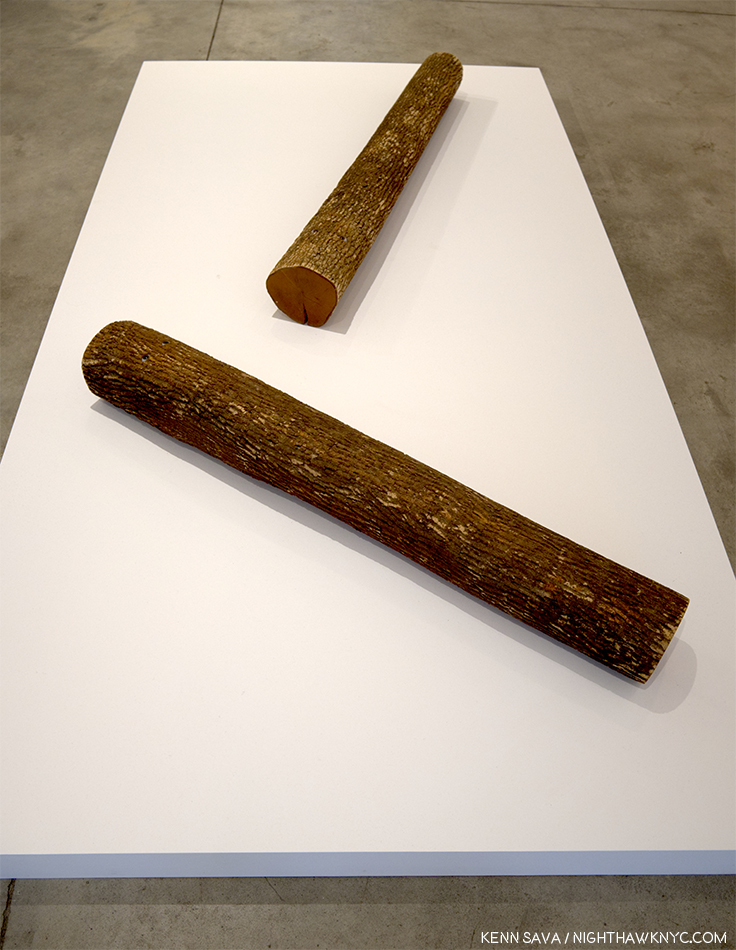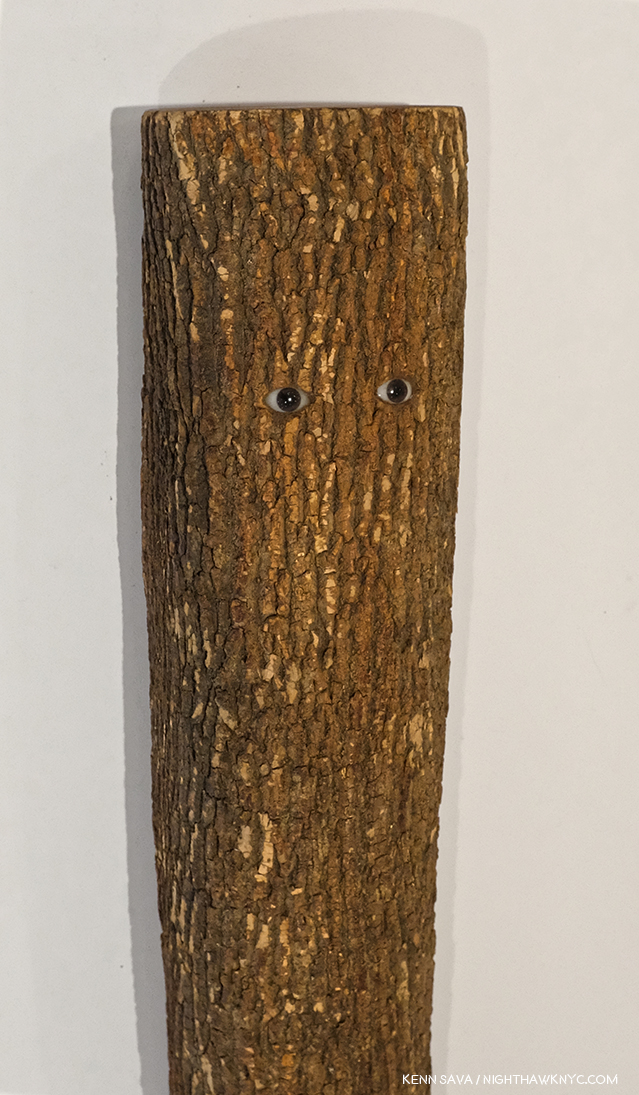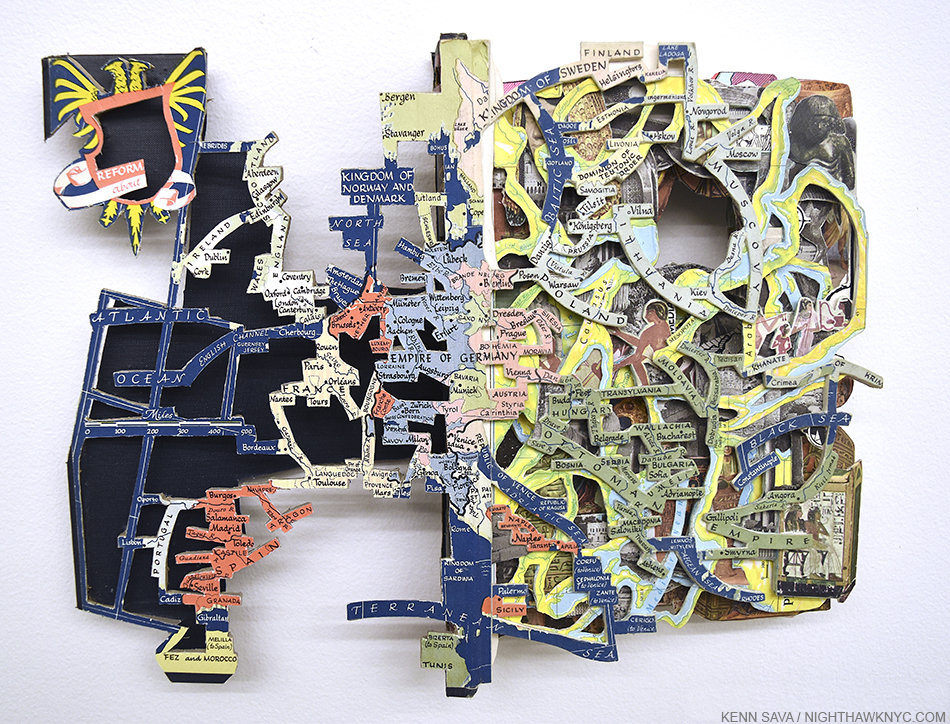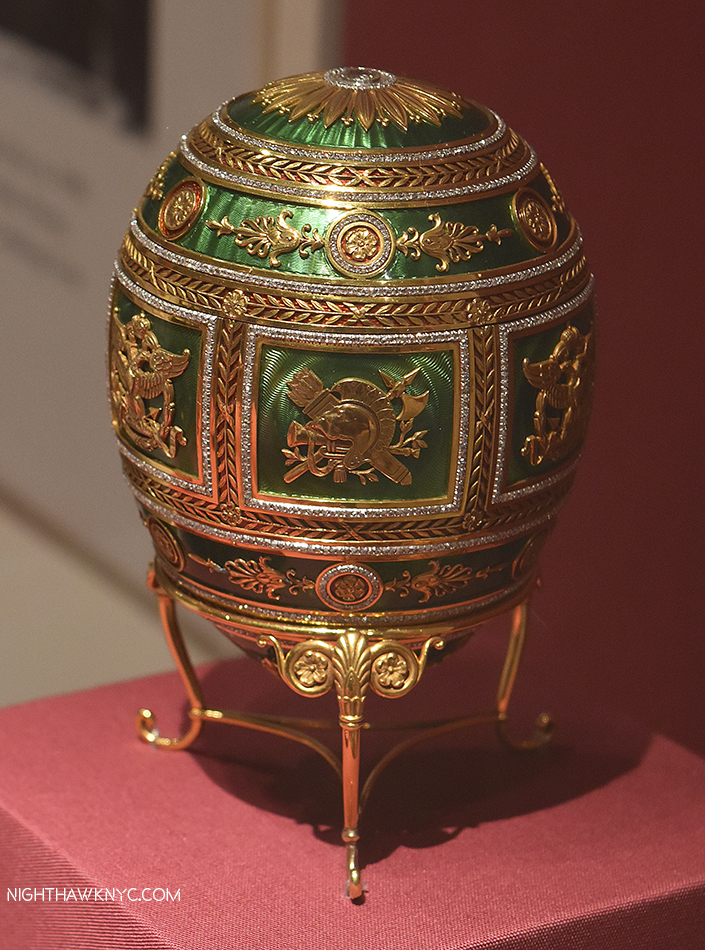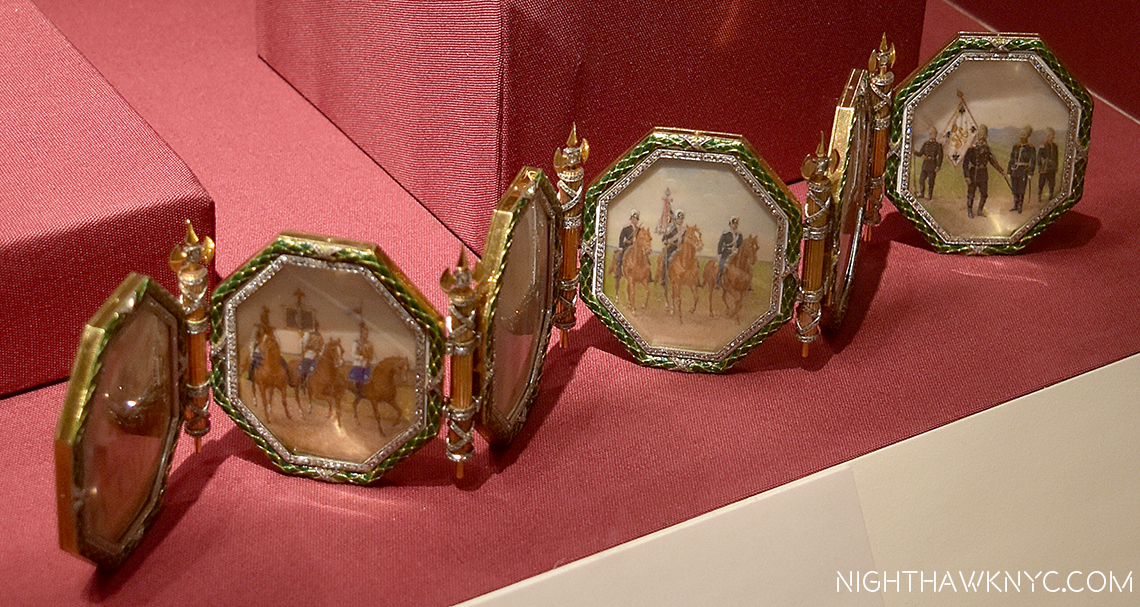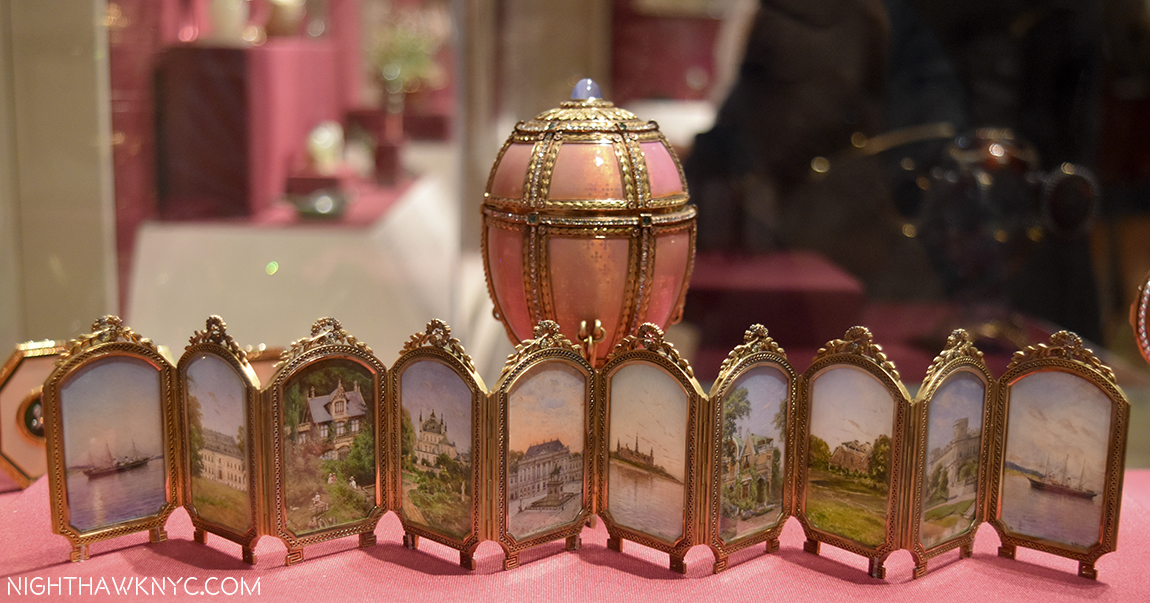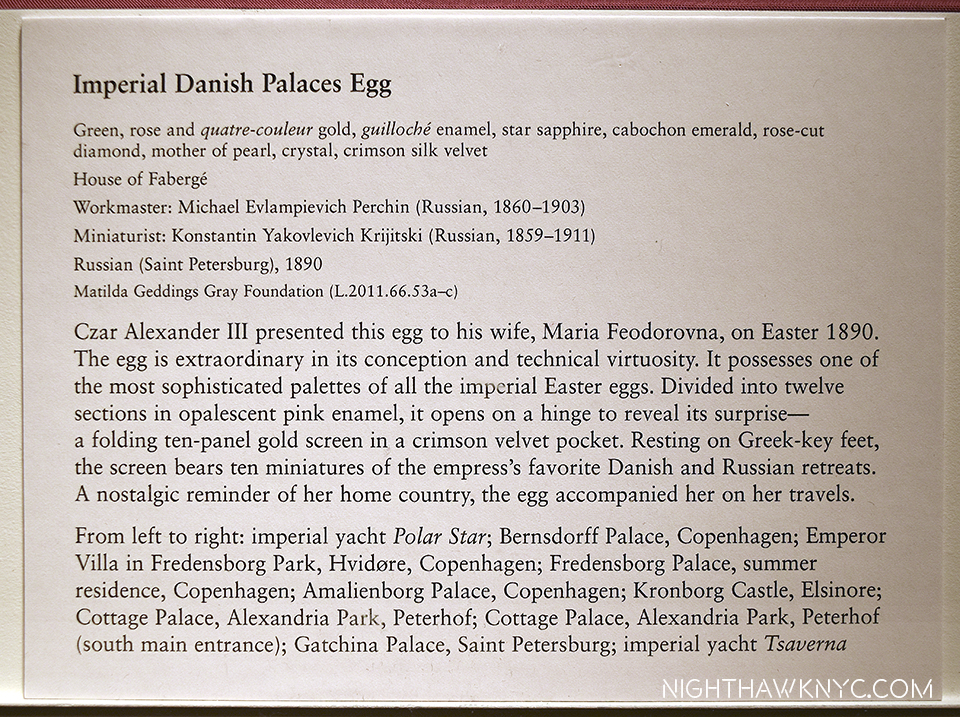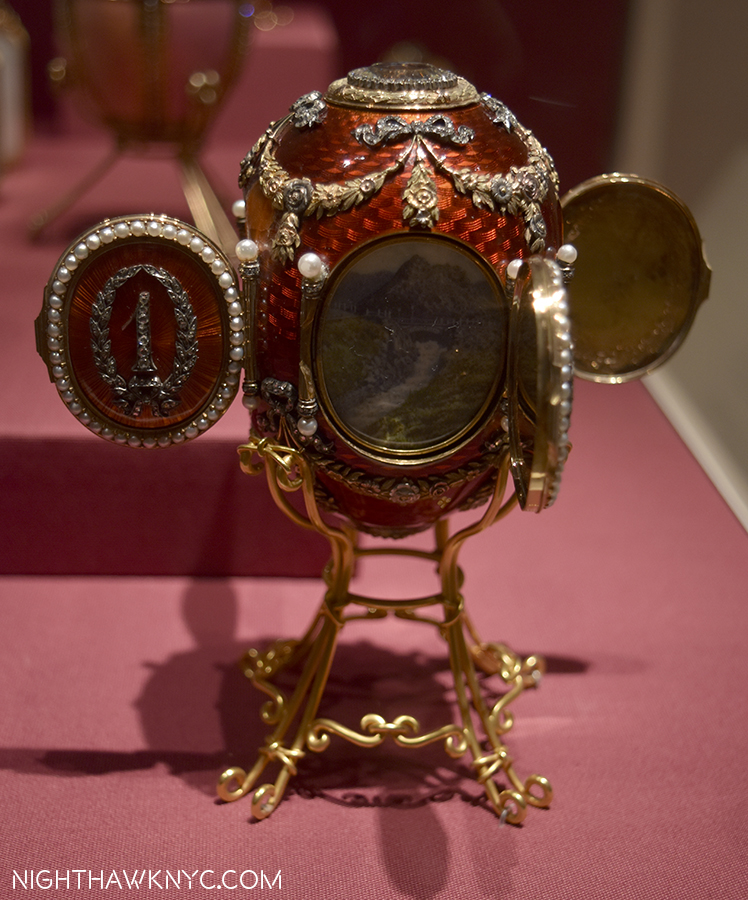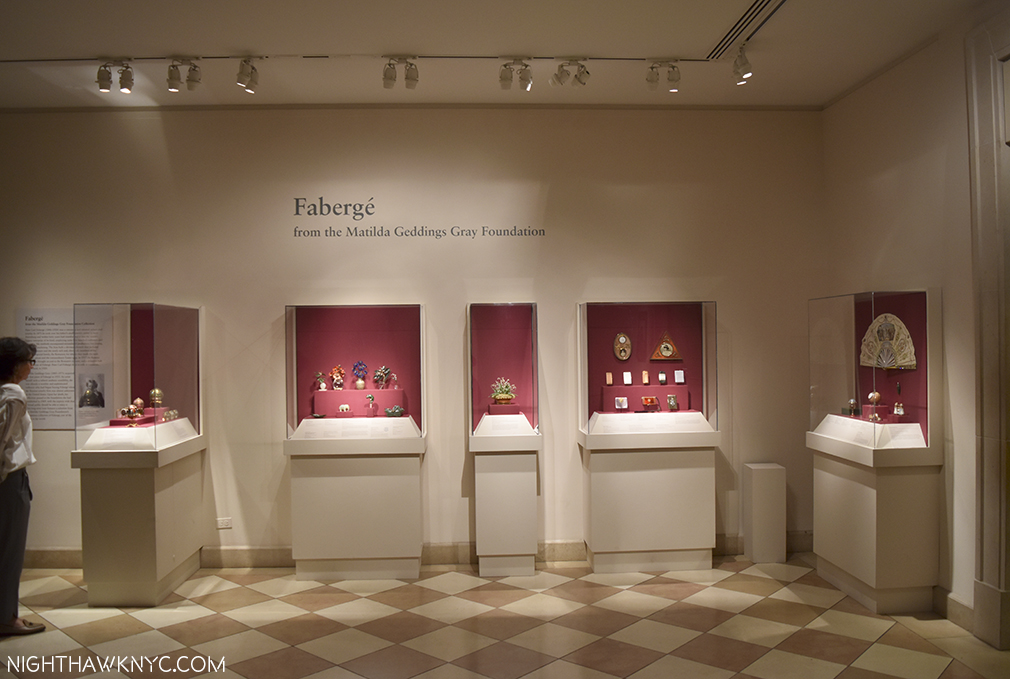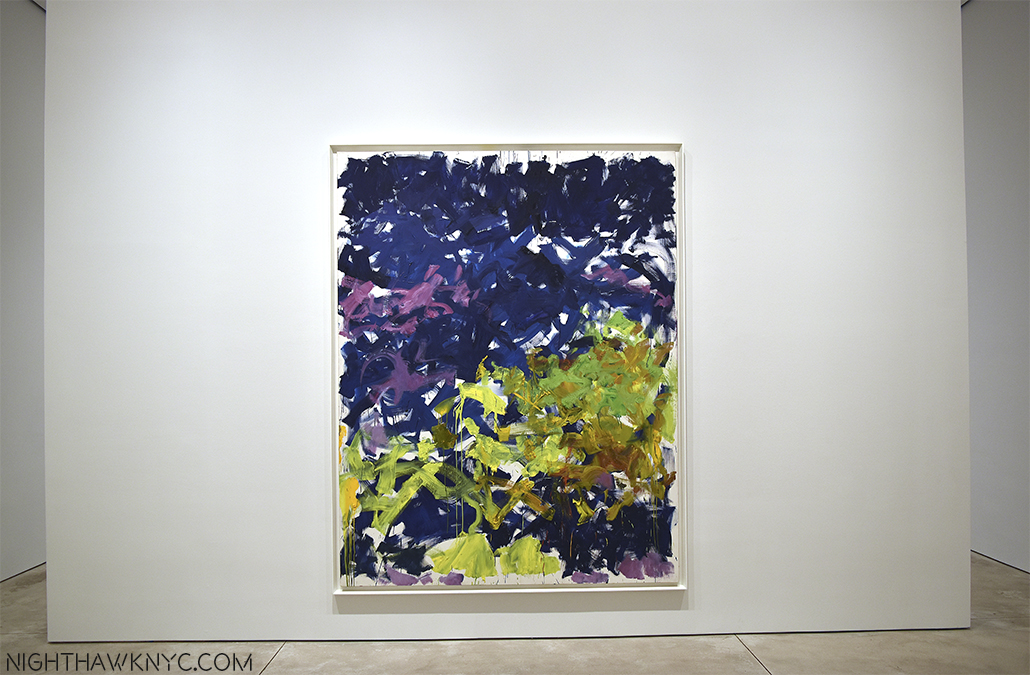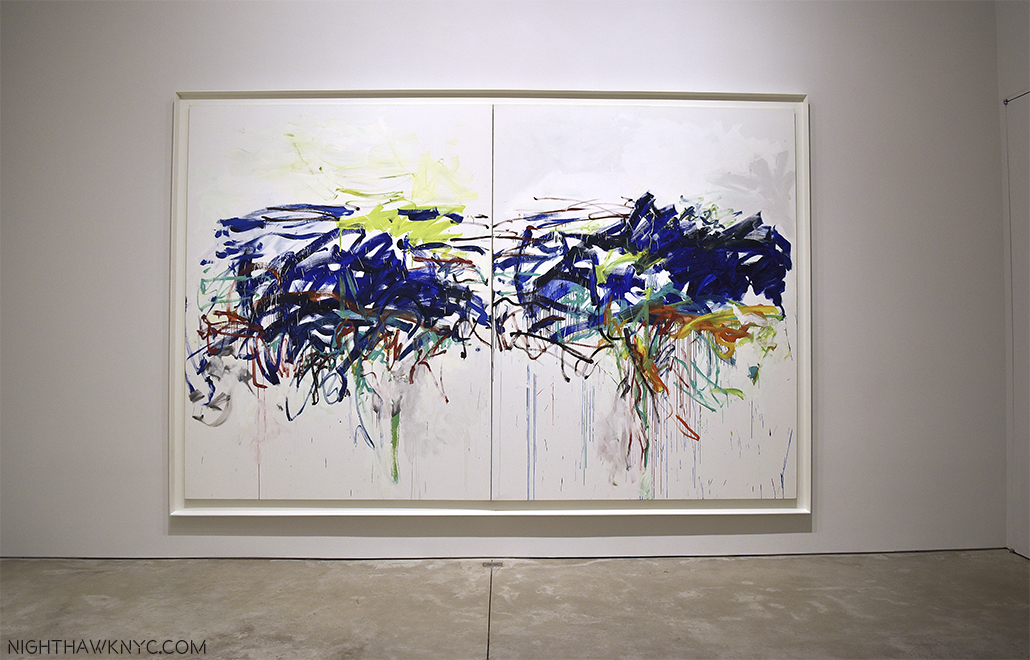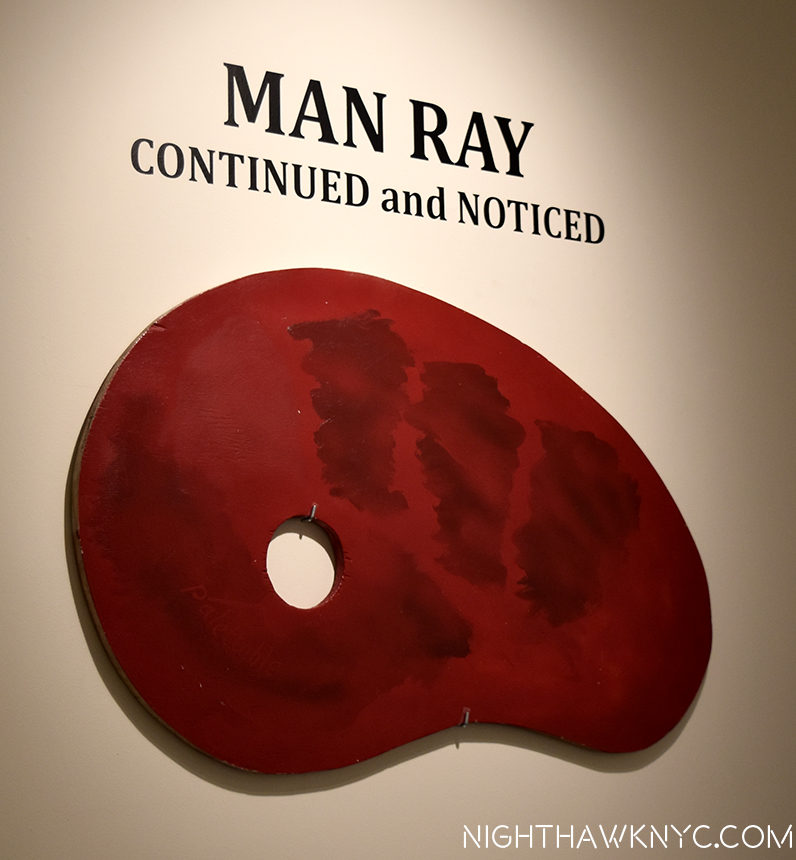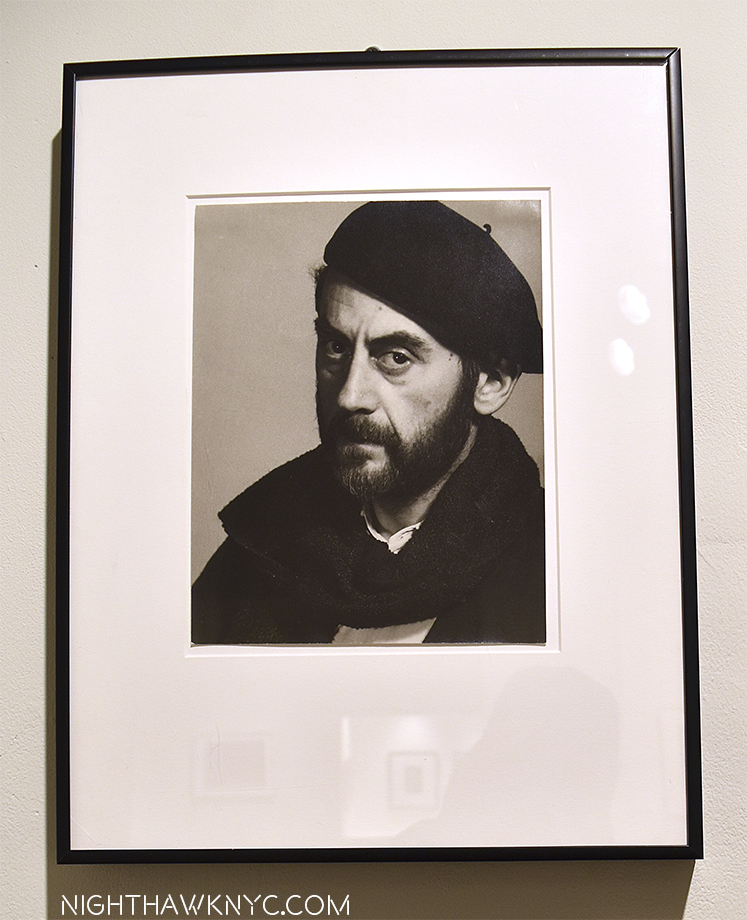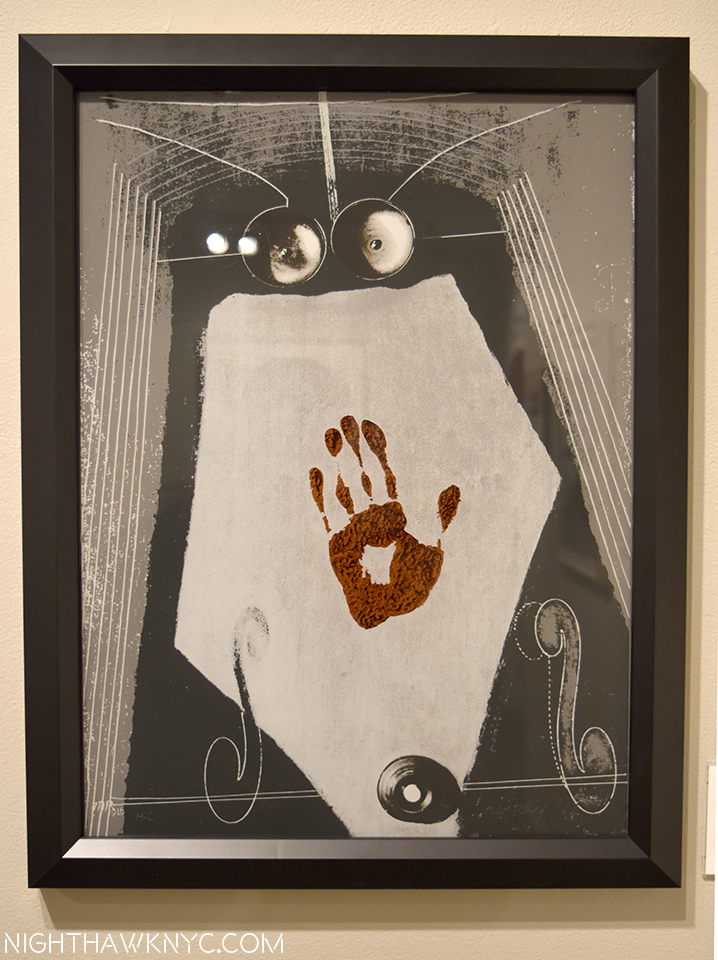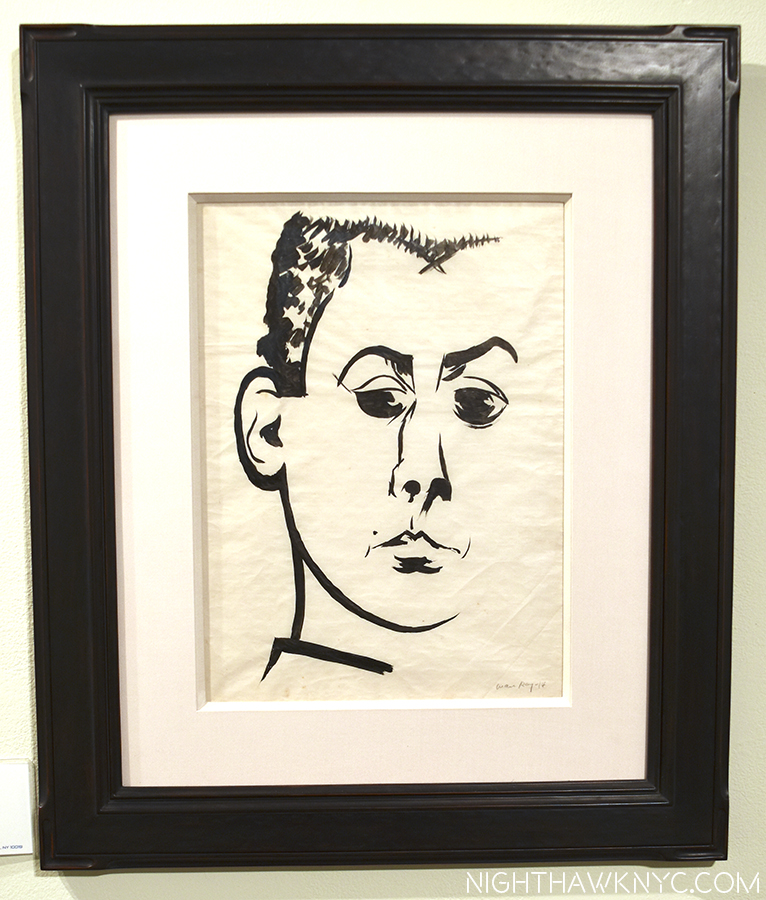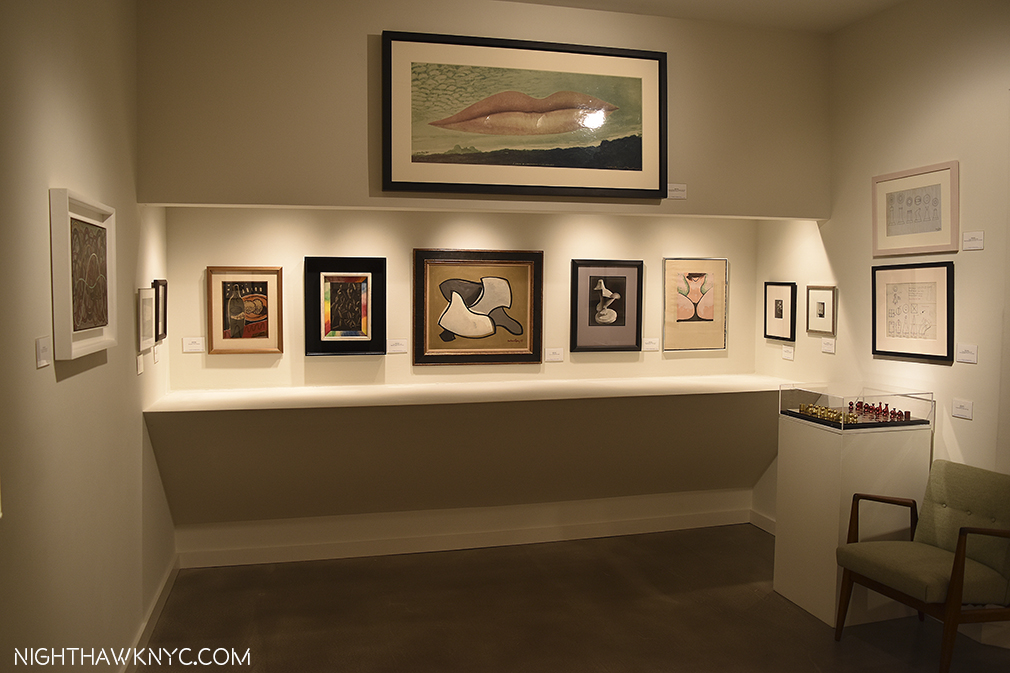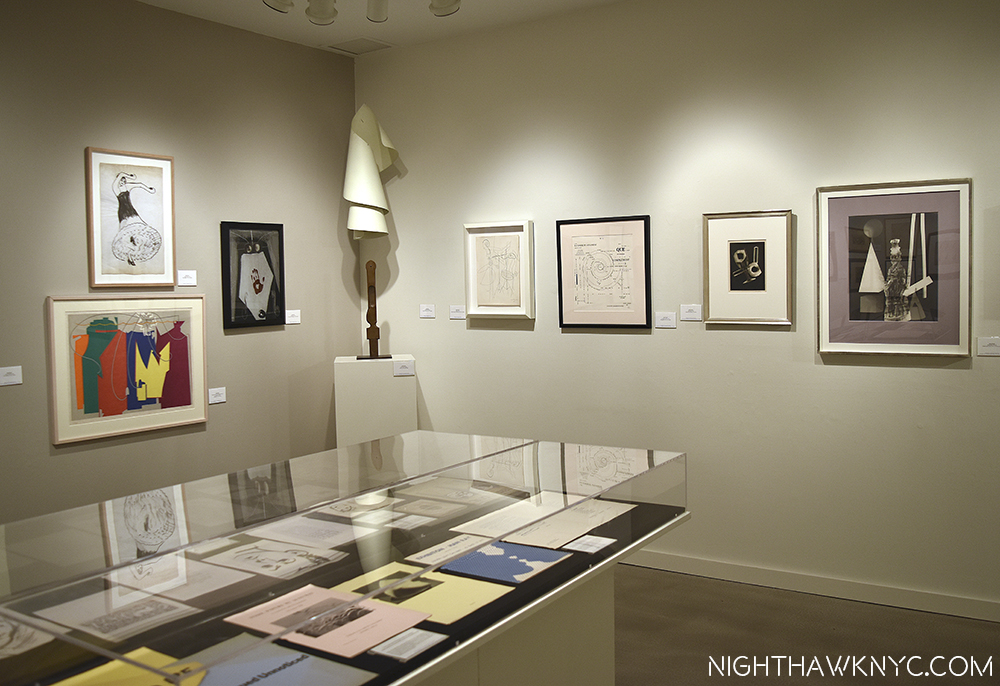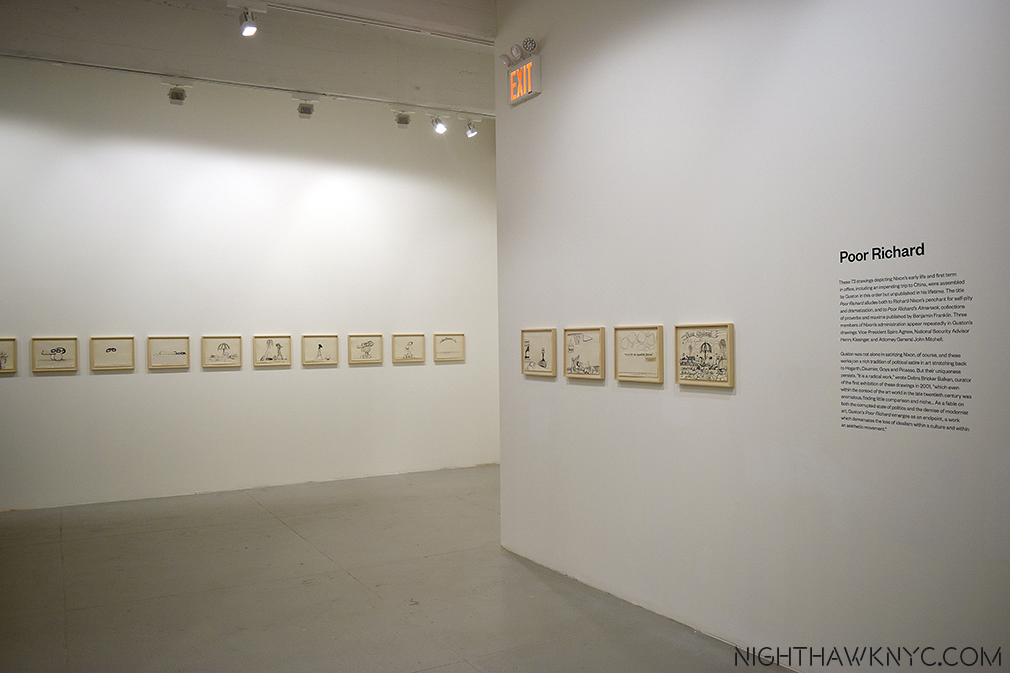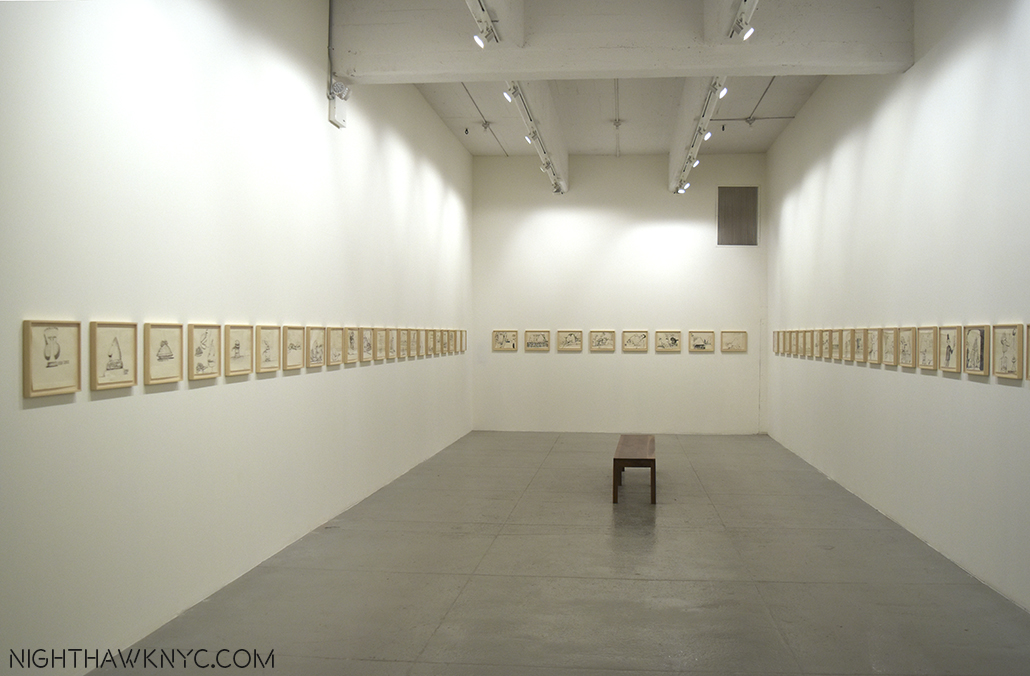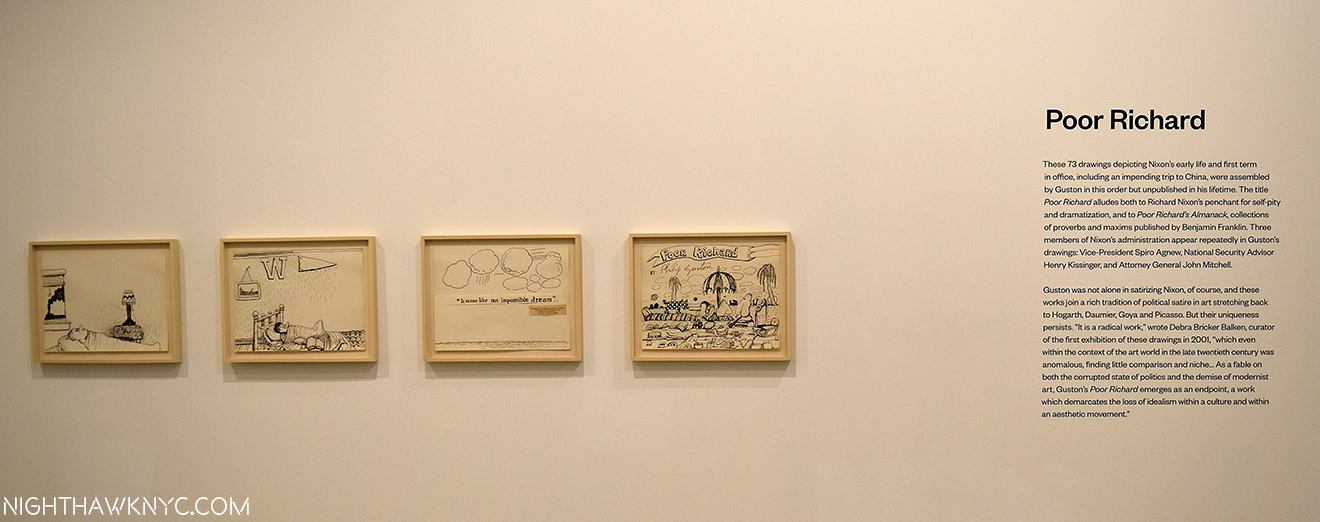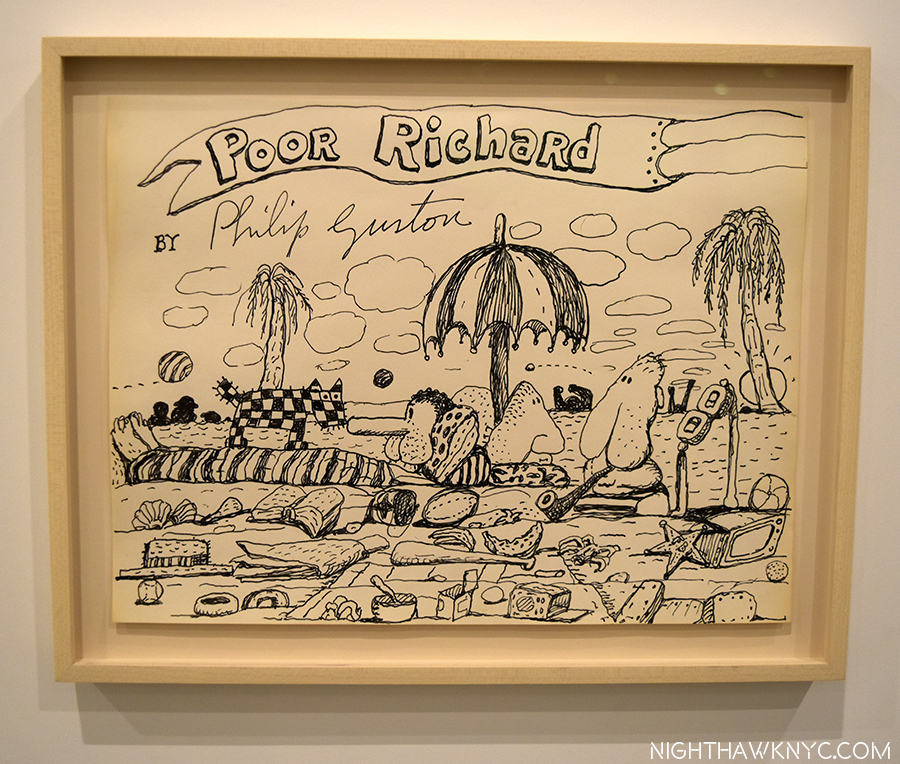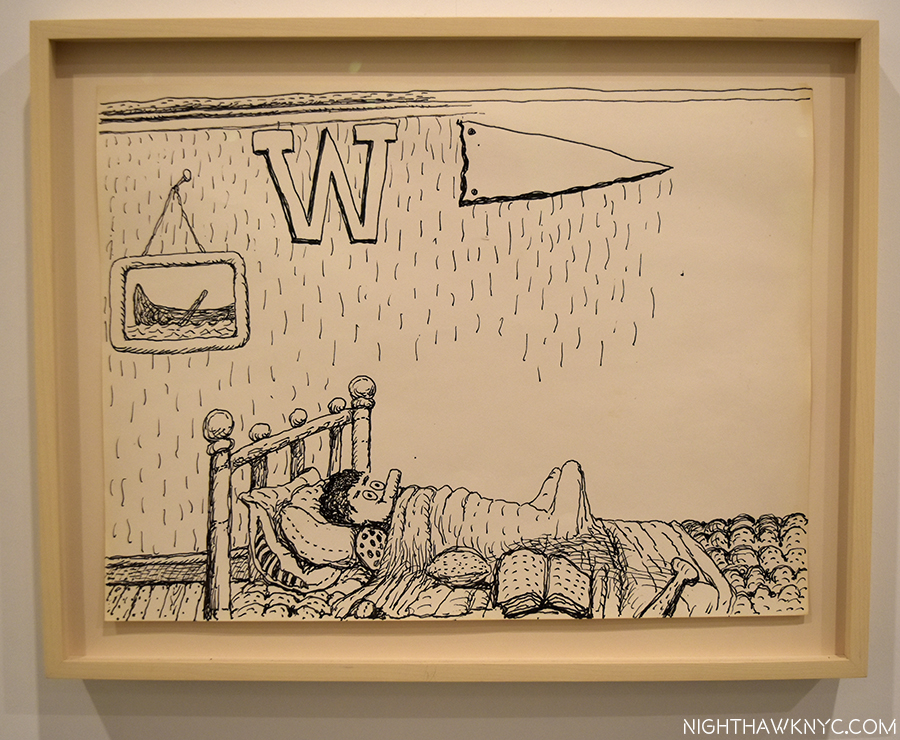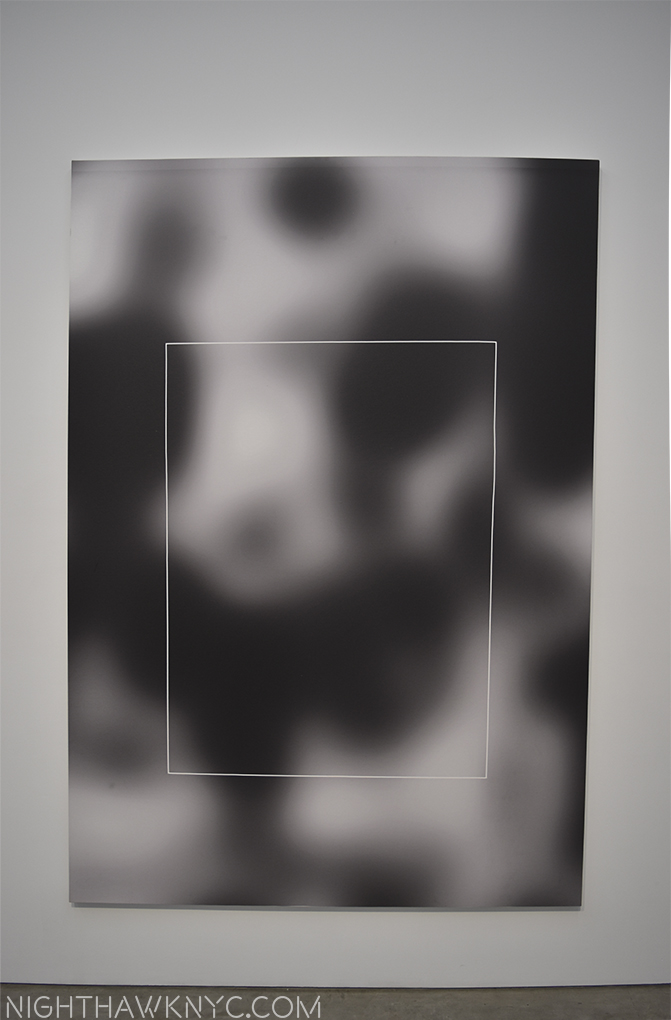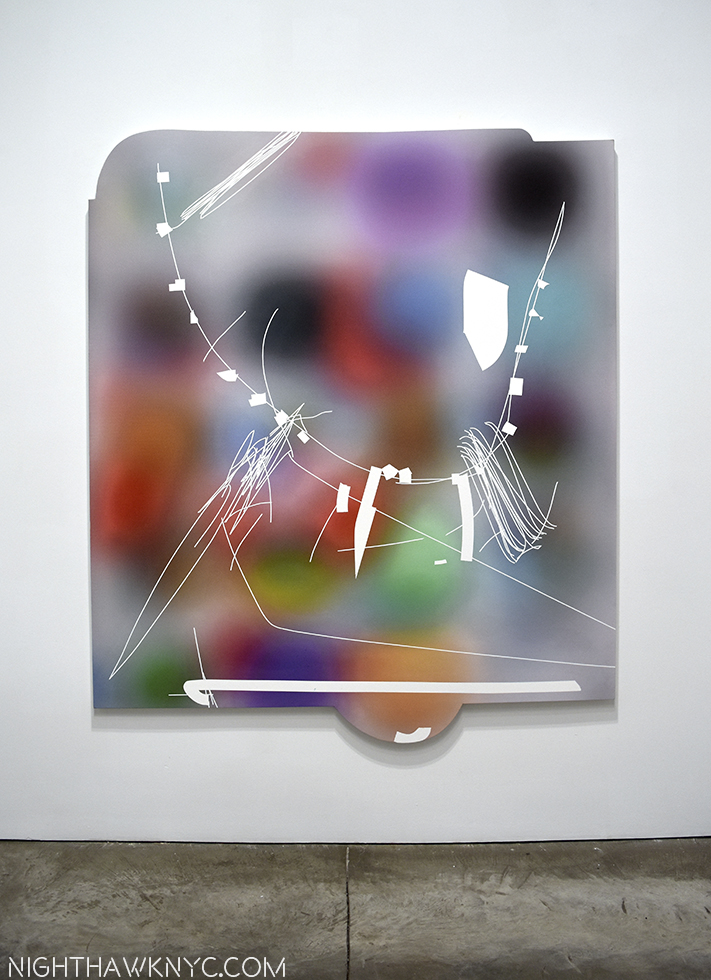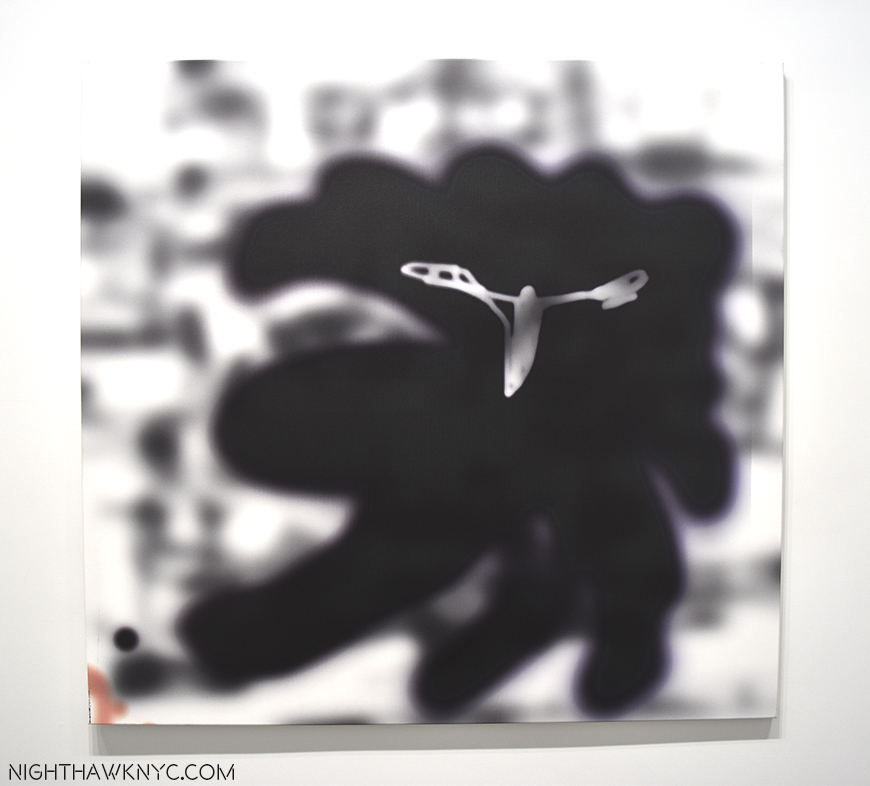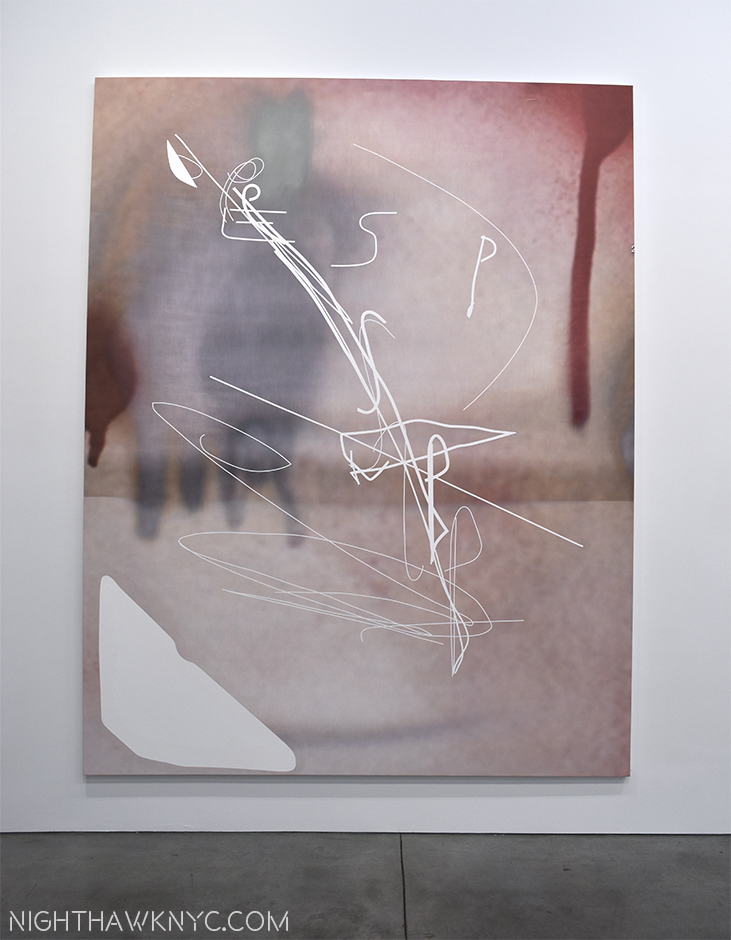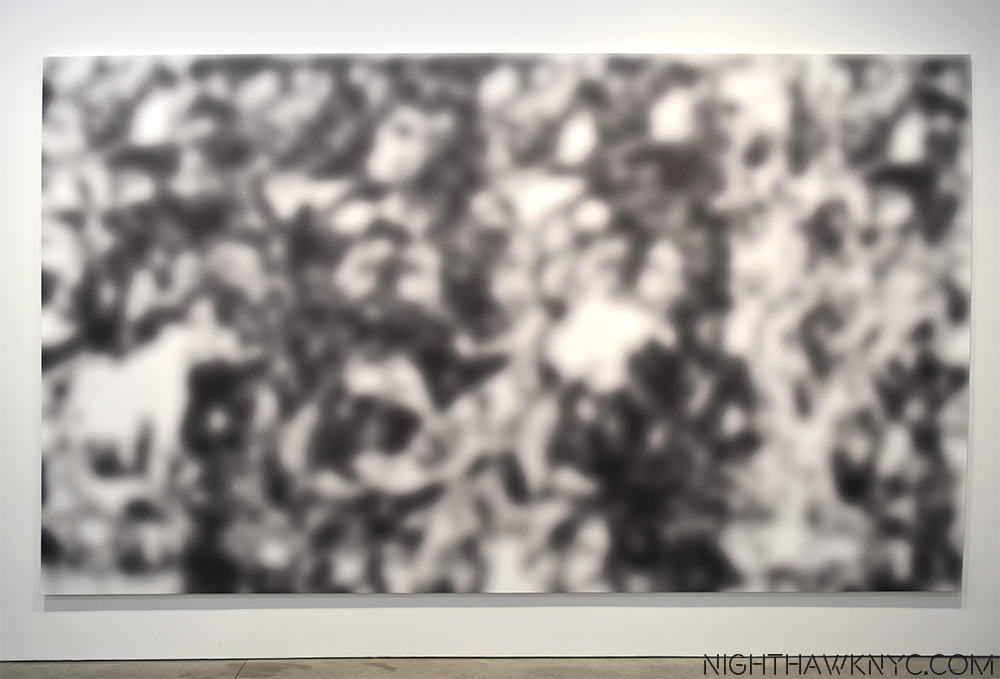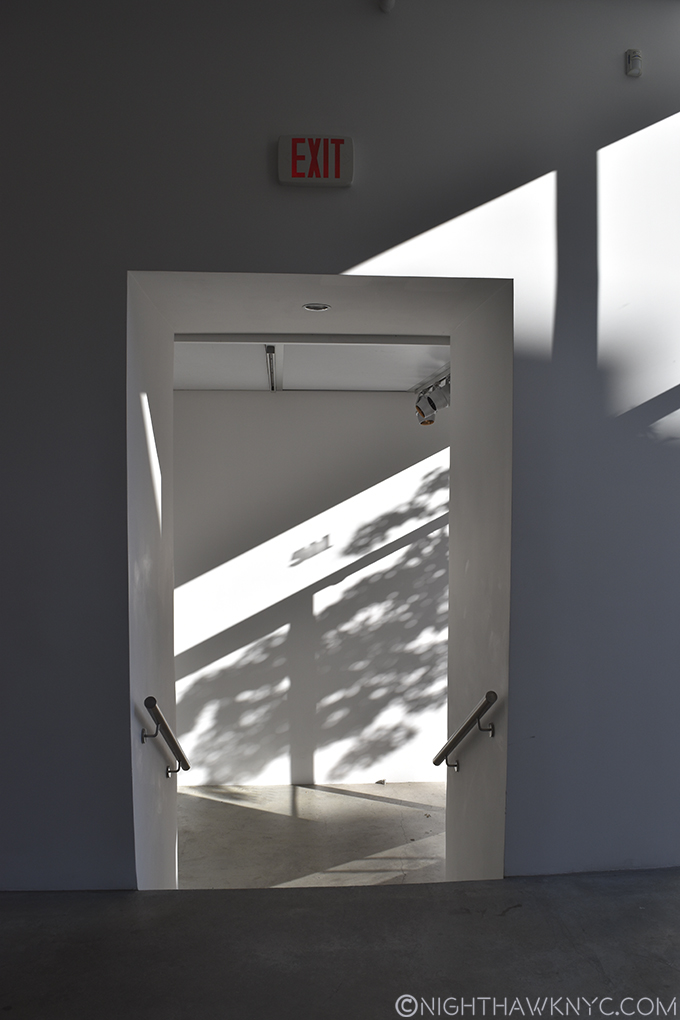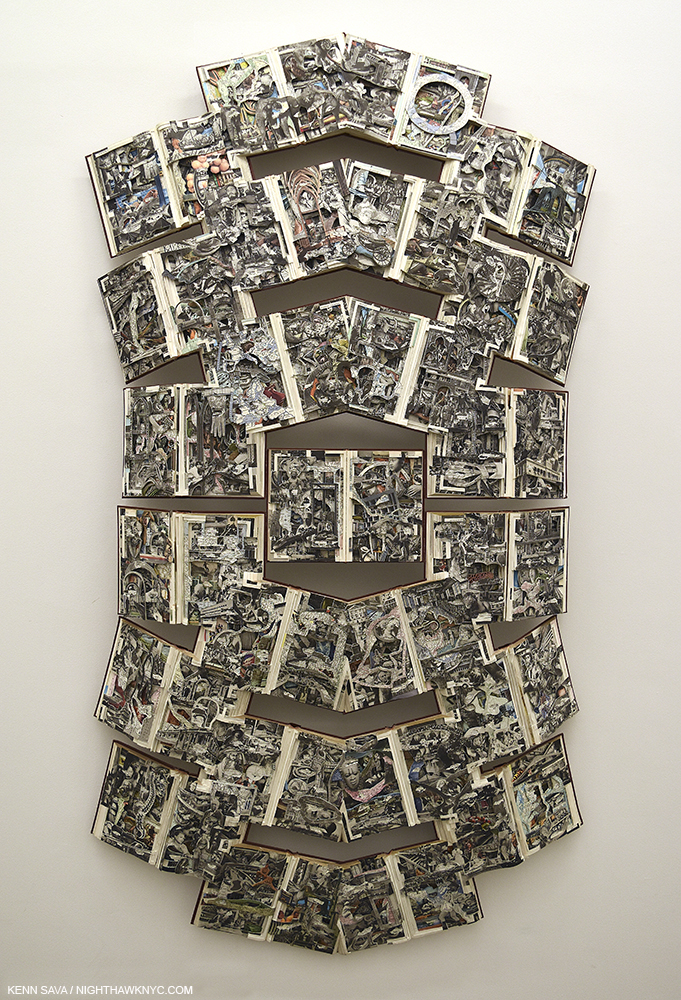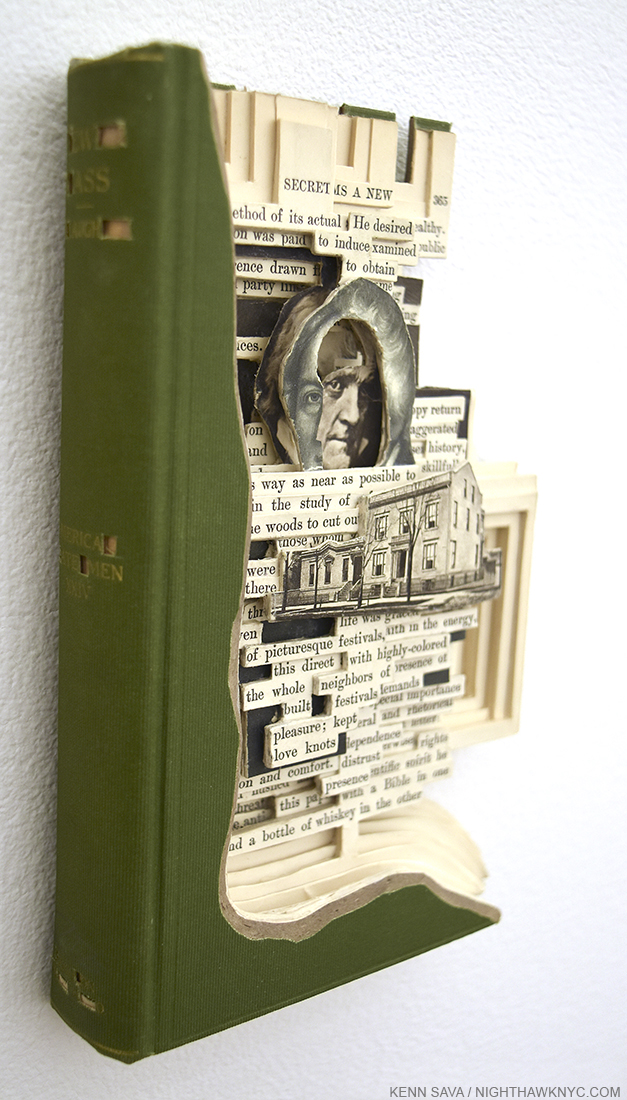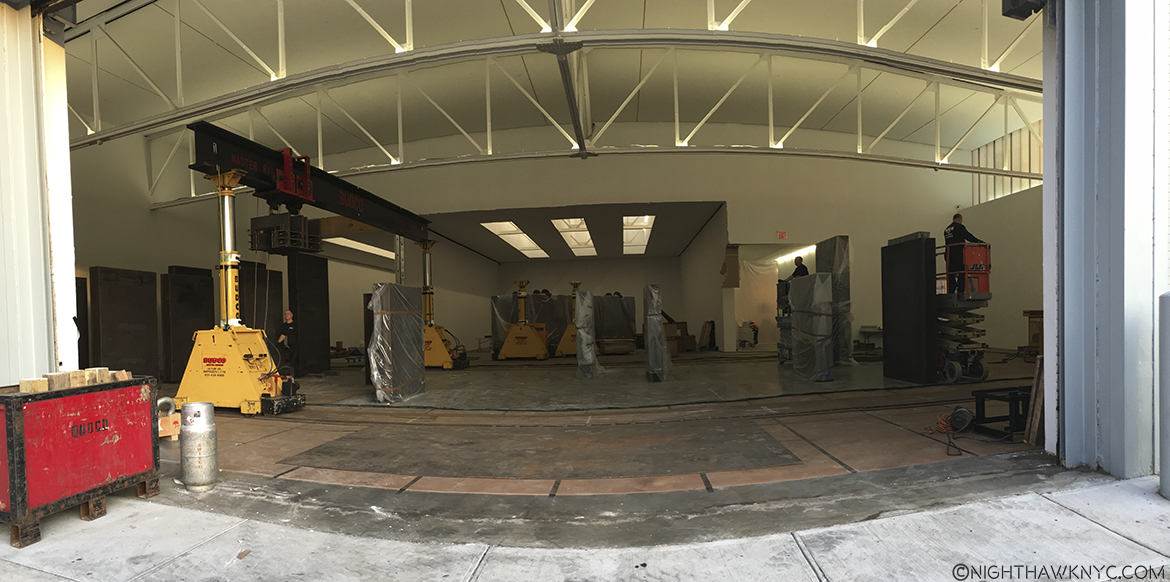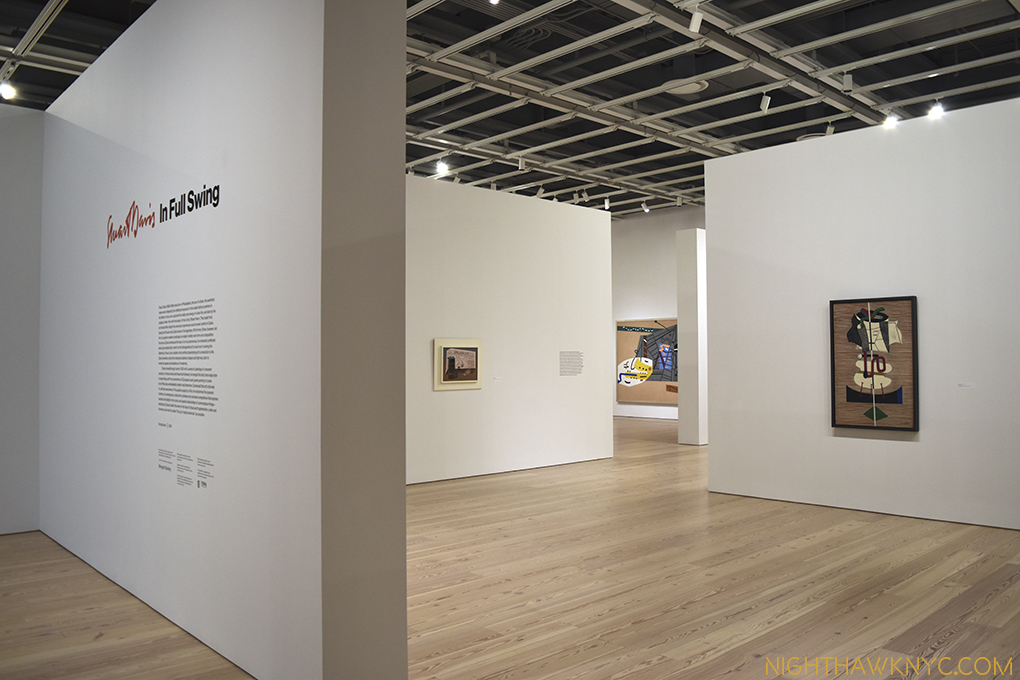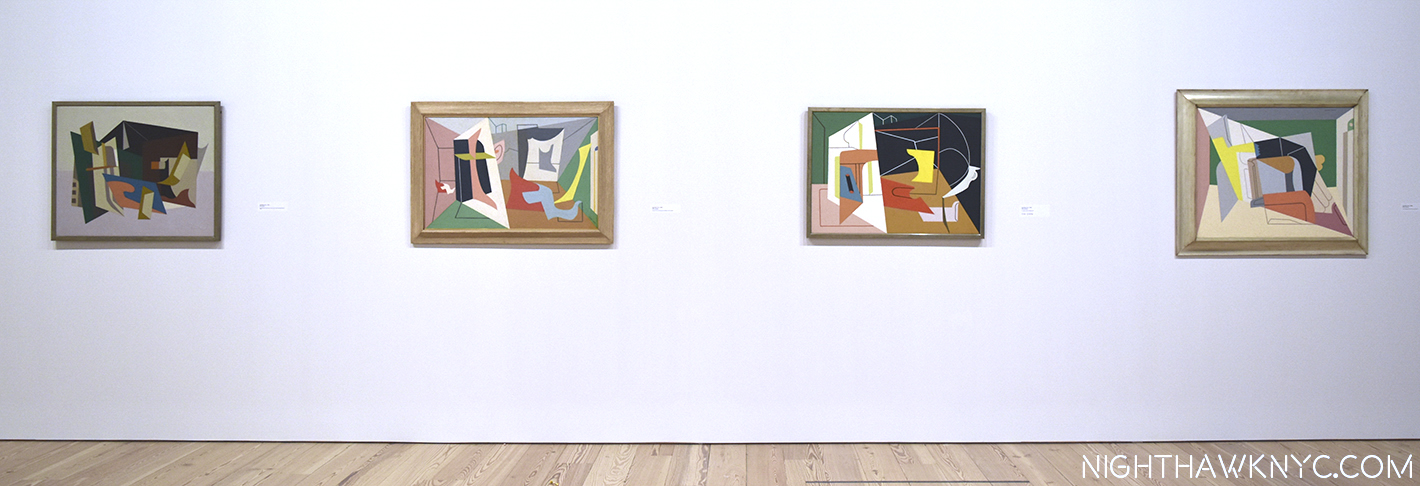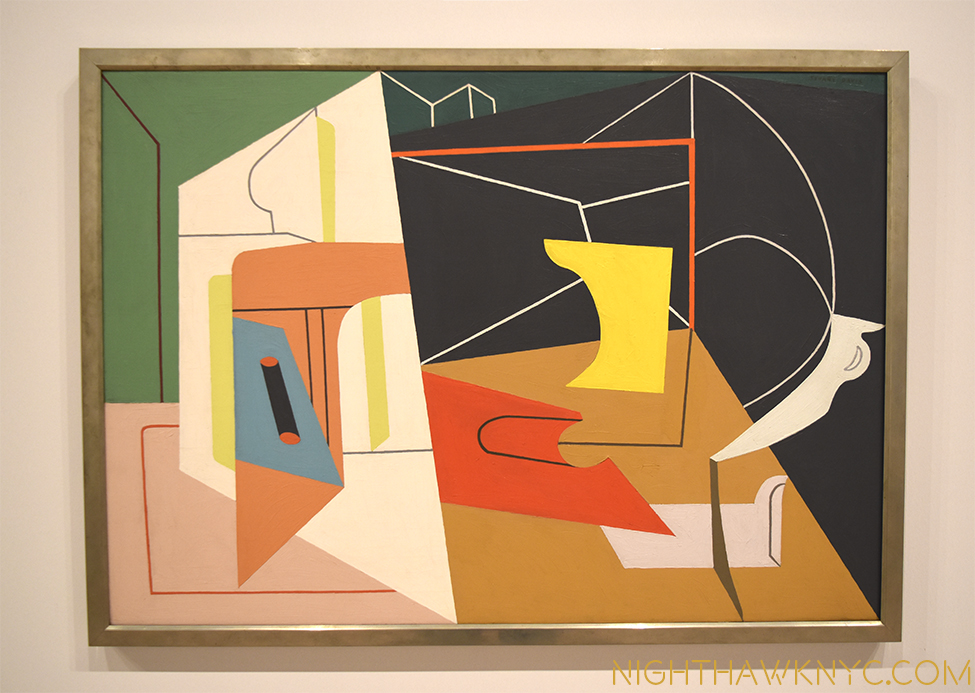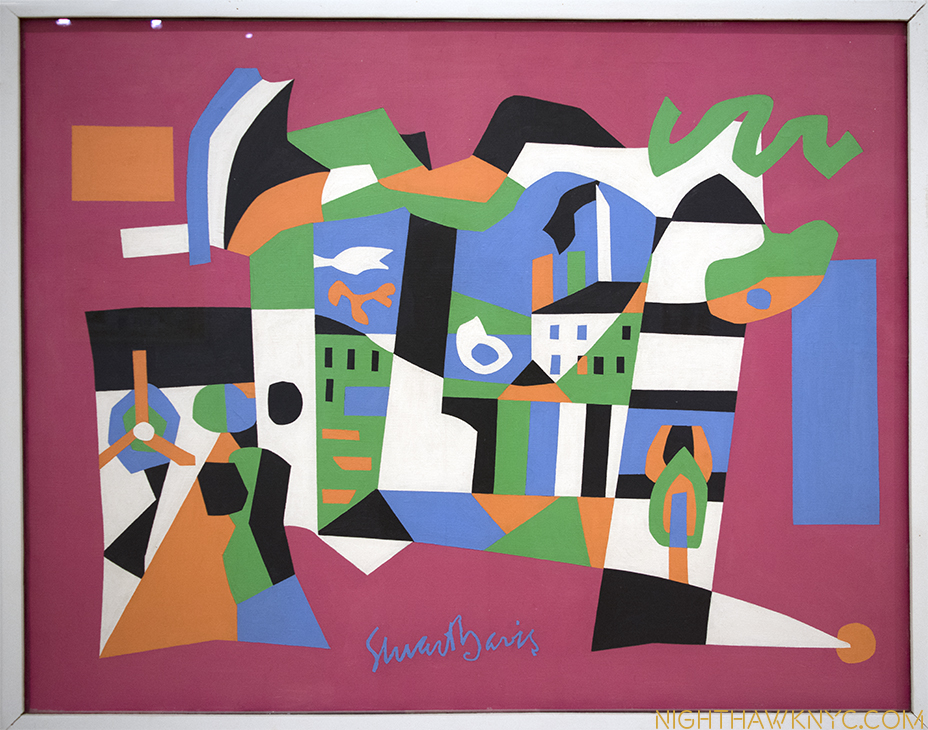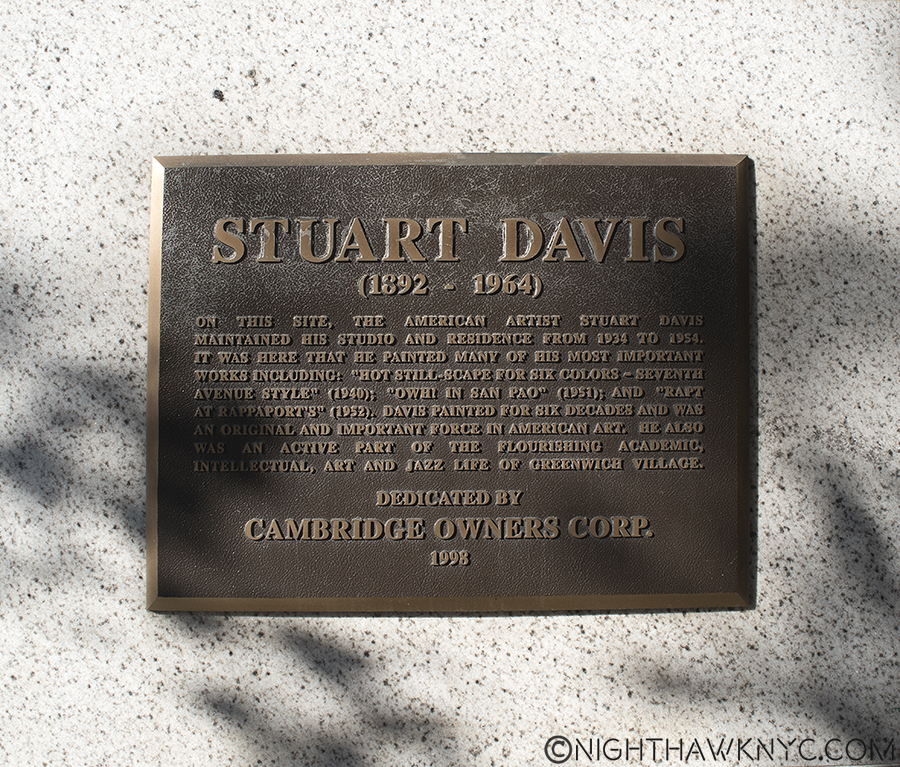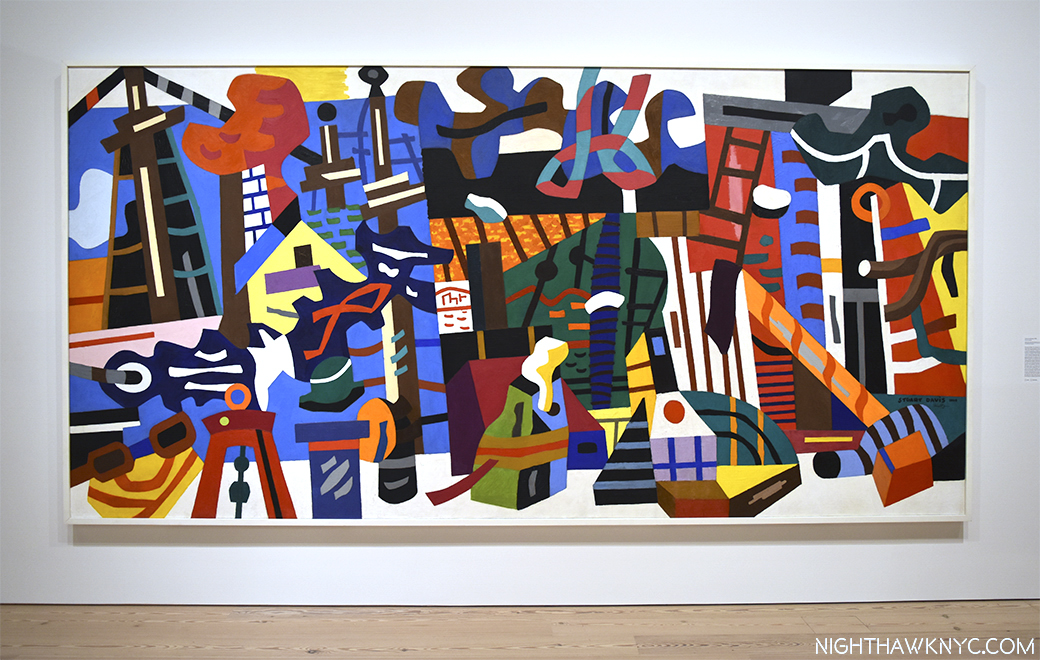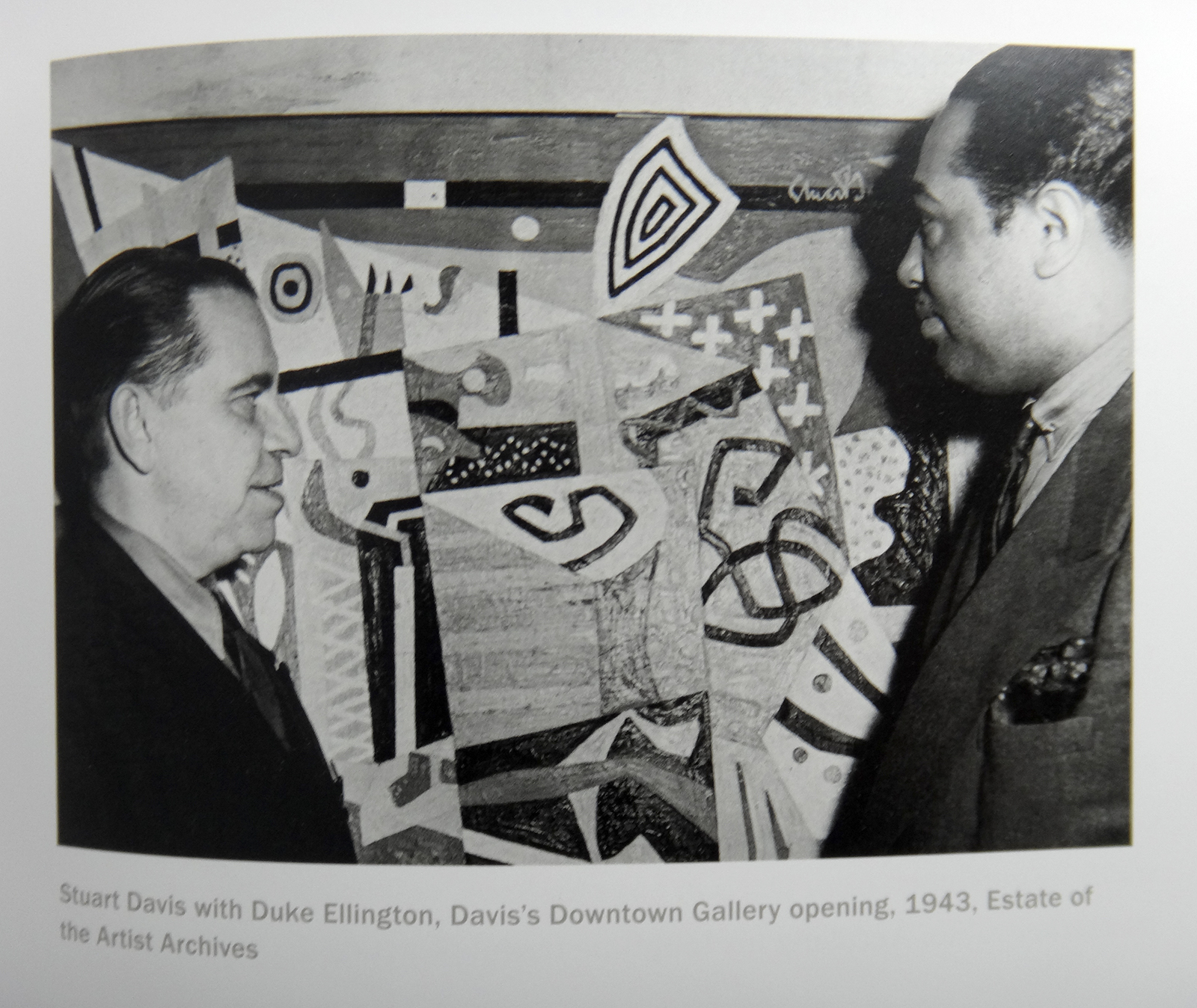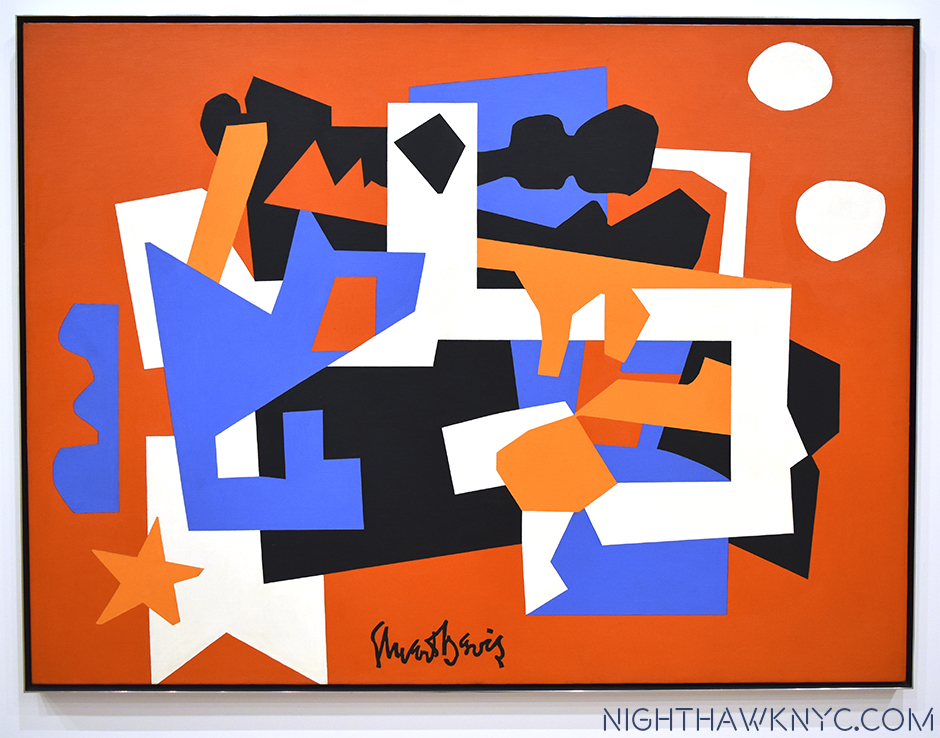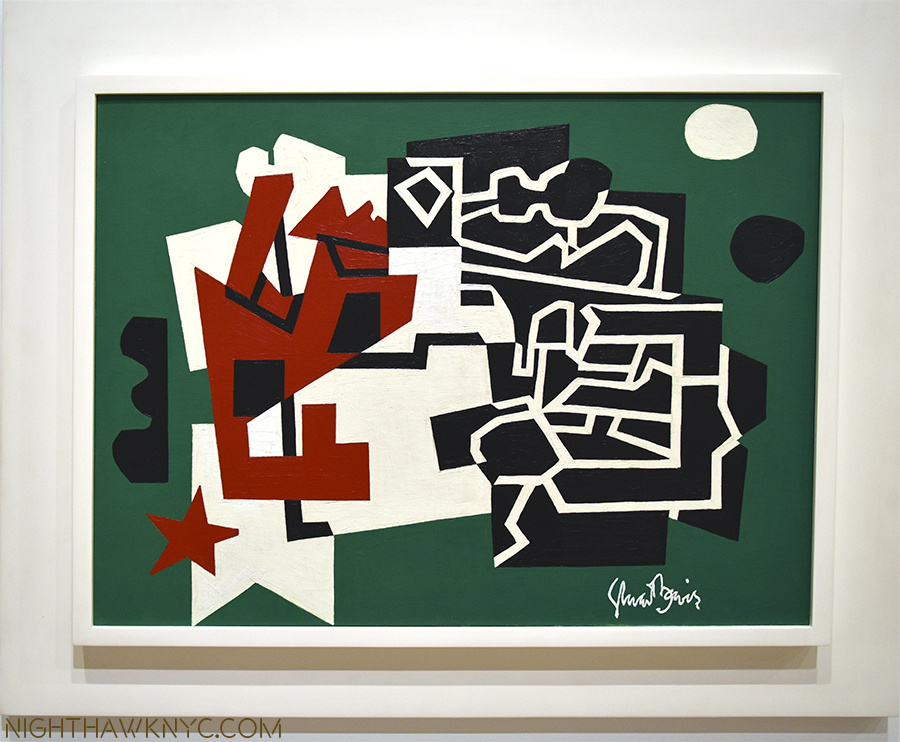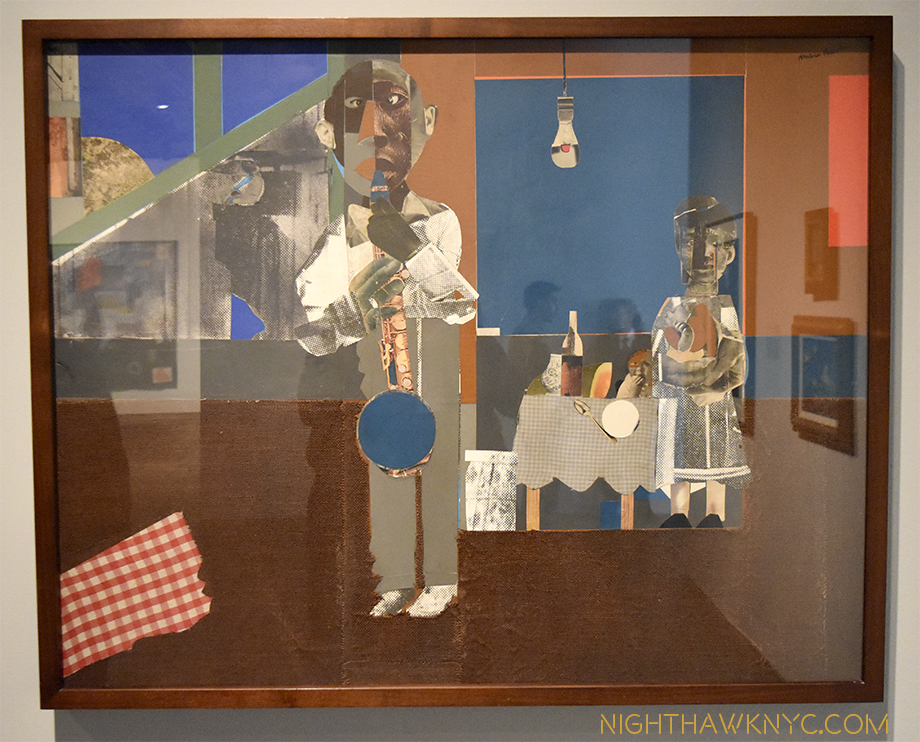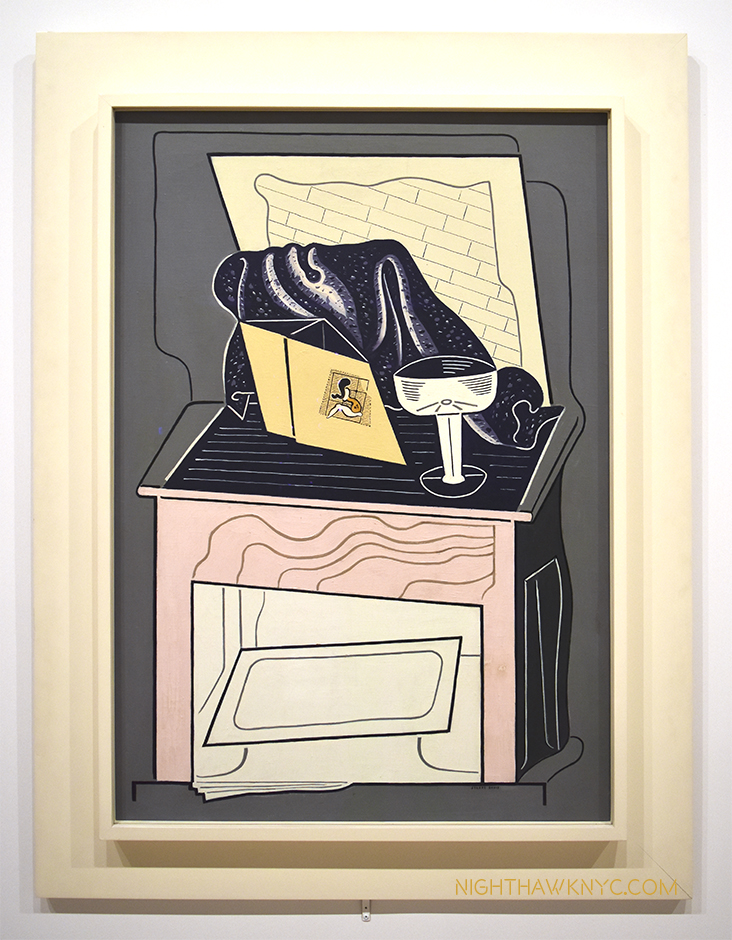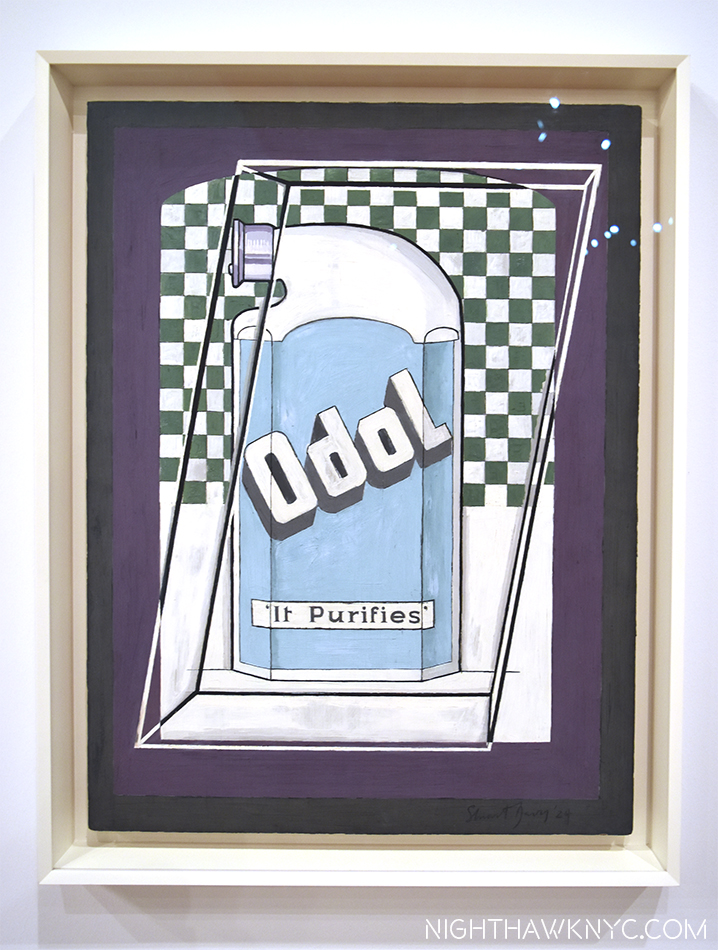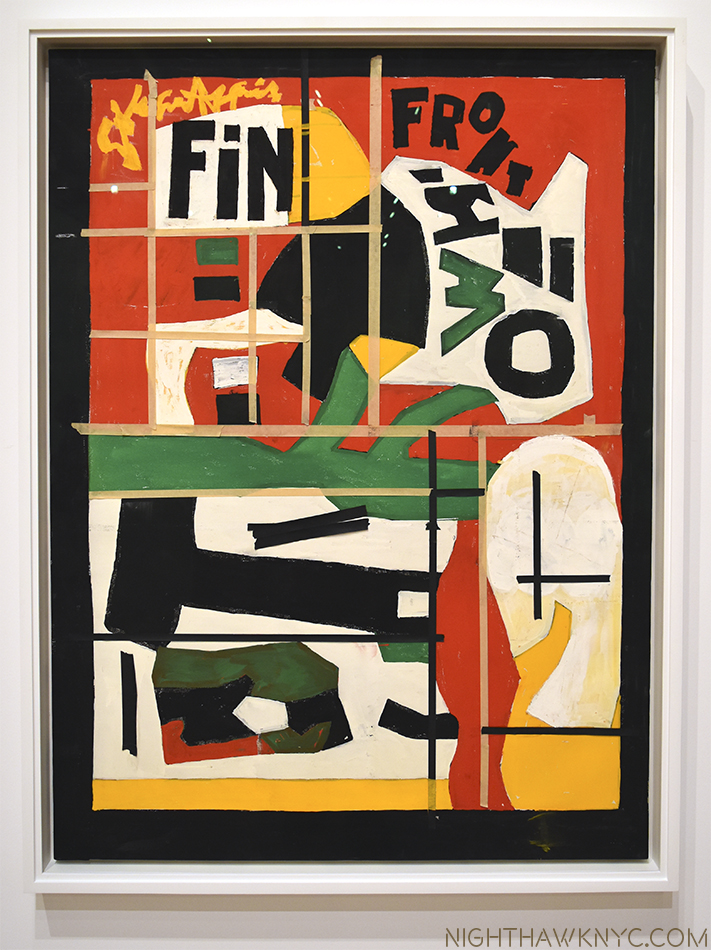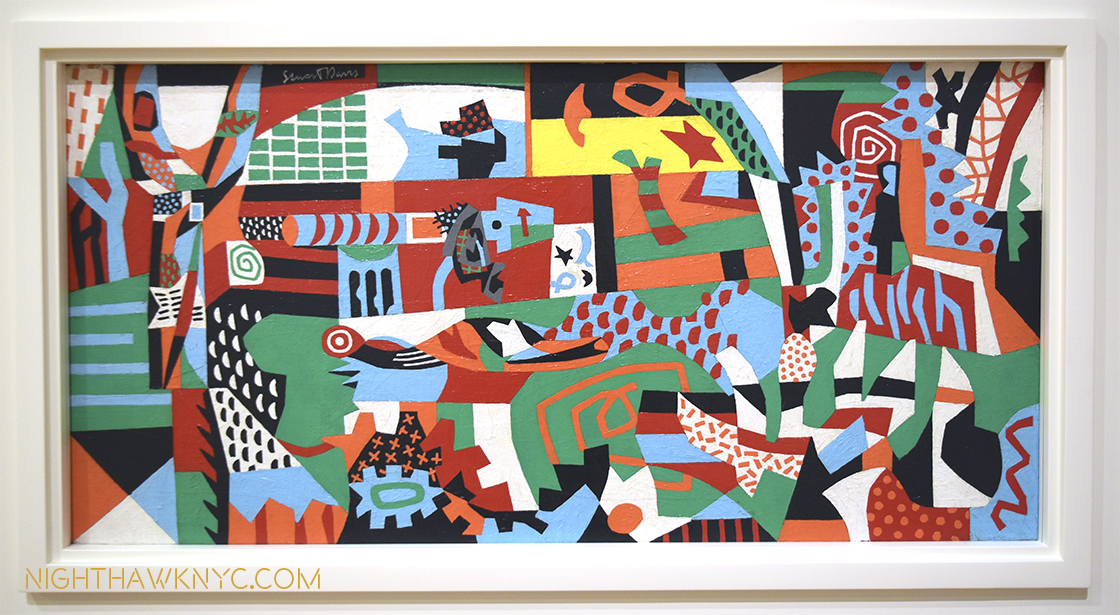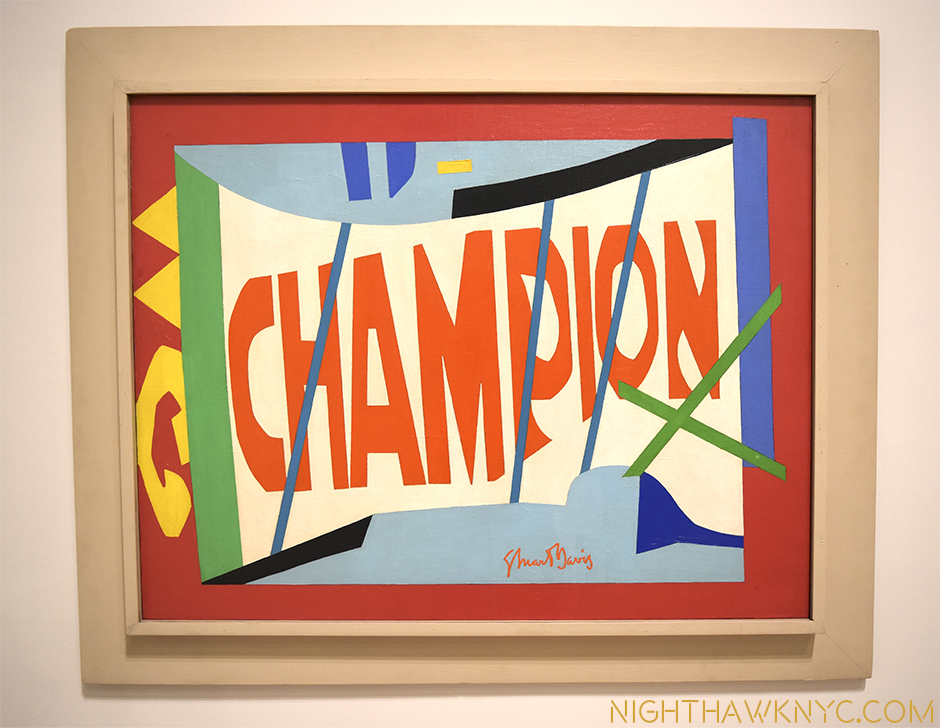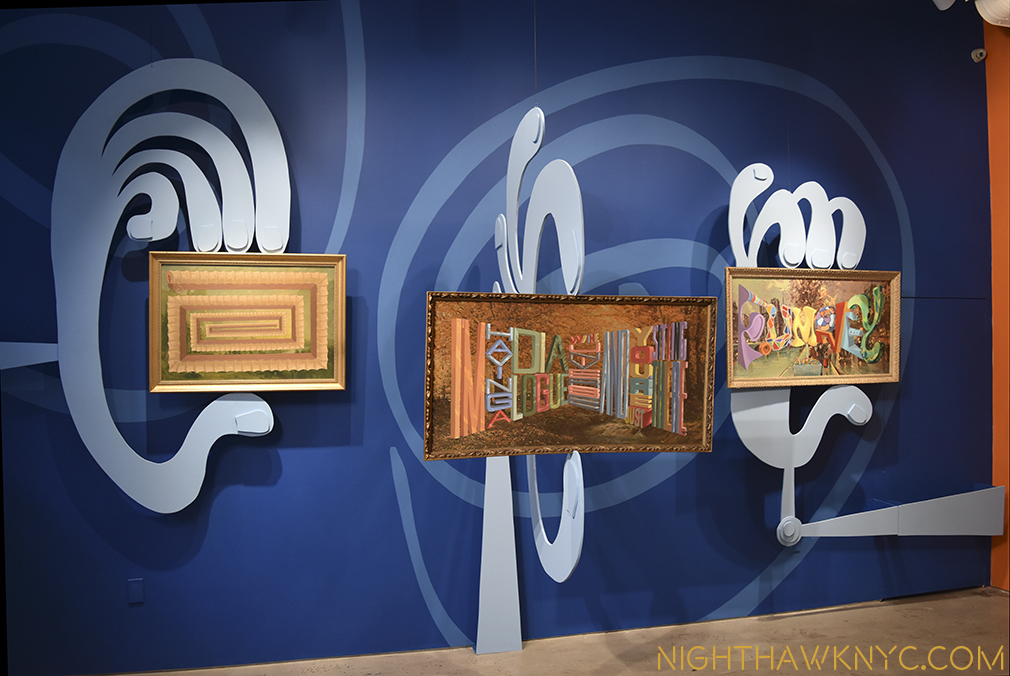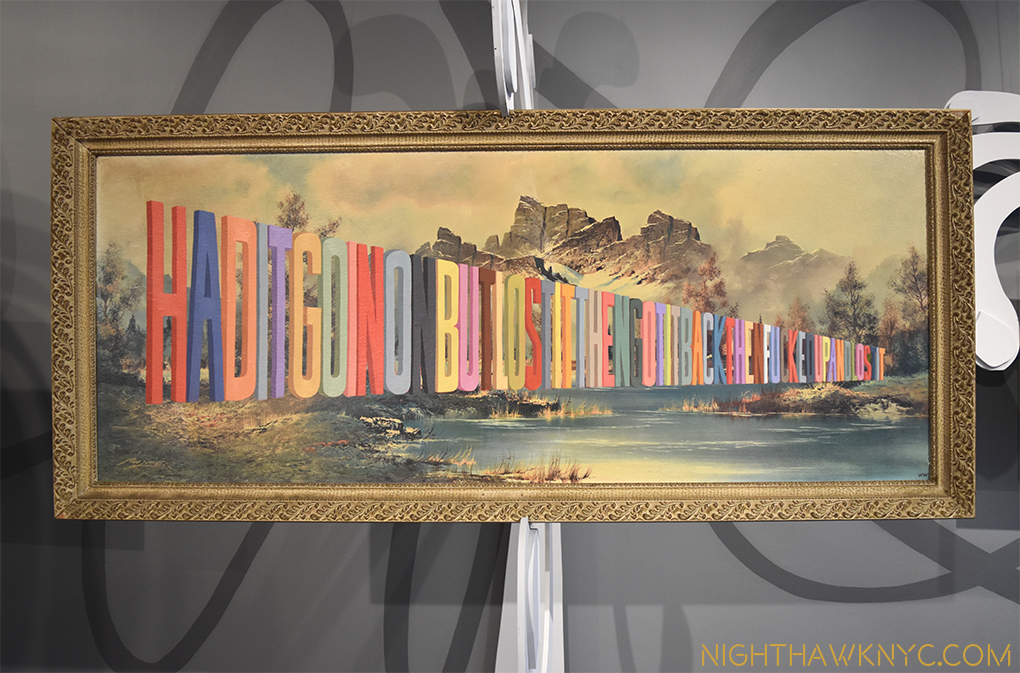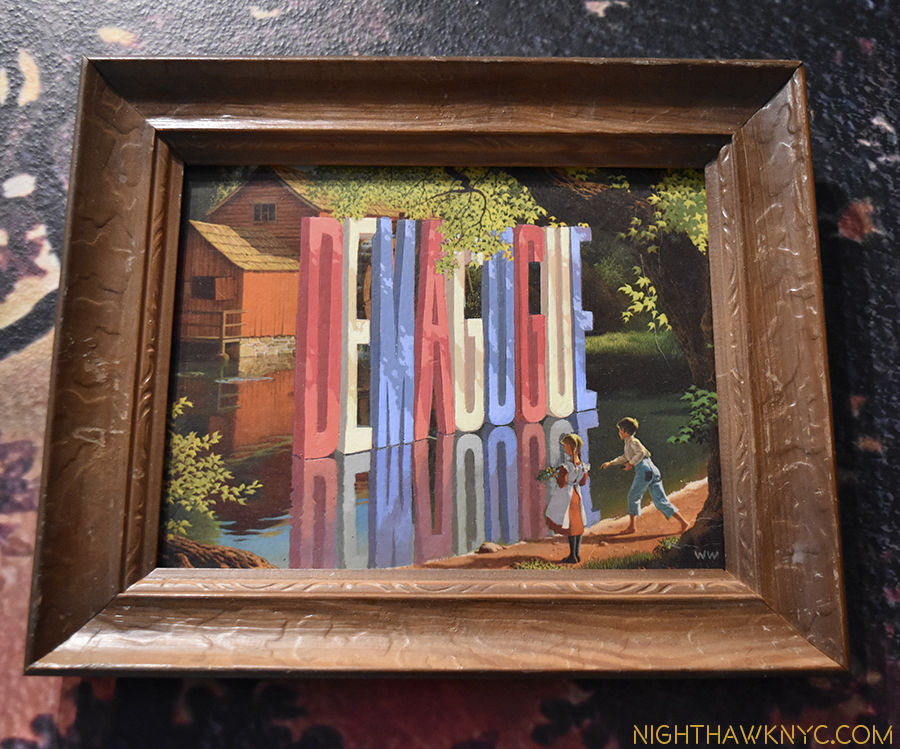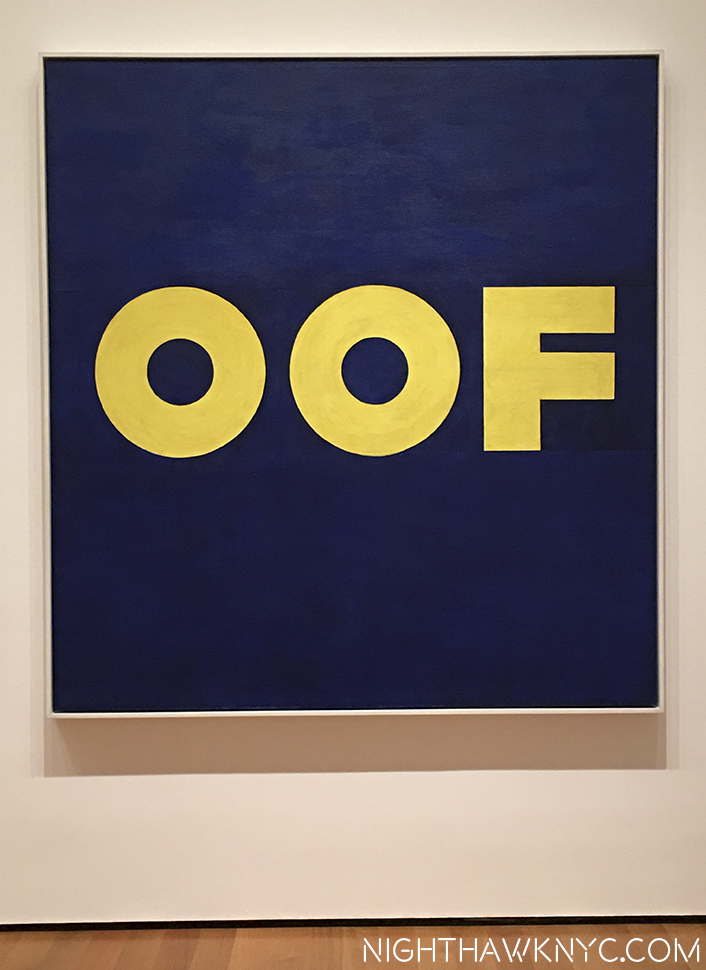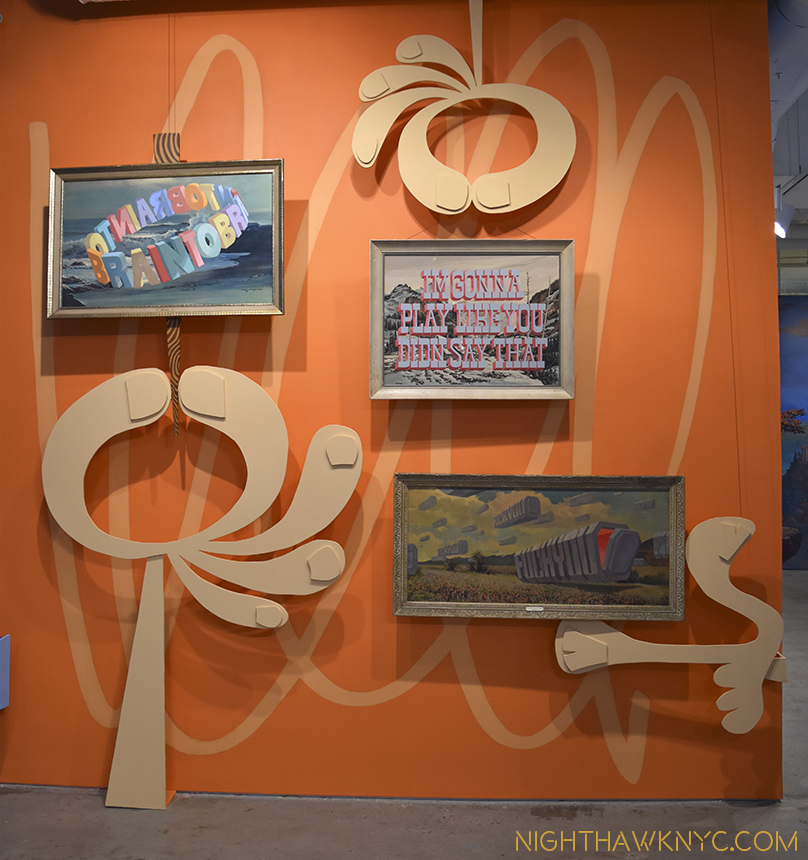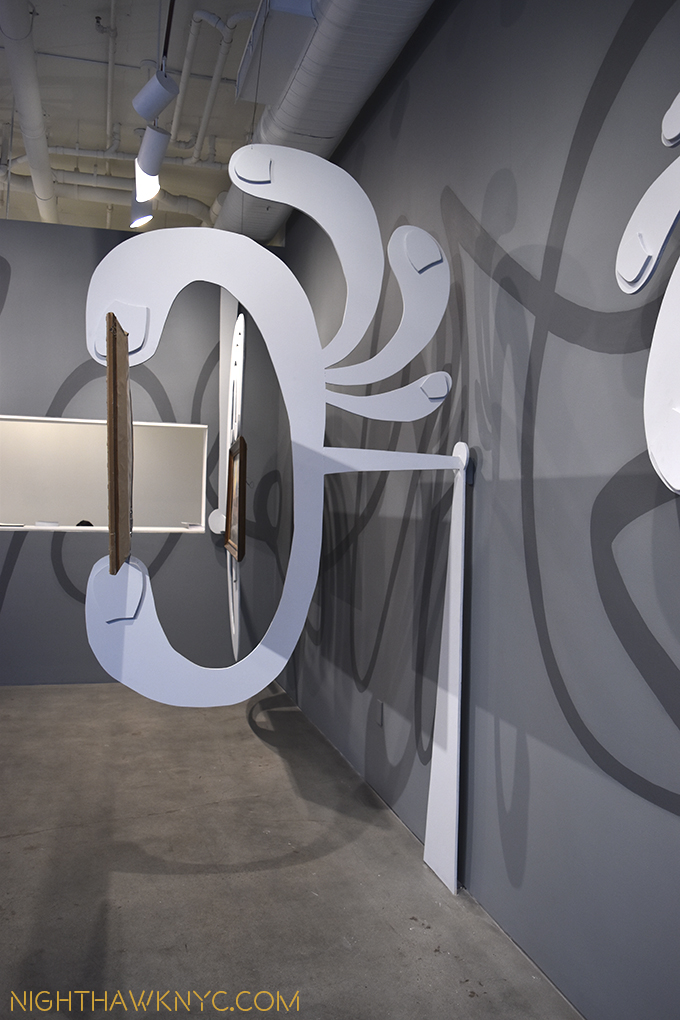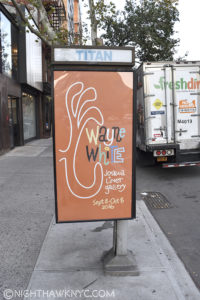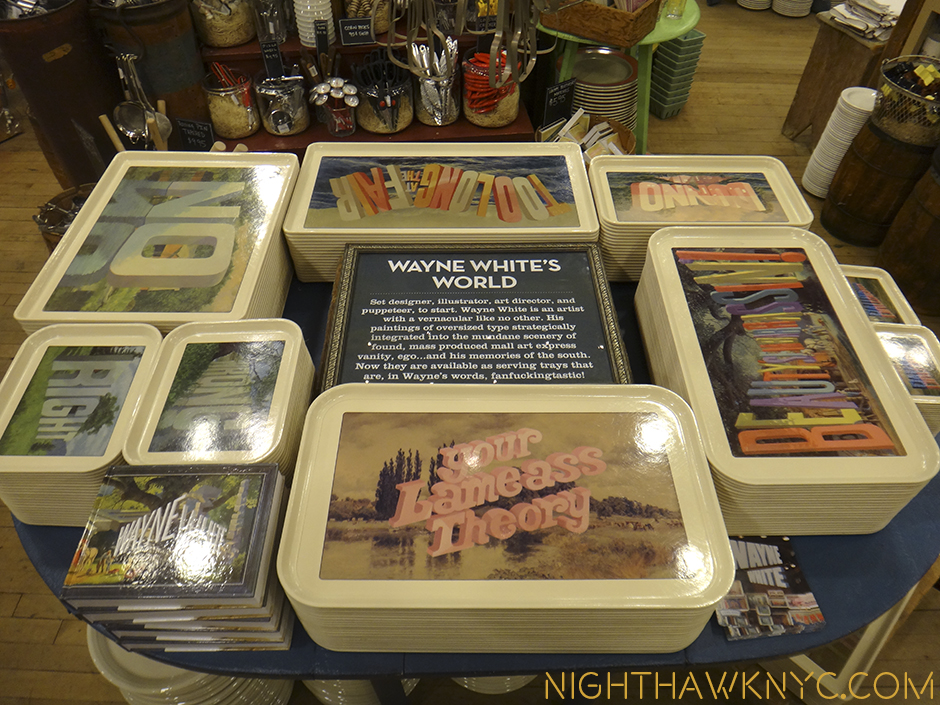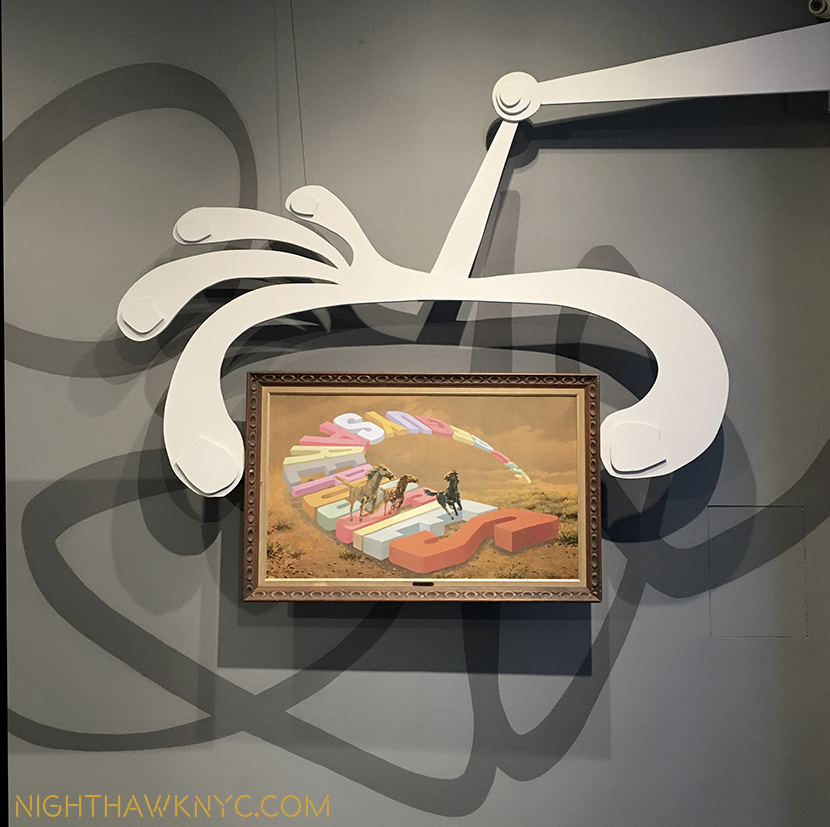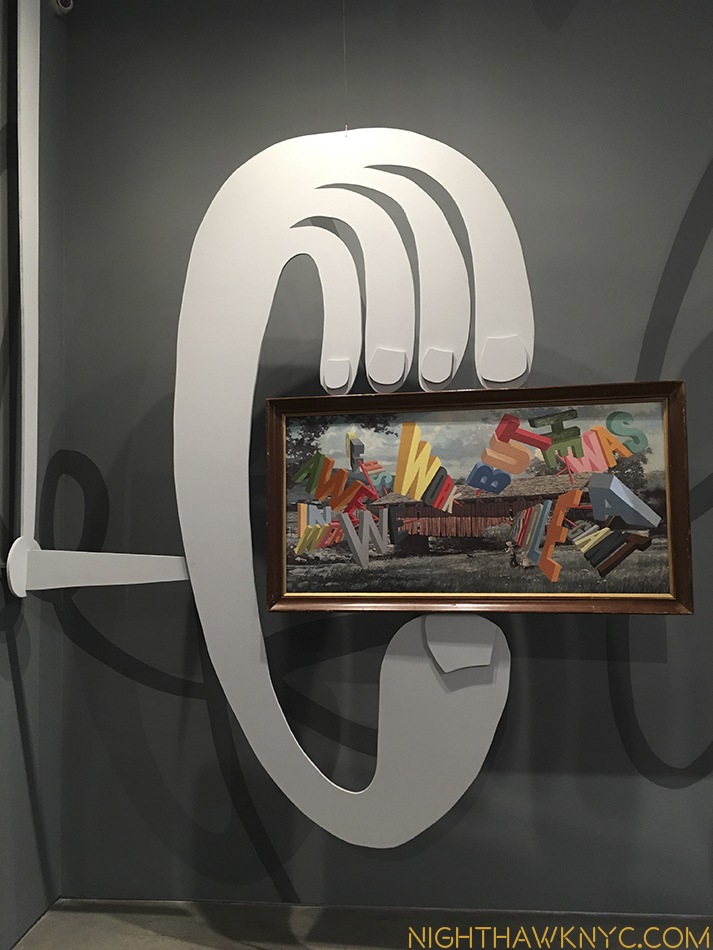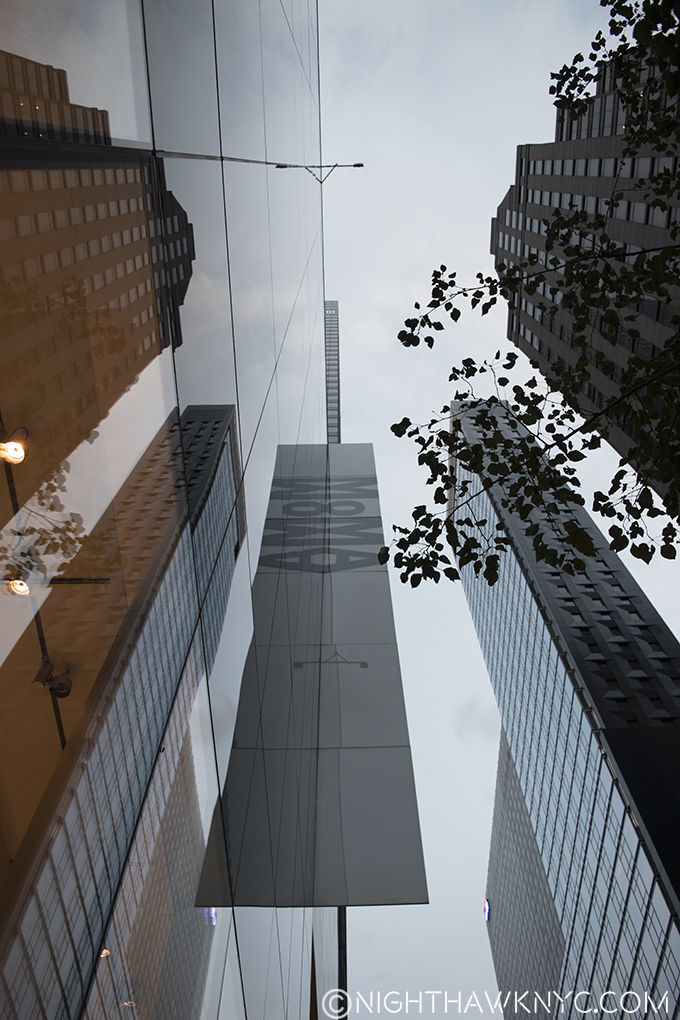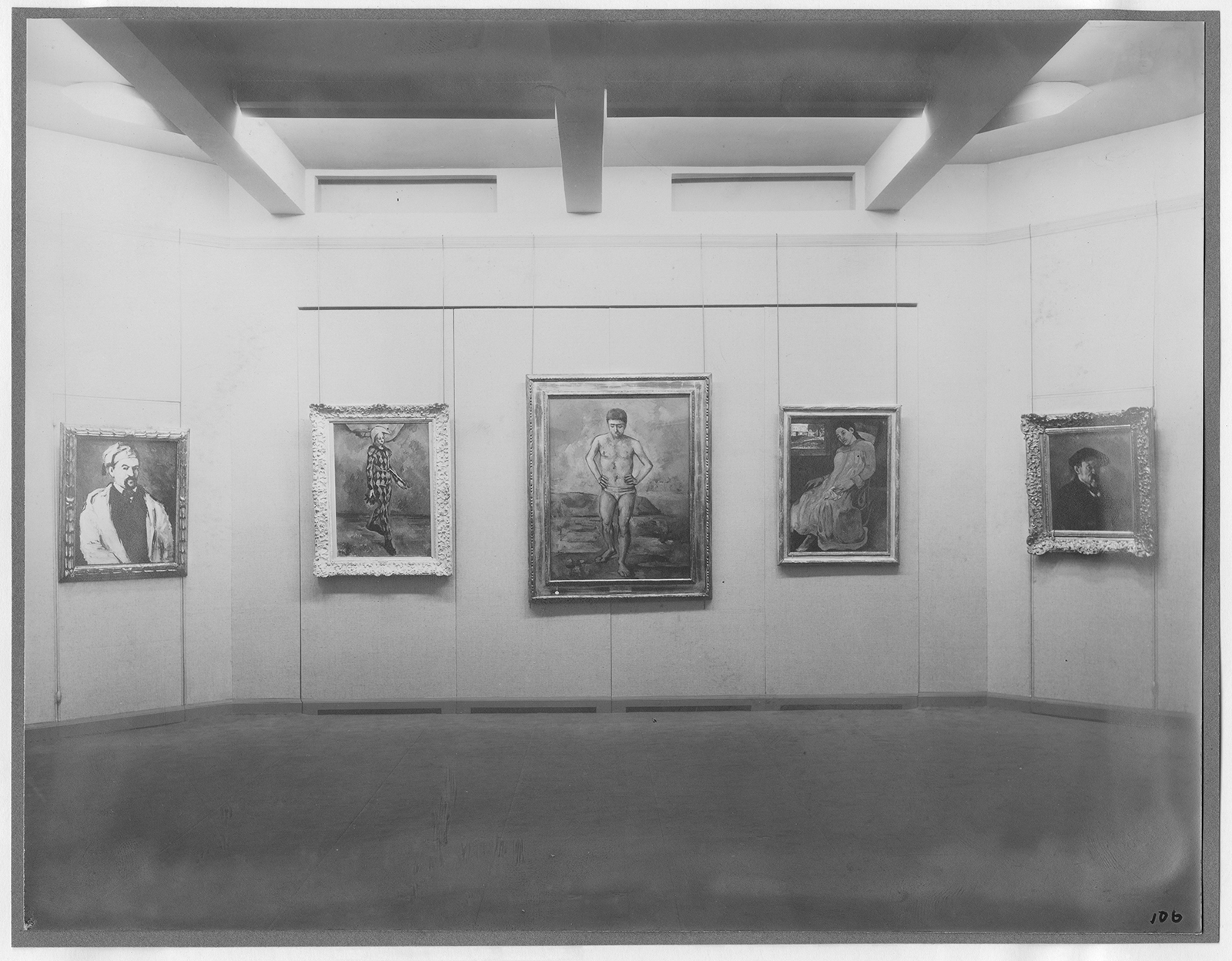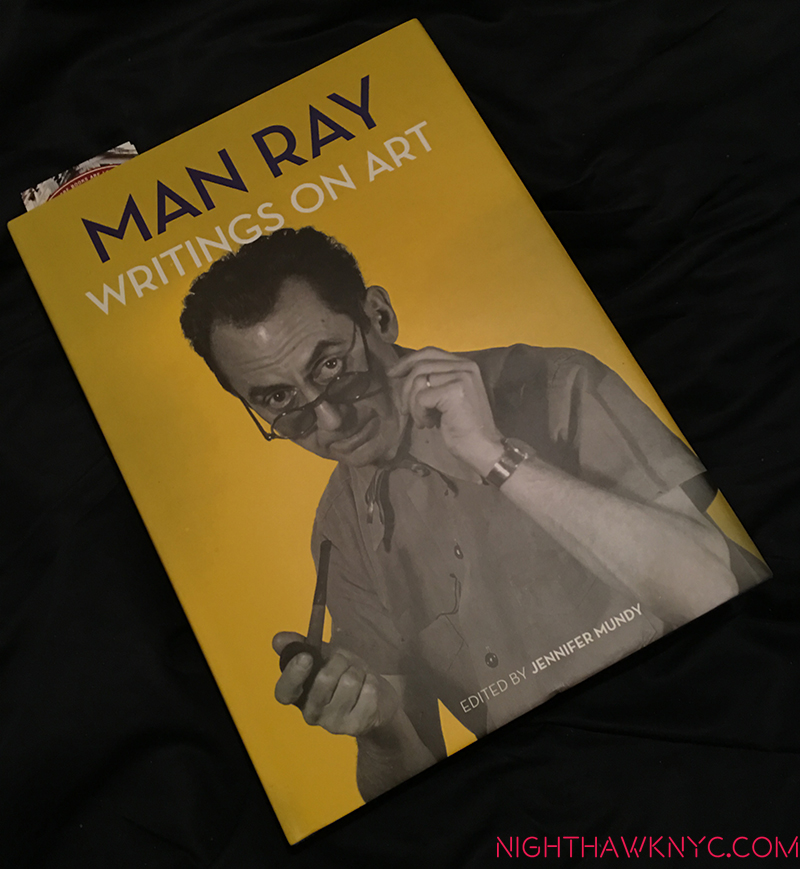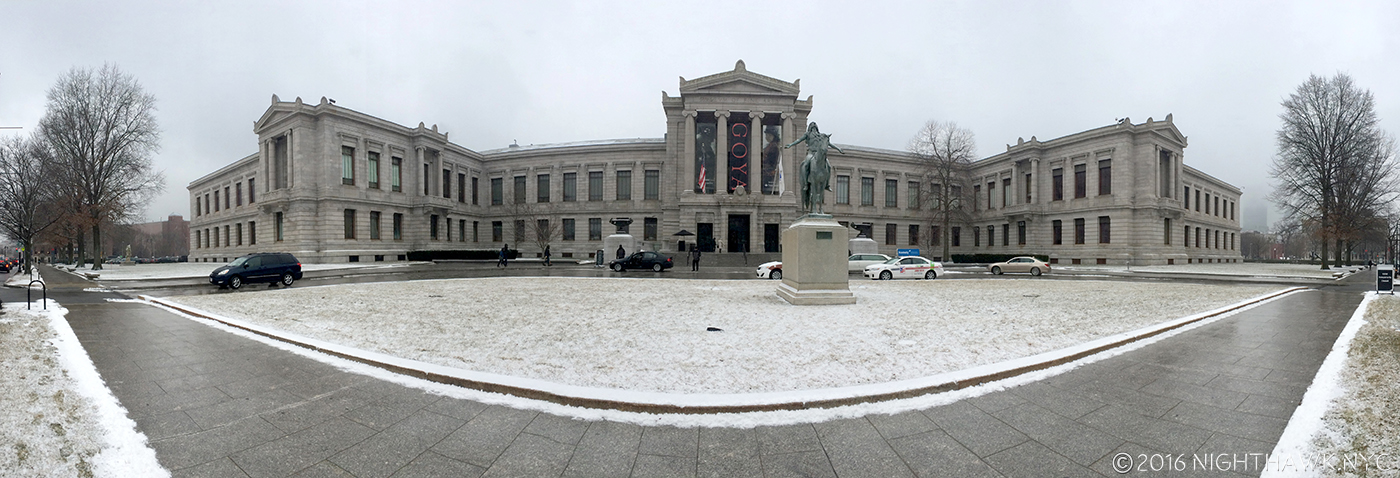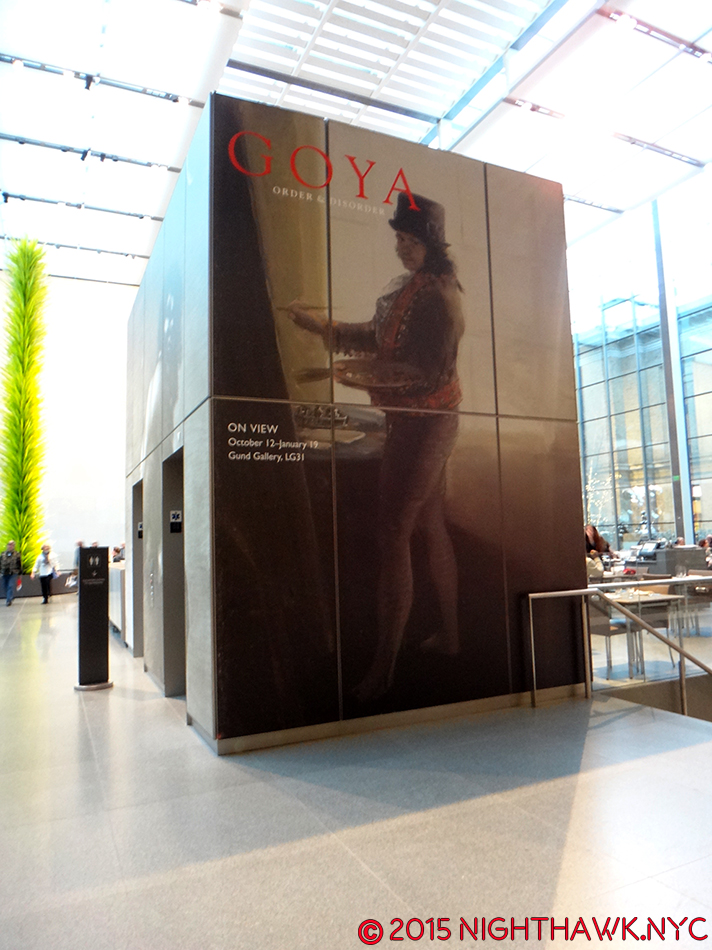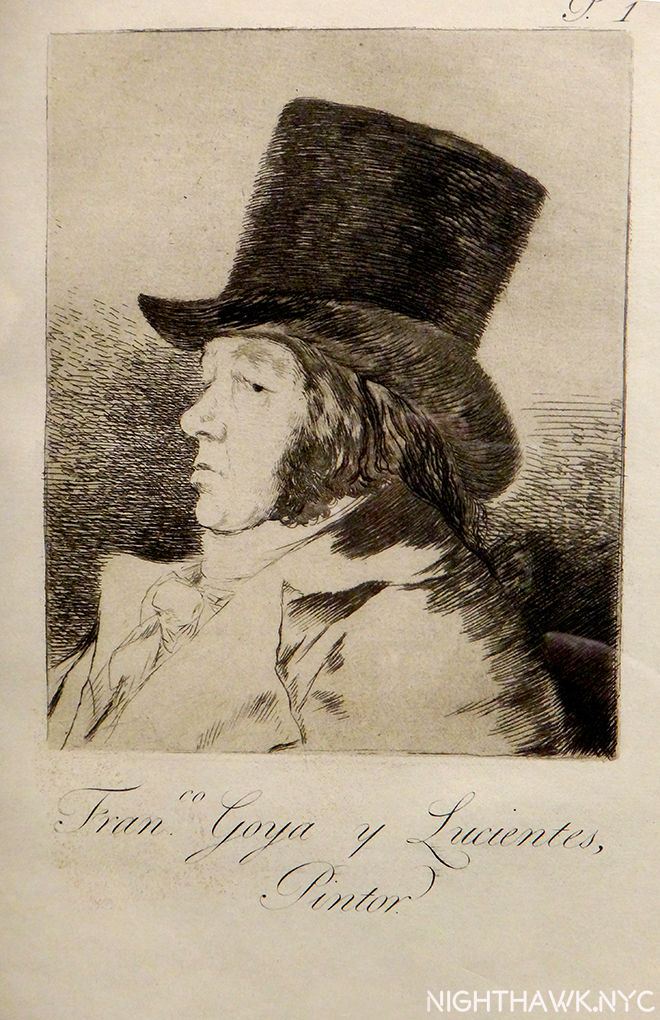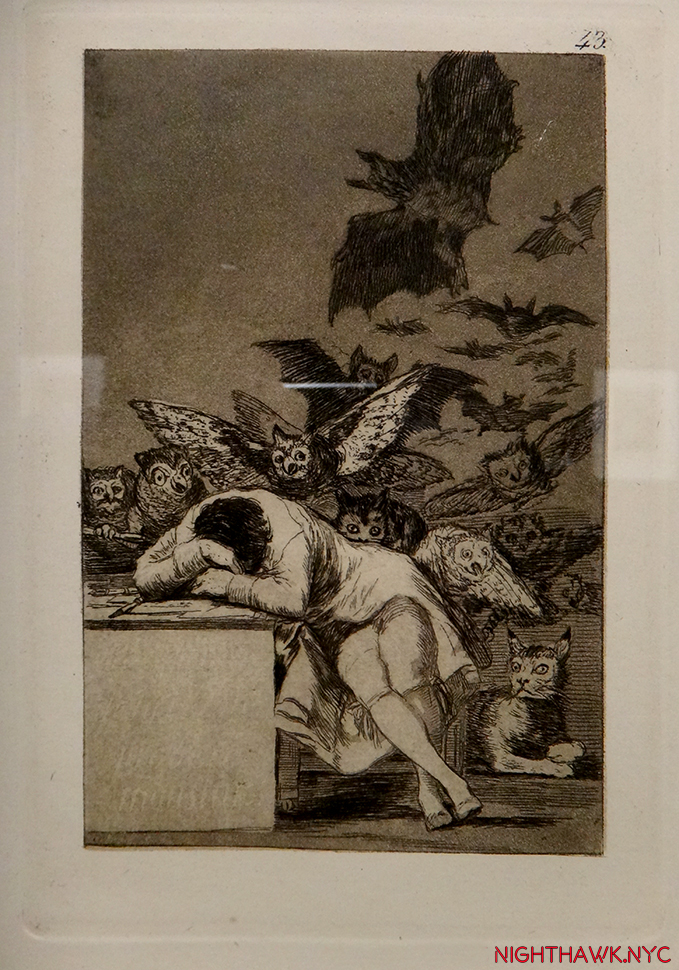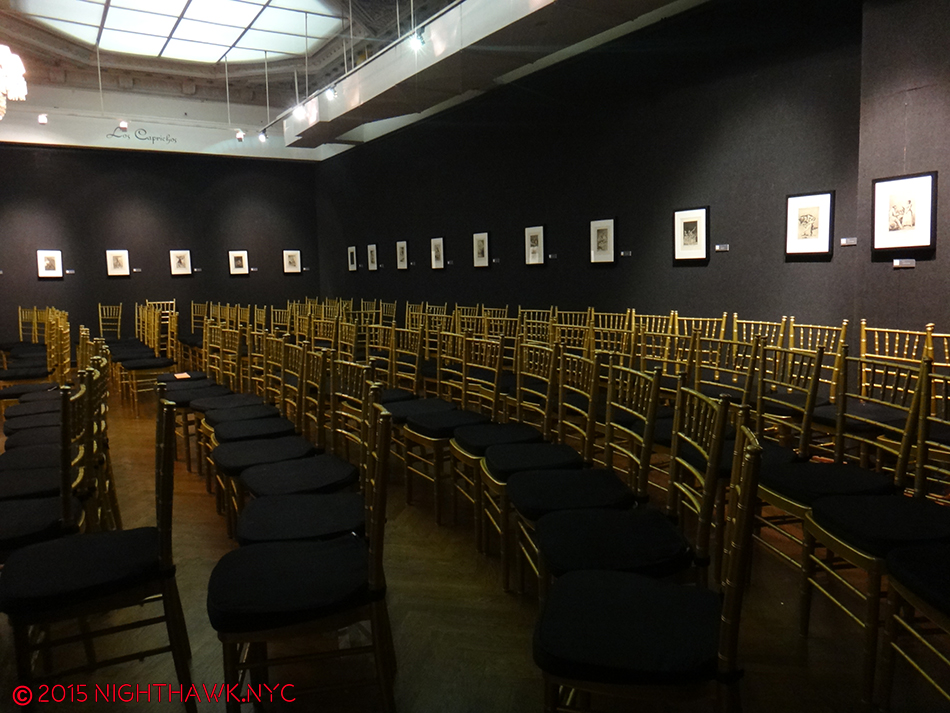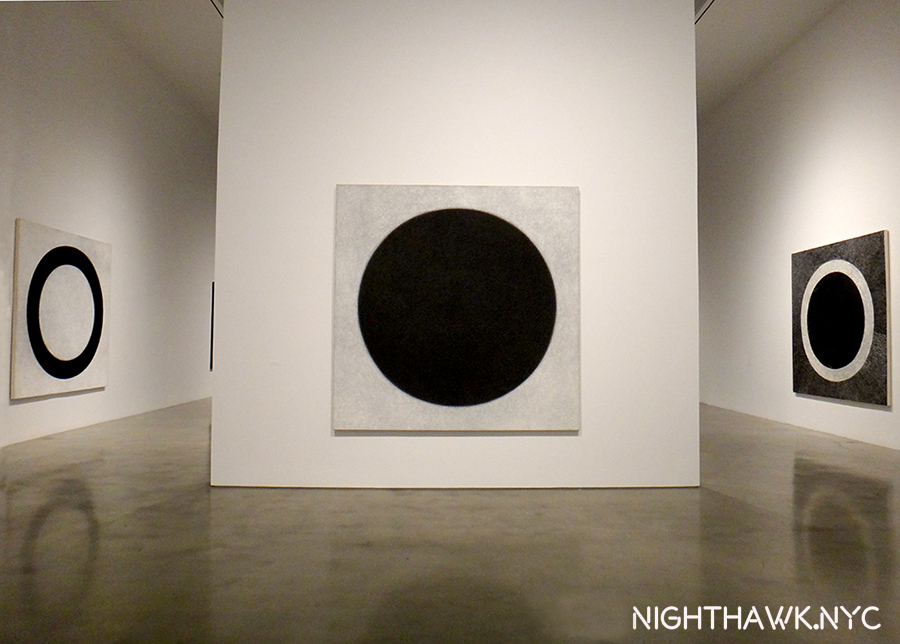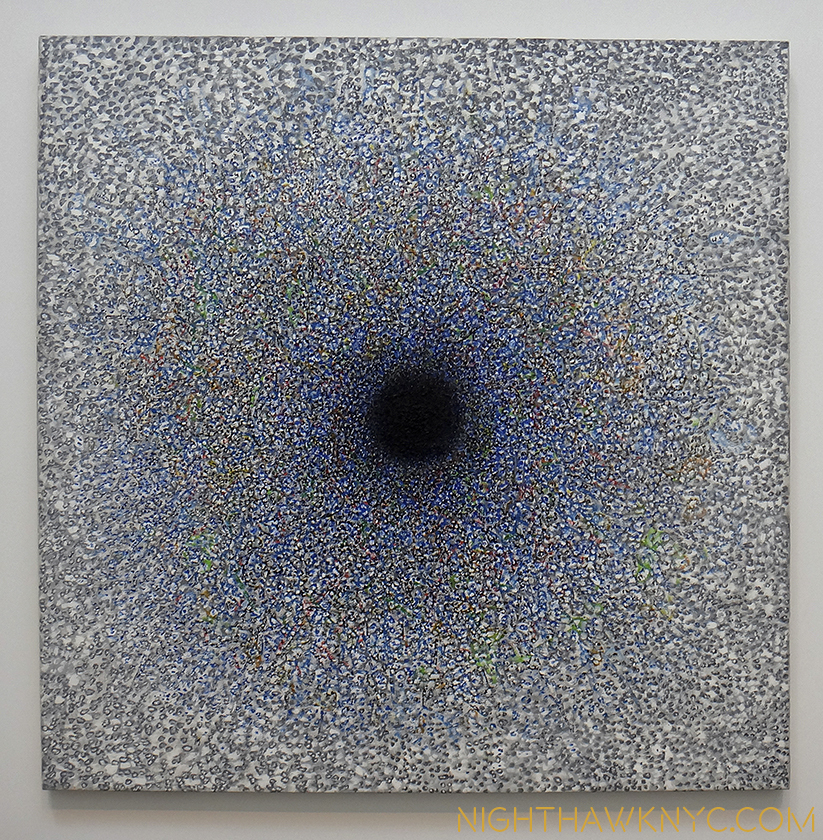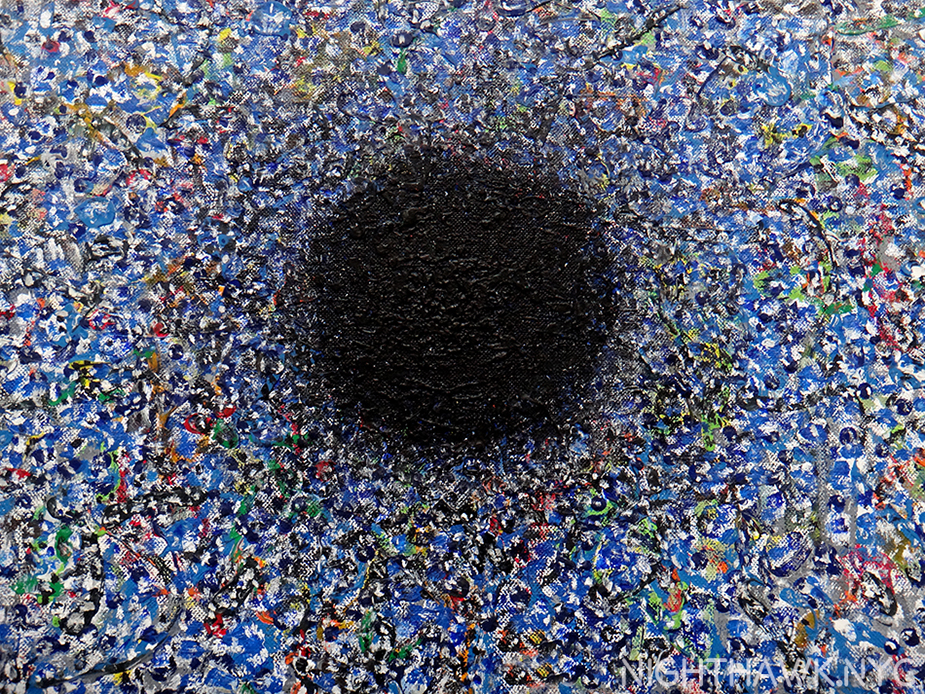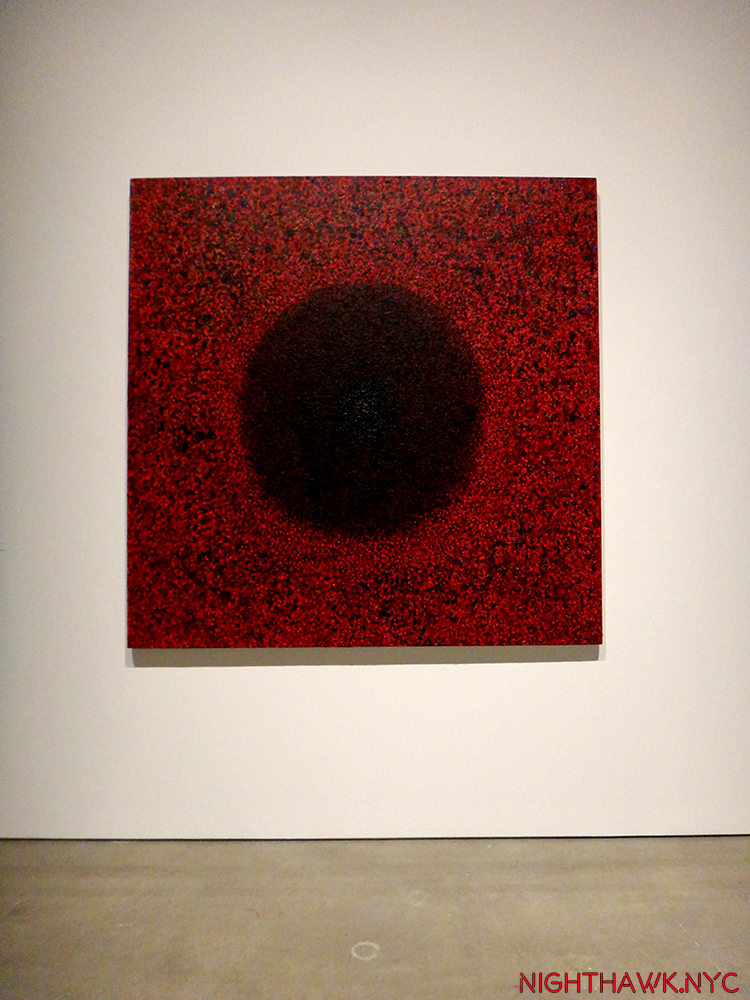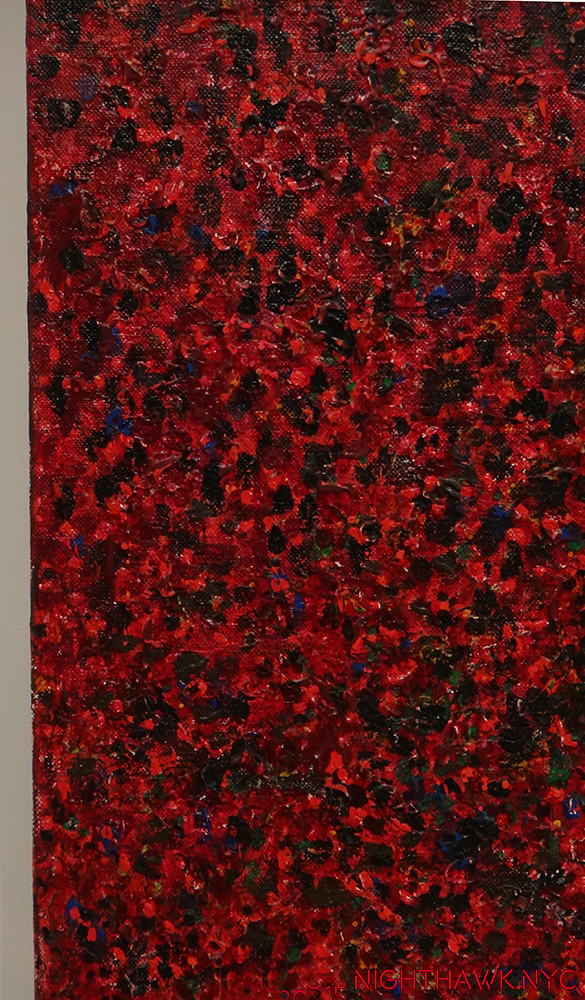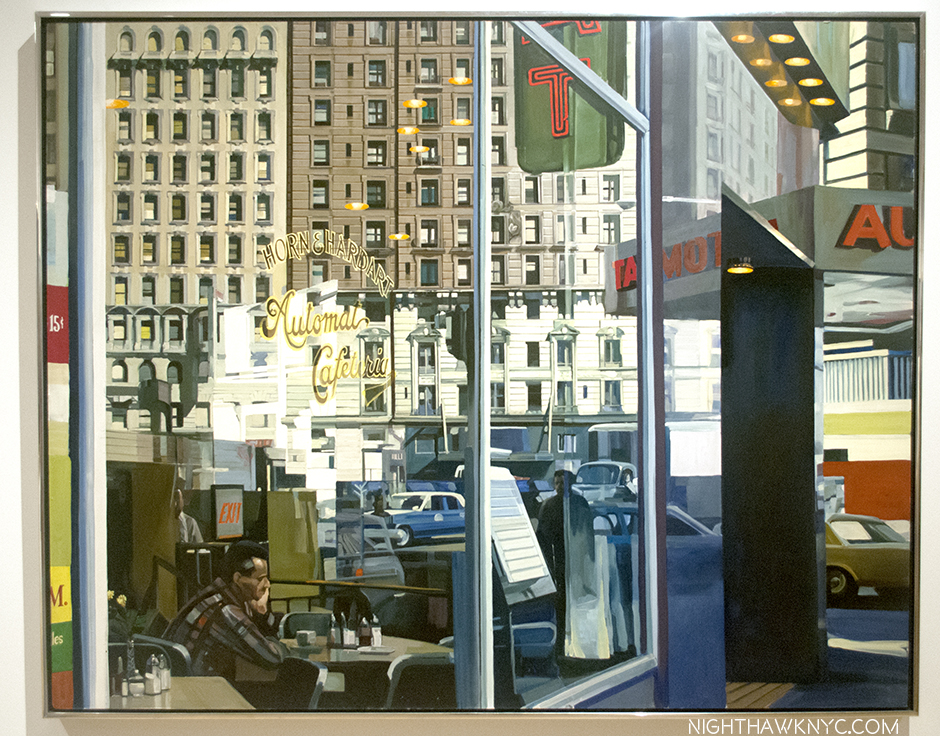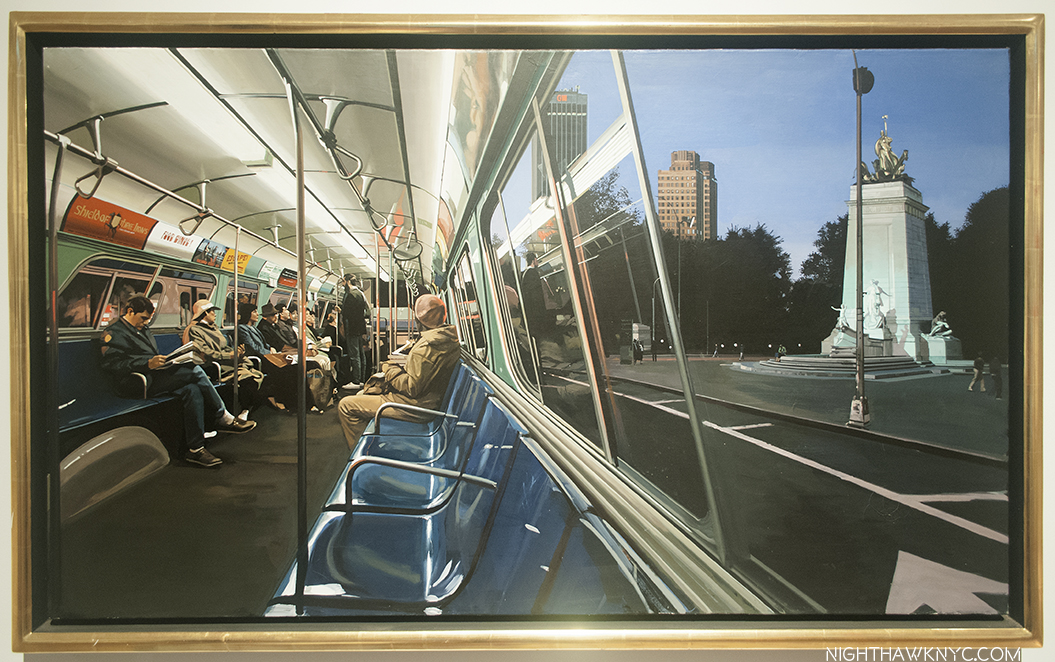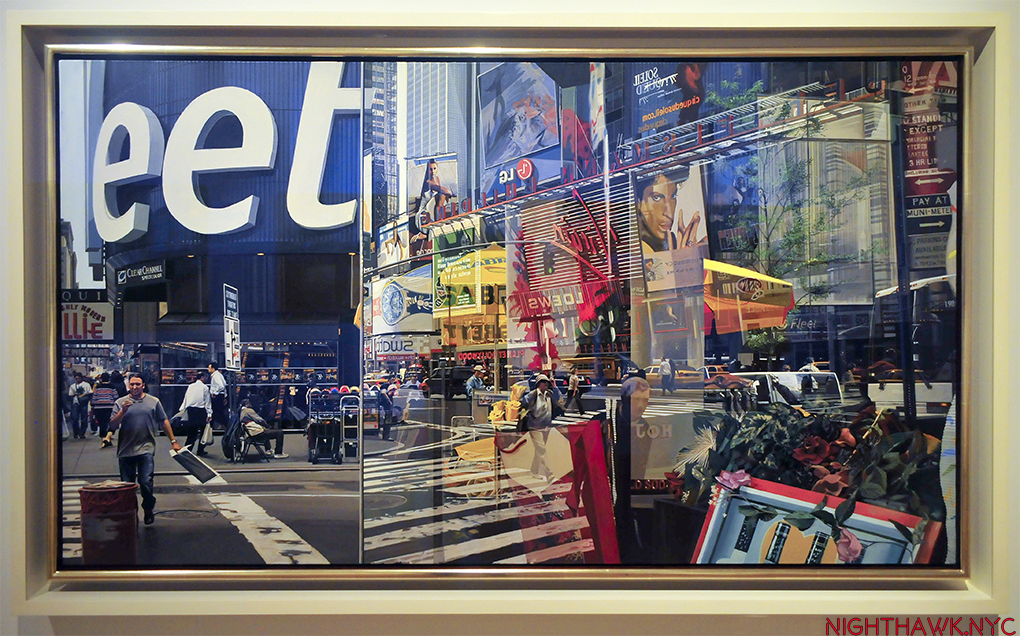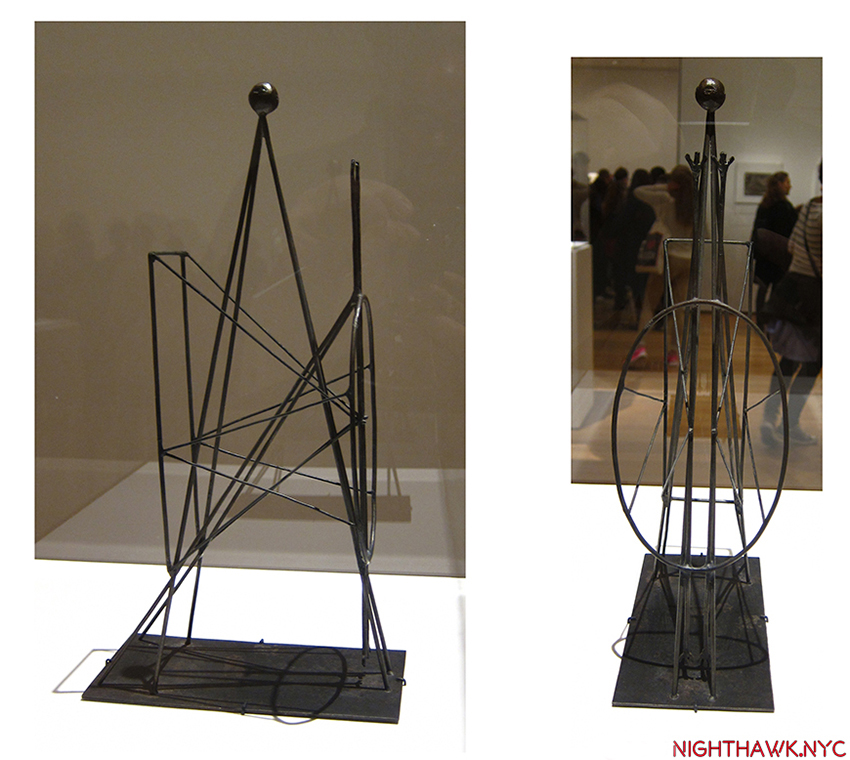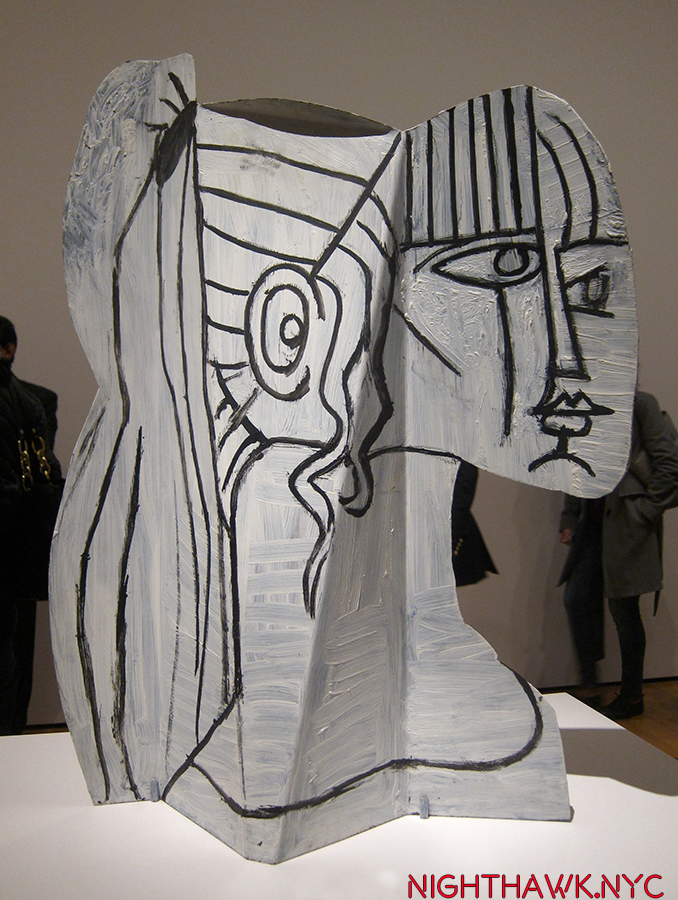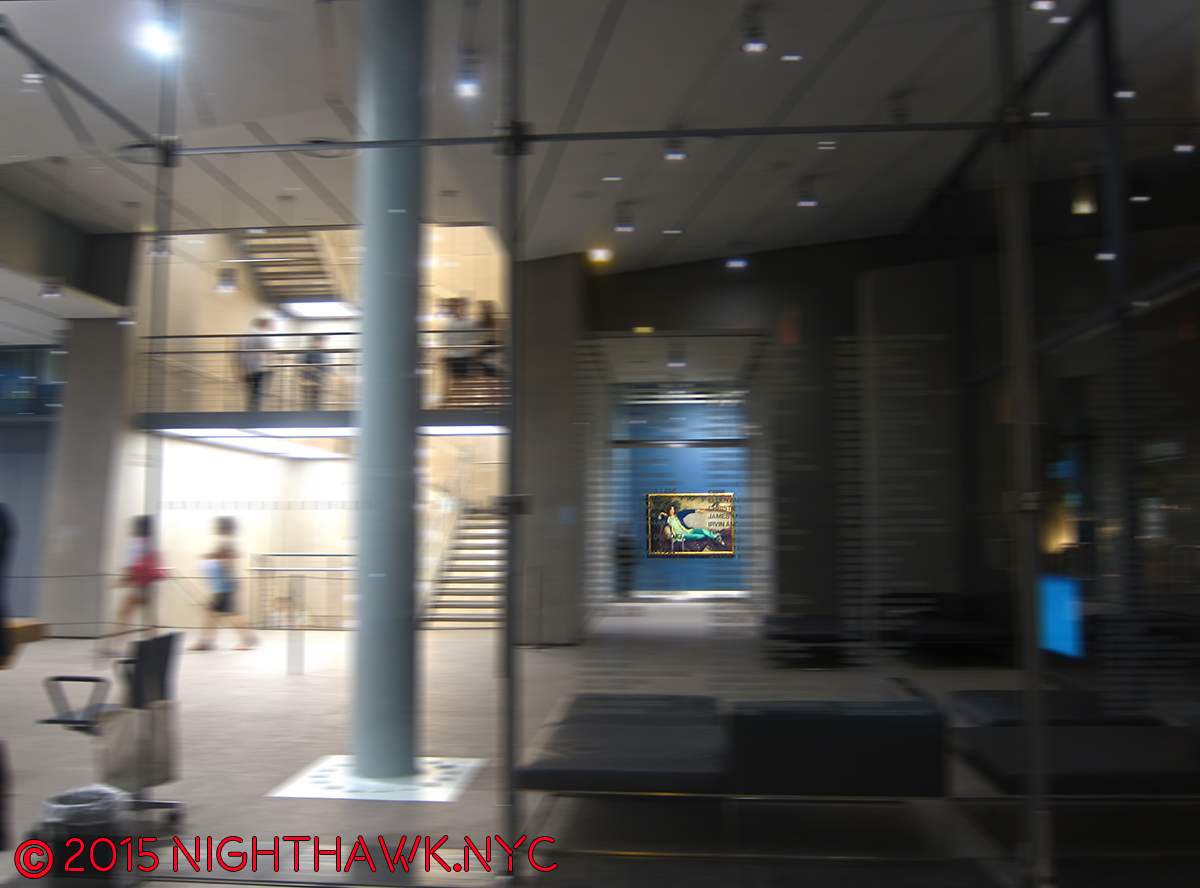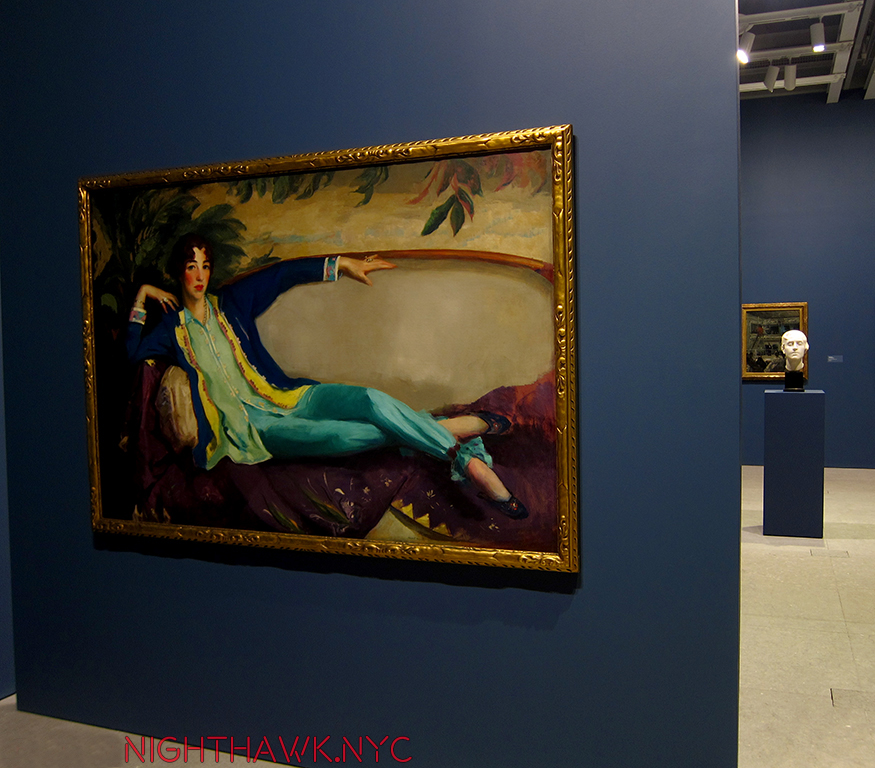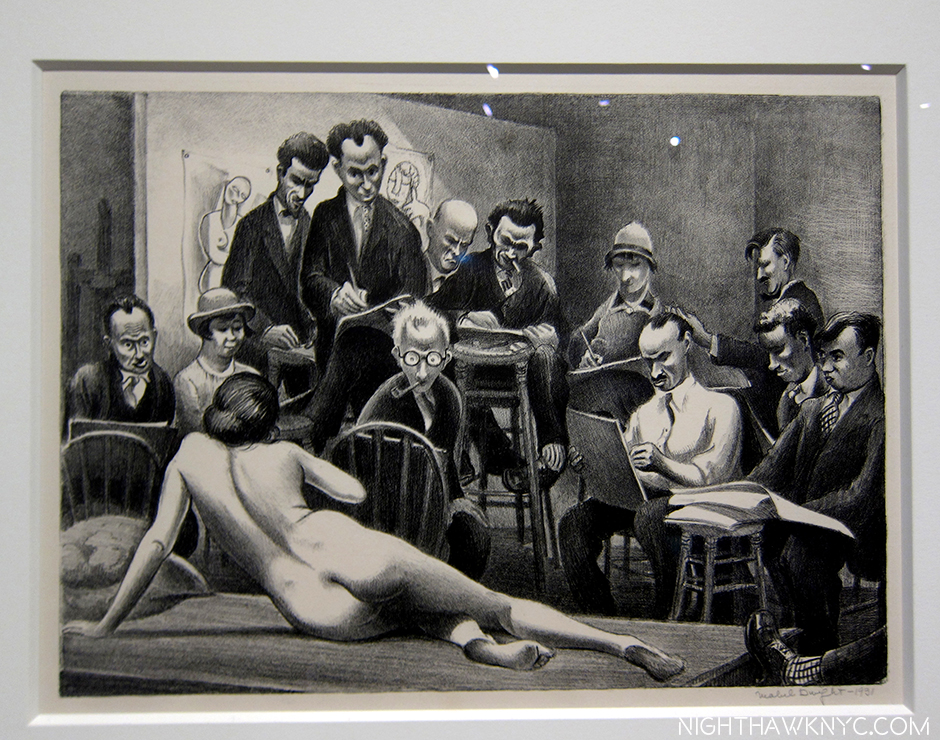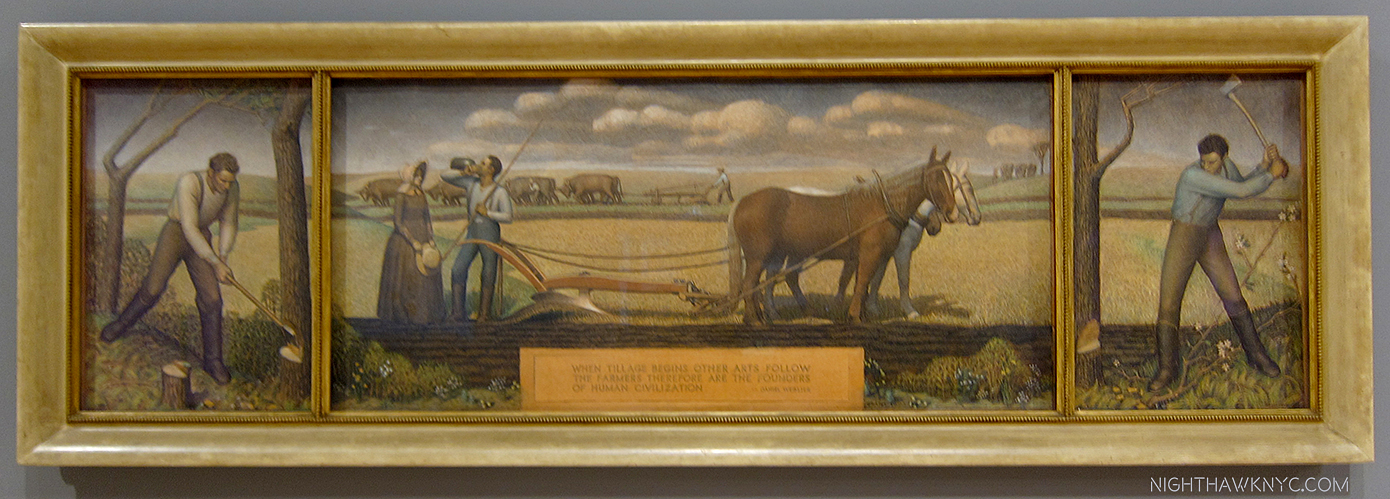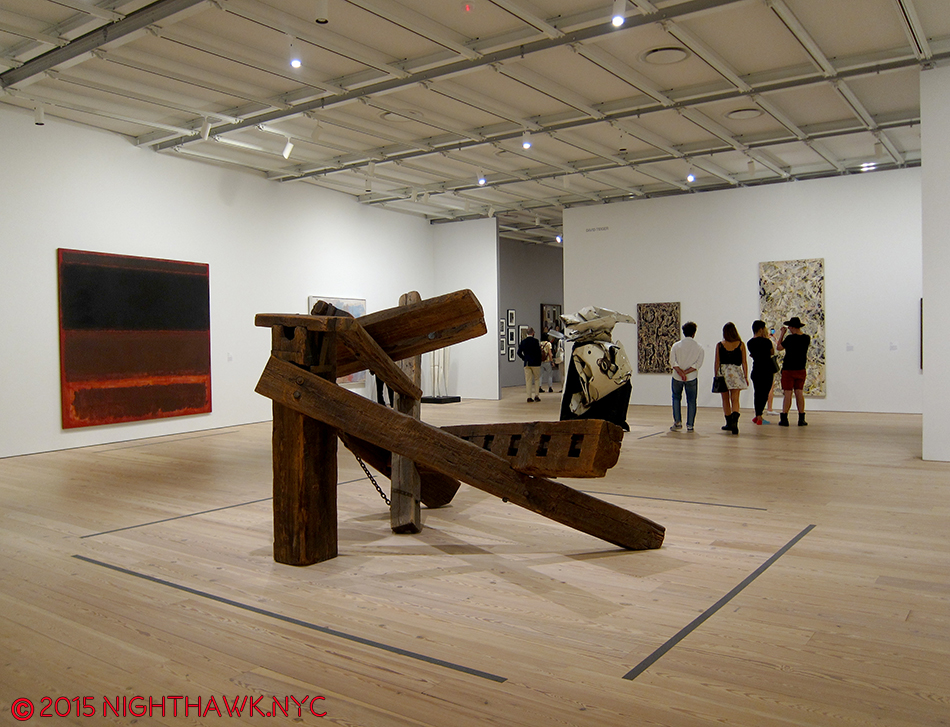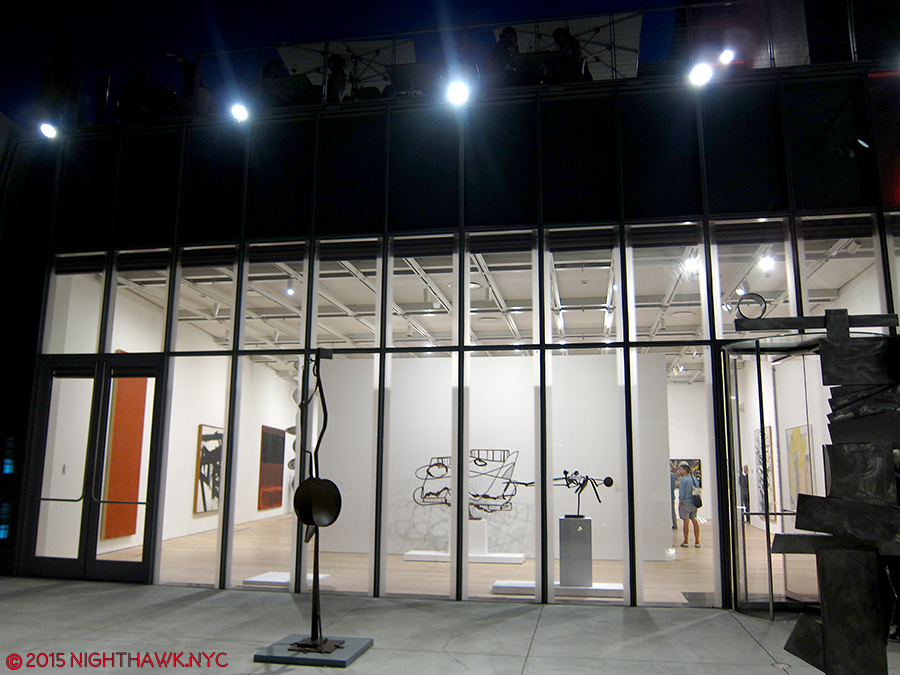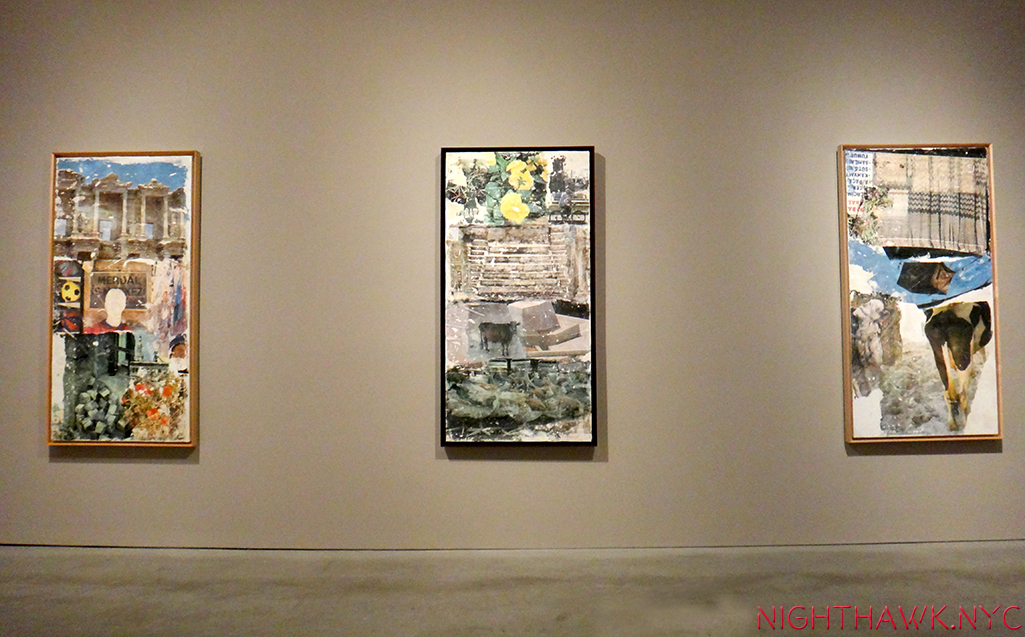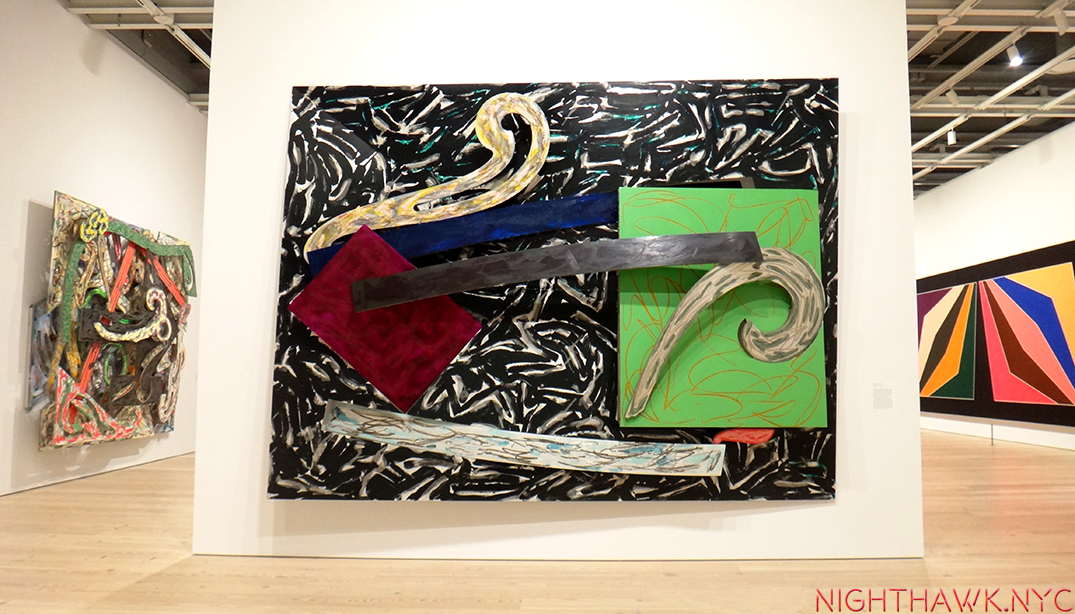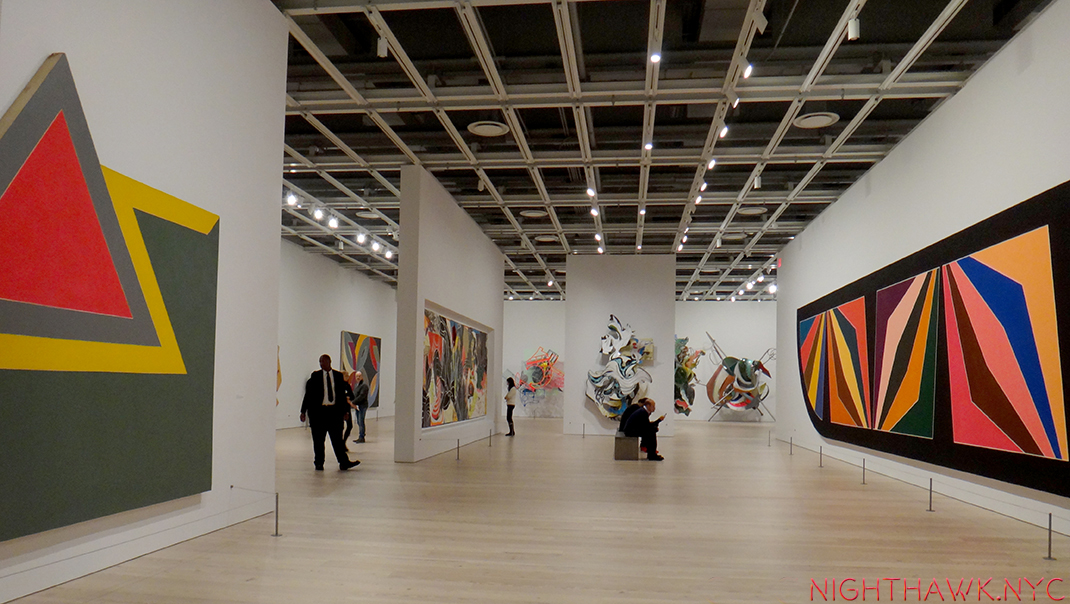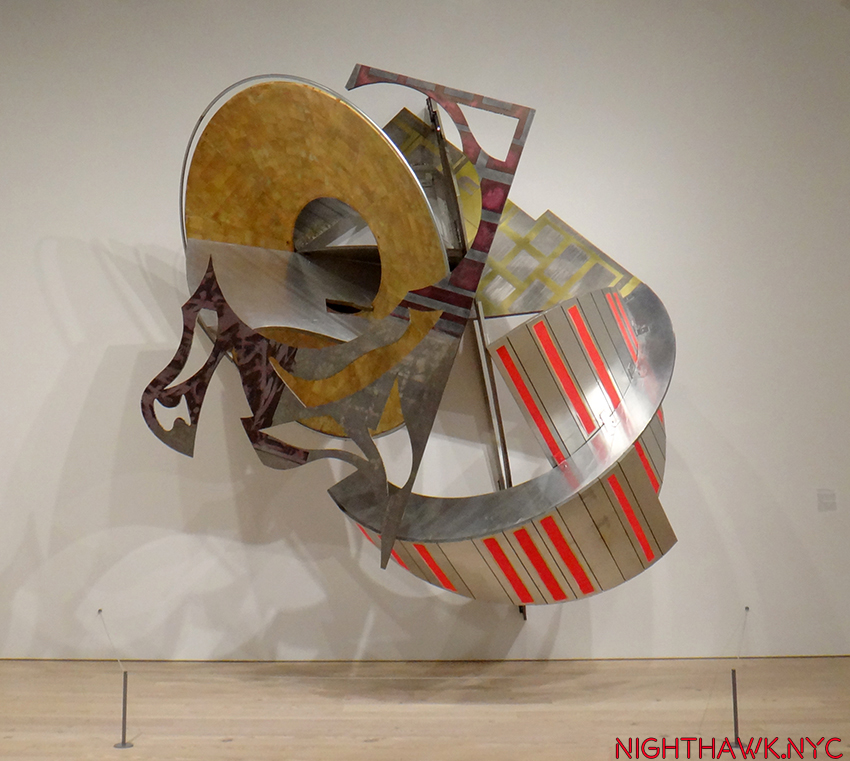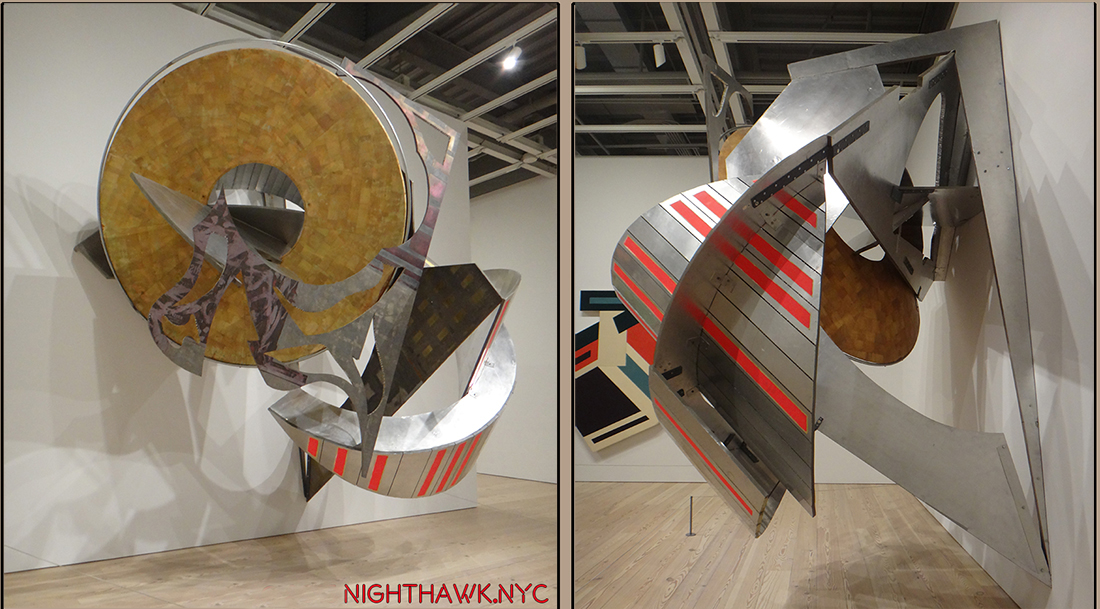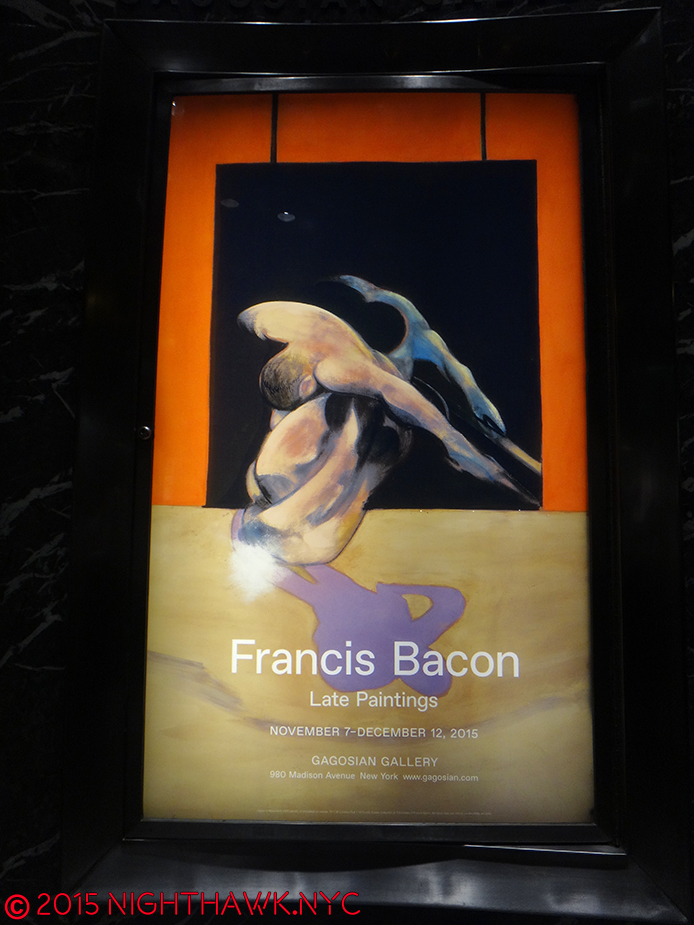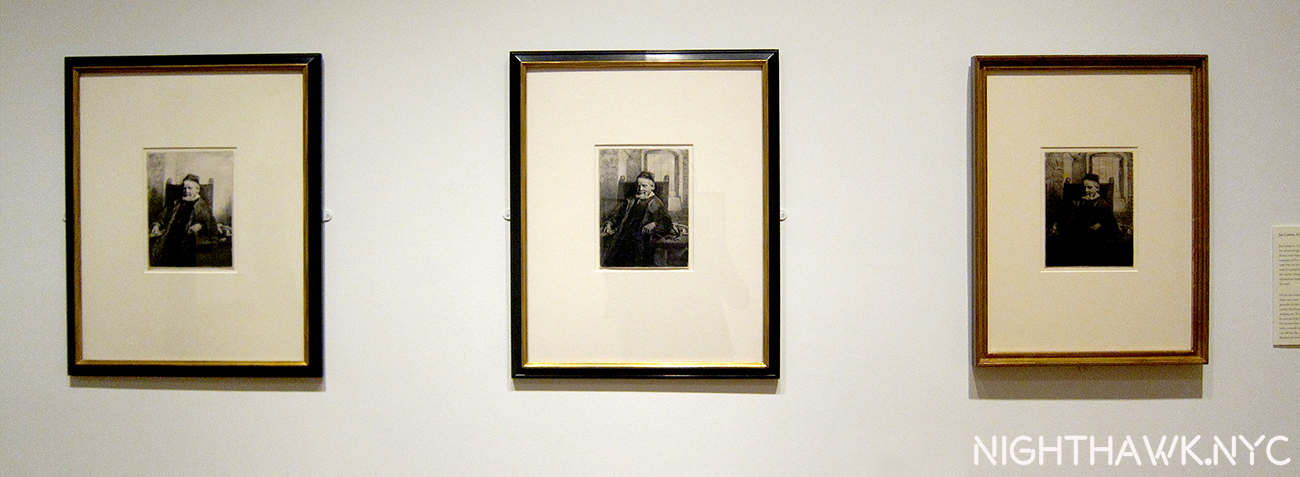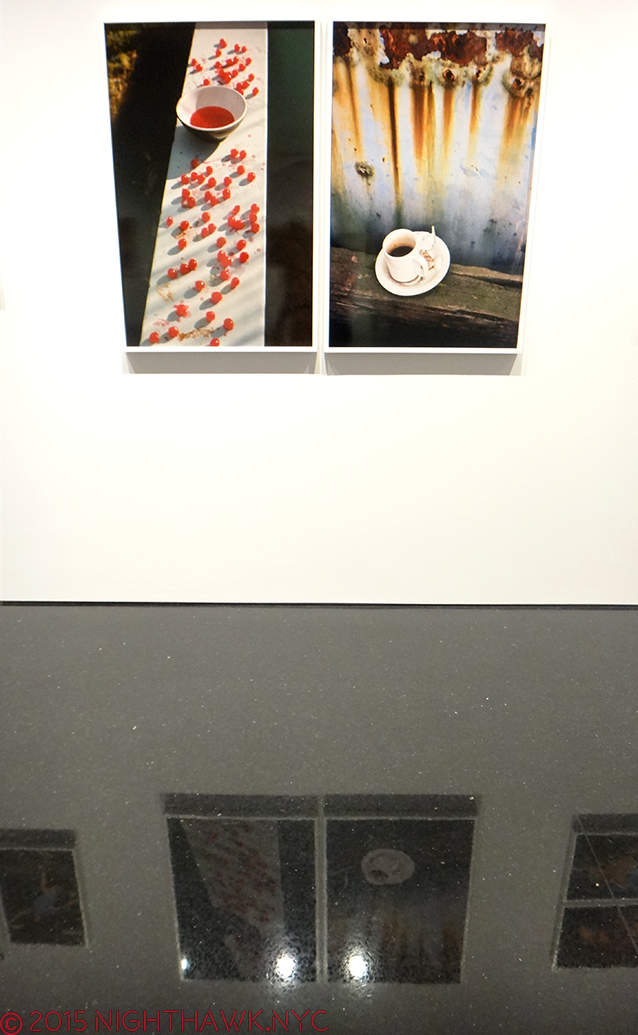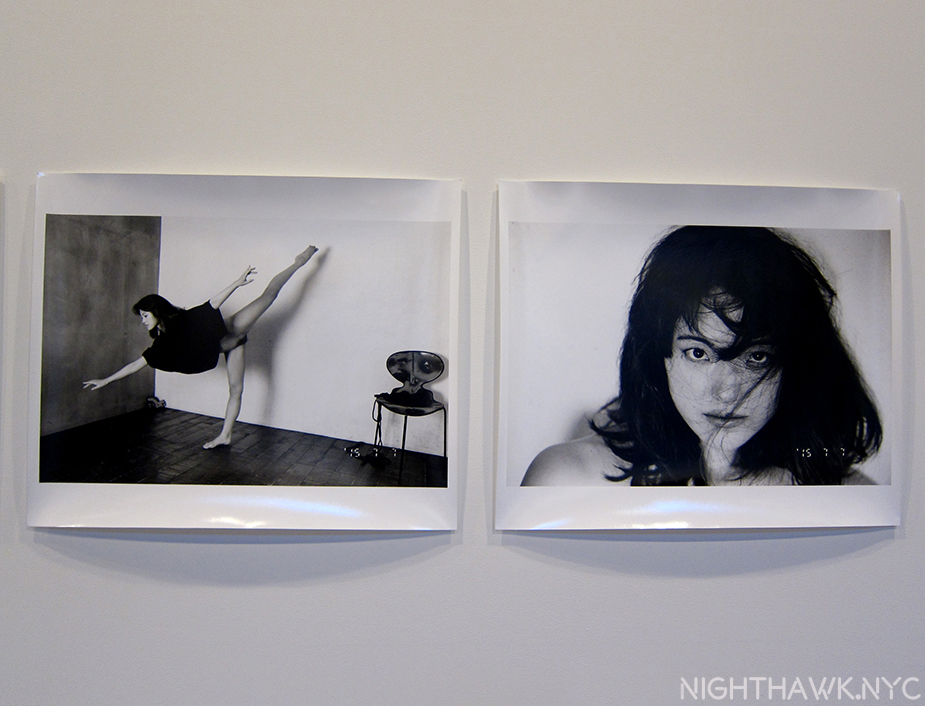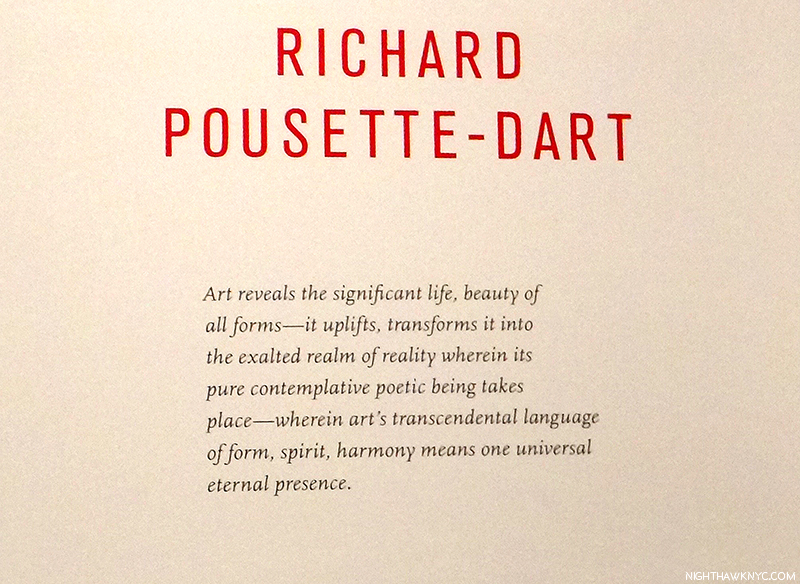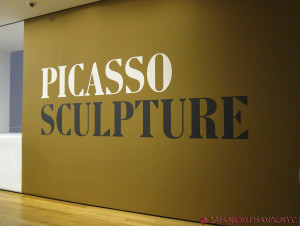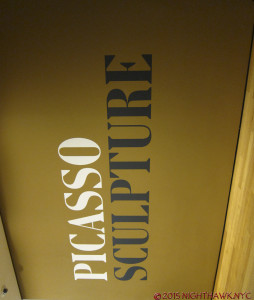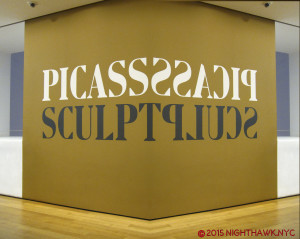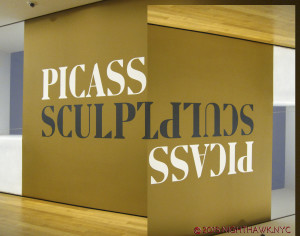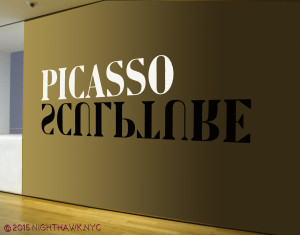This site is Free & Ad-Free! If you find this piece worthwhile, please donate via PayPal to support it & independent Art writing. You can also support it by buying Art & books! Details at the end. Thank you.
Written & Photographed by Kenn Sava.
Book review- Rod Penner: Paintings, 1987-2022, published by The Artist Book Foundation.
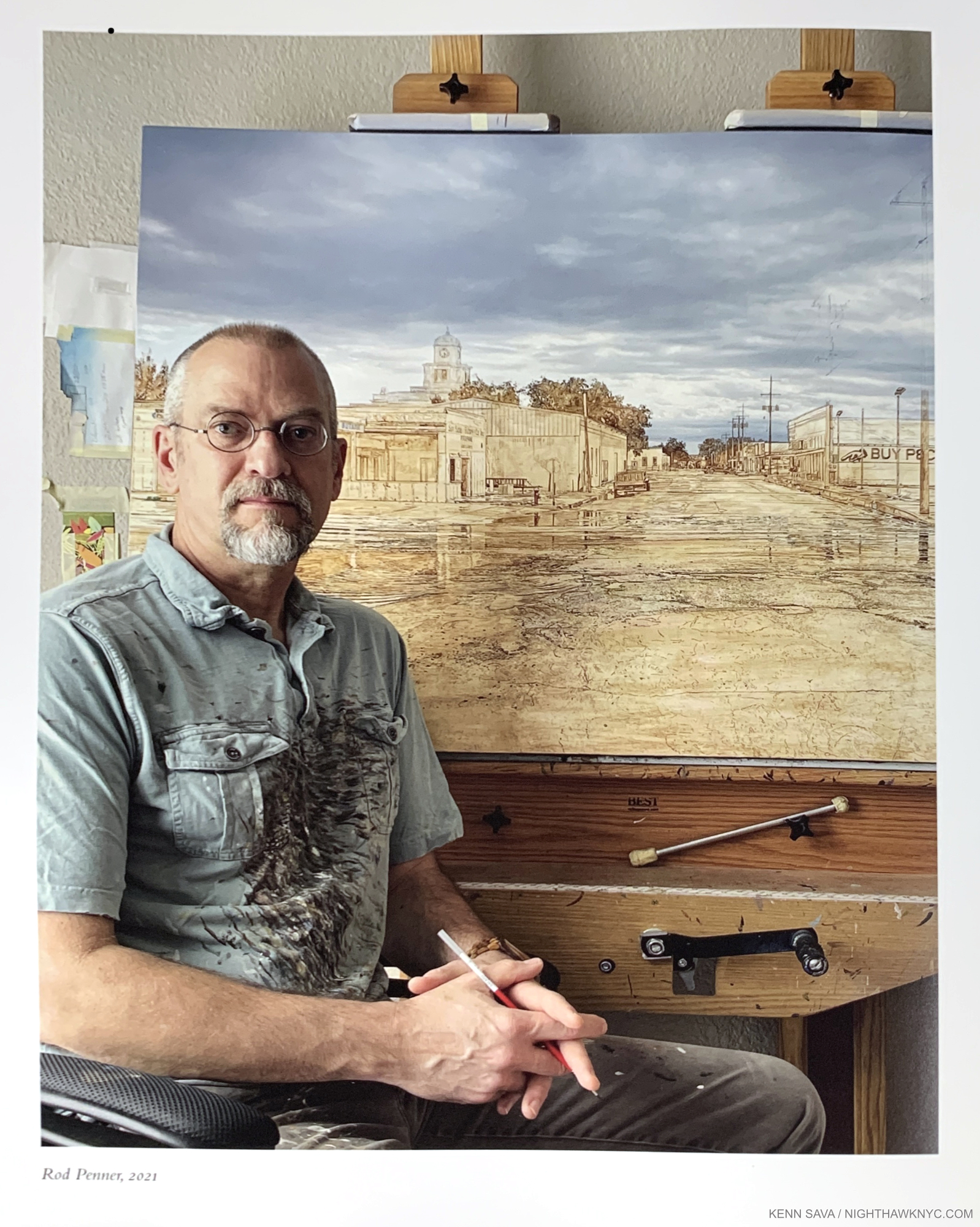
Rod Penner at his easel at work in the early stages of what would become Buy Pecans Here/San Saba, TX, in 2021, as seen in the book. Click any image for full size.
Rod Penner is best known for his Paintings of small-town America that combine his unique Artistic sensibility with a seemingly other-worldly level of technical mastery. Small-towns being most of what America is made up of, the scenes he renders resonate with the shared experience of life in America in Paintings that are open-ended allowing the viewer to create their own narratives and outcomes. Whenever they’re through basking in the sheer delight just looking at them brings, that is. Born and raised in Canada, the Artist settled in Texas in 1988, where he finds most (but not all) of his scenes. In spite of how detail-rich they are and time-consuming to make, he’s amassed a sizable body of work while still in mid-career. Yet, a Rod Penner monograph has been a long time coming. This month, with the publication of Rod Penner: Paintings, 1987-2022, the 36-year wait is over. It’s finally here.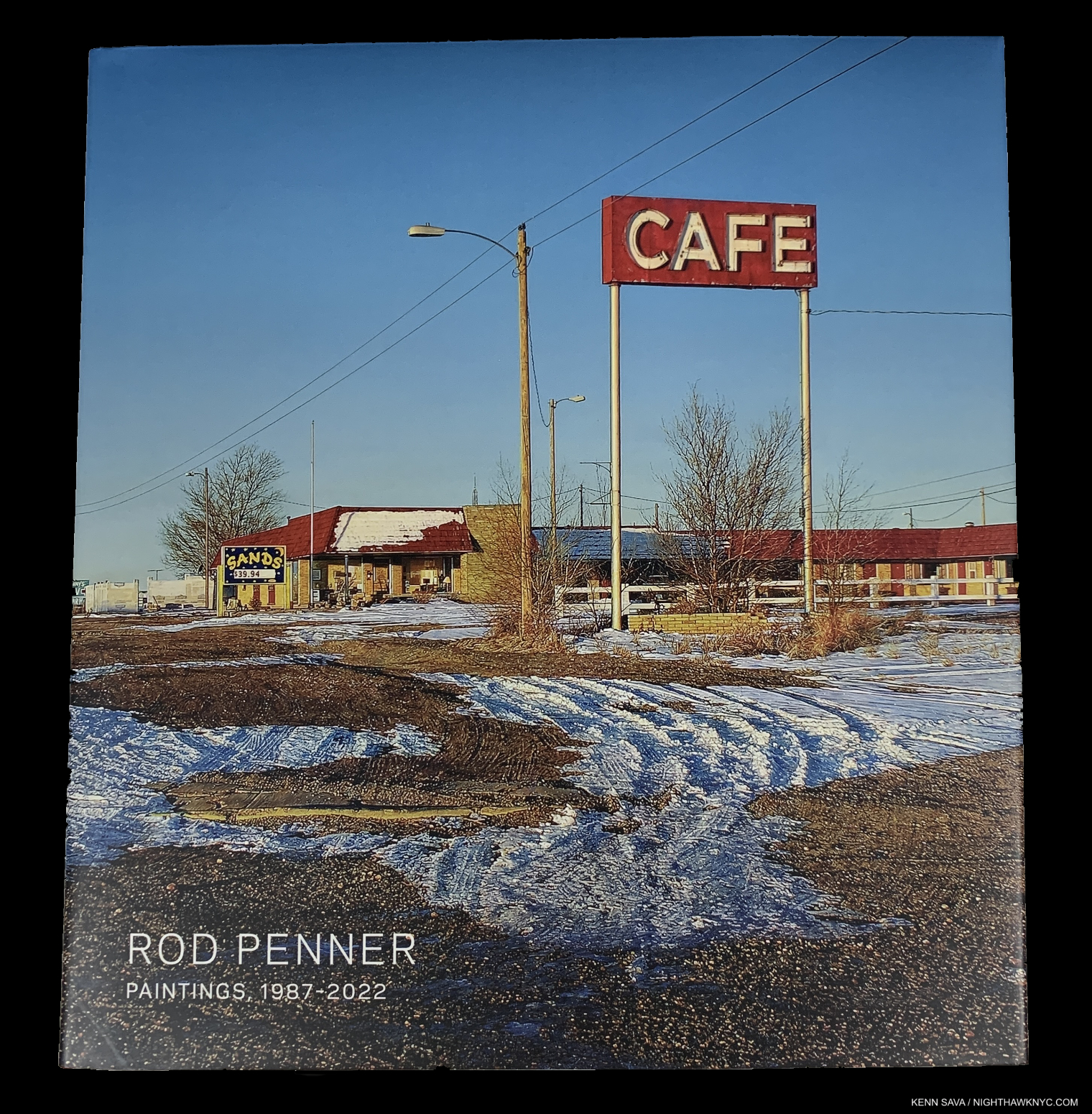
Rod Penner: Paintings, 1987-2022 is a book that makes a real attempt to cover a lot of bases. It’s an introduction to his work, a monograph on his career to date, and a Catalogue Raisonne. That makes it fairly unique among Art books I’ve seen in my half century of buying Art books. Most books set out to be one of those things. In pondering that, keep this in mind- it’s hard for a Painter to get a book published. The great Alice Neel didn’t see her first monograph published until the year before she died at 84! Therefore, it’s not surprising that the first full-length book on Rod Penner is one that strives to check a lot of boxes and fill a lot of needs.
Whether you’re new to the Paintings of Rod Penner, or not, expect to be immersed in what the Artist has created because EVERYTHING Mr. Penner has Painted through 2022 is in it (along with a few stellar Drawings)! The #1 complaint I hear from Art book buyers is- “Not enough pictures!” Complaint #1A is “Not enough pictures in color.” With 268 color images over 200 pages, that’s not going to be the case here. However, Rod Penner: Paintings is not a pure monograph, per se, where sections of an Artist’s career are broken down and analyzed, which some new to his work might miss. The Paintings flow continuously from the beginning of the Paintings section, shown above, to the end of it (pages 52 through 183). The benefit of this is that one is able to follow the Painter’s development on a work by work basis, right from the start, without interruption through 2022, which is unheard of in a monograph.
As a result, in my book, Rod Penner: Paintings scores highest as a Catalogue Raisonne, which is where it will probably have the longest-lasting importance, immediately becoming the standard reference on his Paintings through the end of last year. Though it doesn’t include a catalog numbering system usually seen in a Cat Raisonne, the pertinent information is provided for each piece. Works are referred to by their title, which will now remain their official reference point. Interestingly, nowhere in the book, or on The Artist Book Foundation site, is the term “Catalogue Raisonne” mentioned. Perhaps, someone feared it would scare off general Art book buyers. Yet, all his Paintings are included, so that’s indeed what it is. A rose by any other name…
In Mr. Penner’s case, a book containing all his work is particularly welcome, a dream for his staunchest admirers, and those wanting to see more. Shows have been infrequent, making the chances to see his Paintings in person precious. Rod Penner’s work always sells. When it does, it disappears into a private collection where chances for the public to see it are rare at best. So, Rod Penner: Paintings is a chance for the rest of us to see all of what the Artist has created. I, for one, am happy that this is the path that was chosen, though a “greatest hits” book might have been more marketable. Marketable, maybe. But, having watched visitors over multiple visits to three shows of his work, it seems to me viewers either like it right off, of they don’t. If they like it, why not show them more, even all, of it?
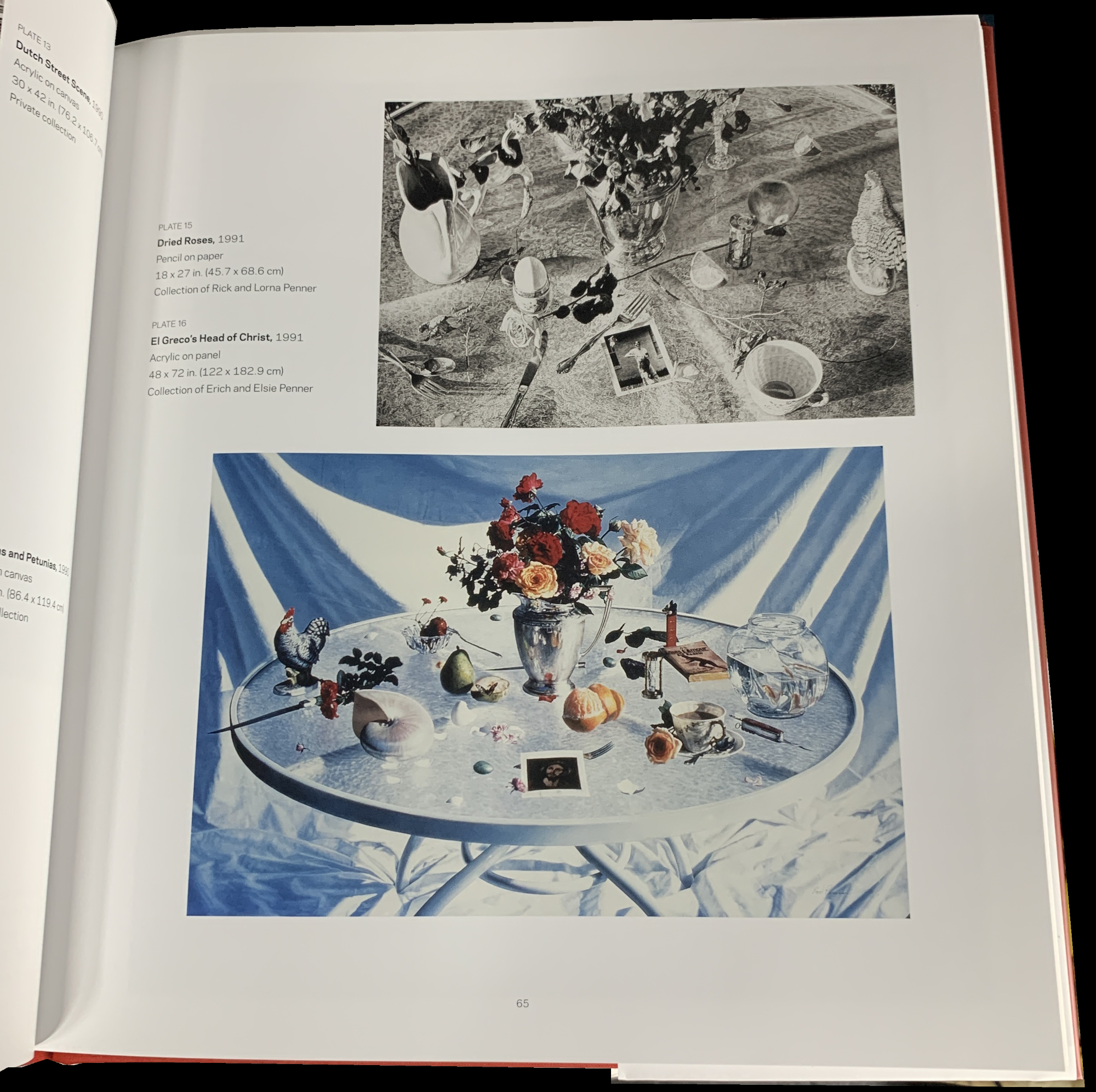
Two earlier works that will surprise those familiar with the “small-town” work. The top piece, El Greco’s Head of Christ, 1991, is one of his rarely seen Drawings.
Content determined, the next questions are- what’s the format of the book? How’s the design and how are the images laid out? What are the materials used? And, perhaps most importantly, how are the Photos of the Paintings? For Paintings as detail-rich as Rod Penner’s are, high-quality Photos are, possibly, the most important element in any book on his work. In a book covering over 3 decades of work, the early work might suffer from inferior Photography when compared with the more recent Paintings, particularly because these pieces “disappeared” into private collections after leaving his easel in the late 1980s and 1990s. A drop off in the quality of the Photos of the earlier work is not noticeable here. The Photos are of a consistently good quality of reproduction, with accurate colors and sufficient detail, assuaging what was a large concern going in. However, deciding to include all of his Paintings in one book temps my “law of more.” That is, “More of one thing means less of something else.” Welcome to the realm of the trade-off.
The book clocks in at 11 by 12 inches, an unusual format as Painting books go in my experience. If it had been any smaller in this format, I think the book may have failed. I was surprised it’s not a landscape format book to match the format of most of Mr. Penner’s Paintings. In any event, with 268 color plates and 200 pages, not all of them are going to be full-page. The Artist and the book designer appear to have worked together to carefully decide how big each Painting should be reproduced, instead of just making each image the same size. Since Mr. Penner was so involved with the making of this book, the relative sizes could be taken as an indication of which he feels are his most important works. But, that’s conjecture. I can quibble with some of their size choices, but overall, the results are surprisingly good. So, if all the Paintings are here, what’s missing?
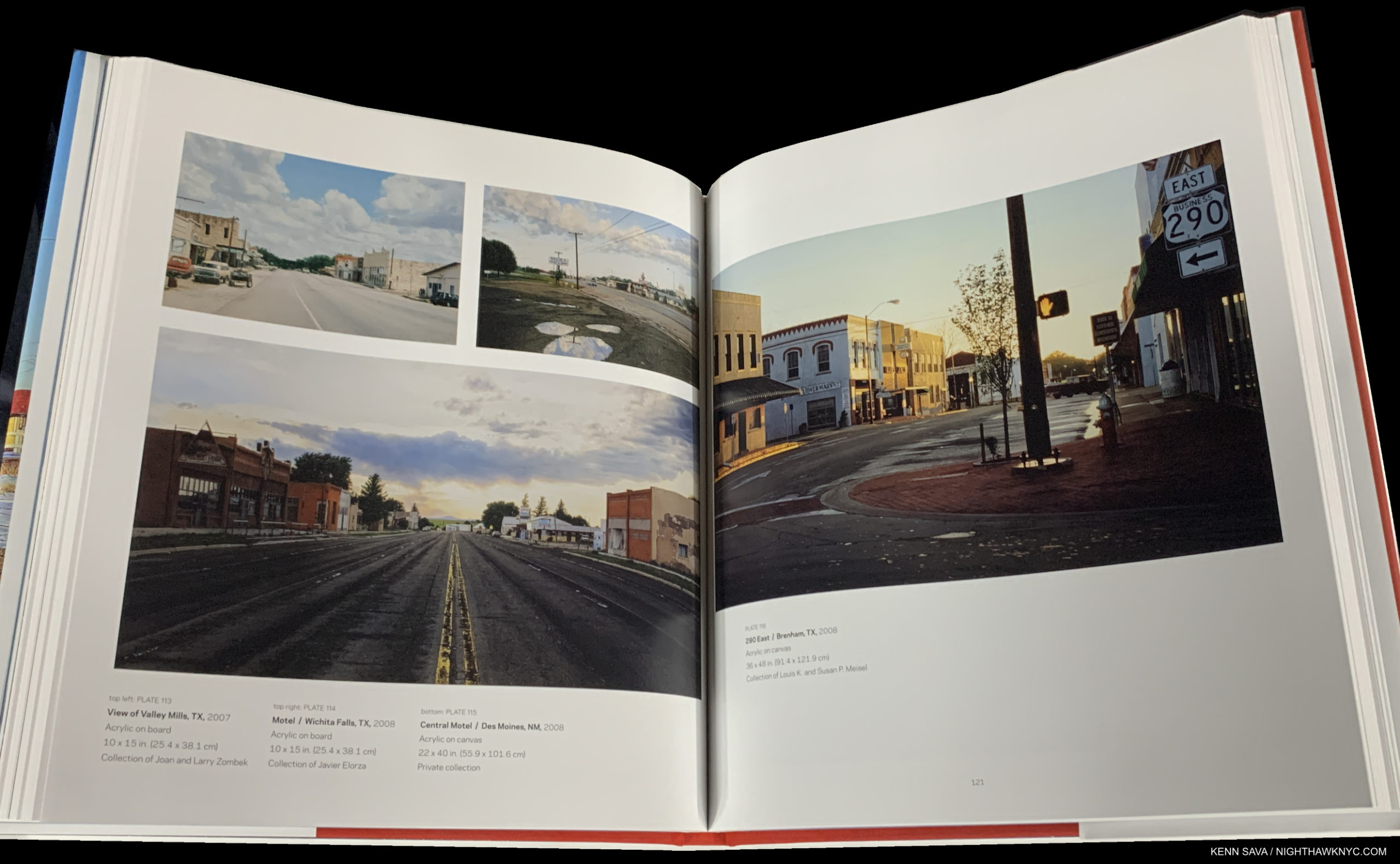
The two Paintings in the upper left are about as small as I’d want to see a Rod Penner Painting reproduced.
The trade-off appears to be details. As anyone who has seen Mr. Penner’s Art knows it’s characterized by extraordinary details- everywhere you look, virtually ad infinitum. Watching visitors to those shows I mentioned, I see a familiar pattern.
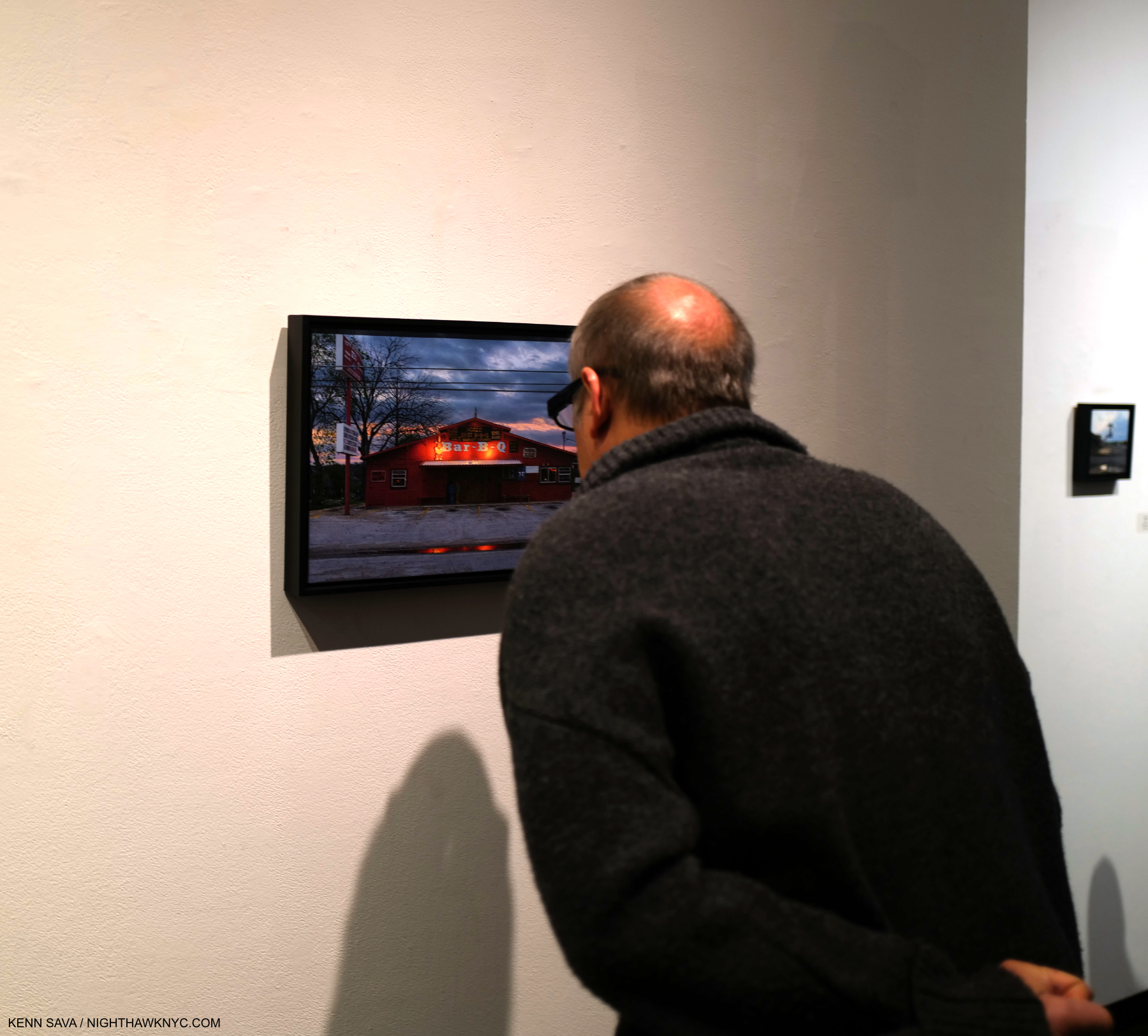
The “Penner Neck Crane.” Something first-time and long-time Rod Penner viewers are very familiar with. The charming work under consideration here is Bar-B-Q/Marble Falls, TX, 2022, the most recent work in his current show, Rod Penner: Small Town Meditations in NYC.
First, the jaw slackens, then the mouth opens in disbelief at what the eyes are seeing. These are hallmarks of a first-time Penner experience. Then, the neck cranes, to look closer and closer. Then, the slight shuffle of the feet. This to look closer at another part of the piece. Rinse and repeat. Unfortunately, steps 2 & 3 are not particularly possible with a book. Here, the reader will find there are only a handful of details of Paintings, which is a sizable disappointment, but one that I, for one, will accept in order to see more Paintings.
The Artist and the editors present a surprisingly wide range of image sizes. Luckily, the book is a good size so that most of the images are larger than you would see in a typical monograph. And they are tastefully placed, chronologically, on the page with not too big of a border. Inevitably, with a book like this representing 30 years of work, there will be some wailing that such and such a work is shown smaller than one would wish and you can’t study the detail. When that happens, ask yourself which Paintings you would have omitted. That’s the trade off. Yes, at 200 pages, perhaps another 50 of details could have been added. I would love to see details (plural), but not at the expense of a single Painting. Welcome to the world of budgetary considerations! The book lists for $65., which is $5 to $10 below most similar Art books I see, and as such is a very good value.
The #2 complaint Art book buyers make is that works go over the gutter. Before you ask, seven Paintings are shown large enough so that they go over the gutter by my count in the book (two them are shown here). I always feel I haven’t really seen a work that goes over the gutter when one appears in a book, in spite of the chance to see details. That is the case here, but, thankfully, it’s kept to a minimum. I really can’t blame them for doing this. Rod Penner’s work wants to be seen as close to life size as possible to give that effect they have in person. Without ANY large reproductions, you’re not showing that, and you’e doing Mr. Penner’s work a real disservice.
Overall, I find the design is tastefully minimal. Meaning it doesn’t get in the way. The book is a red cloth covered hardcover with a sewn binding and a dust jacket featuring Sands Motel & Cafe/Vaughn, MN, 2019, currently on view in Rod Penner: Small Town Meditations in NYC, wrapped around it. The red boards, (with the title appearing in white), are a bit of a surprise, red being a bit of an outlier in terms of frequency of appearance in his palette, but they work. The flaps don’t mention how many images are included, which I know book buyers consider when making a purchasing decision. The book is printed on 150gsm archival Garda Matt made by Lecta, a quality stock that should hold up to the book being used more than the average Art book given its comprehensiveness. When considering how sturdy gsm 150 is, consider that a gsm of 170 or over is considered board.
Among the included text, most importantly, Rod Penner has authored an Artist’s Statement, essential reading from an Artist who prefers to let his work speak for itself. Essays by David Amfan and Terrie Sultan, are also included as are a Foreword by Louis Meisel, a Chronology and a Bibliography where you will find my name with a list of the pieces I’ve written on Mr. Penner (which also appears below).
Rod Penner: Paintings will be an automatic acquisition for Rod’s collectors and admirers. For all other Art lovers- particularly lovers of Painting who’ve never seen a Rod Penner Painting- it’s a book you should make a point of seeing. You’ll know instantly if Rod Penner’s work is for you, or not. If it is, don’t hesitate to buy a copy. Books like this tend to go out of print, or sell out, quickly and then sell for substantial sums on the aftermarket.
With the publication of this book, and everything he’s created for the last 35 years now a matter of record, the real work can begin – assessing Rod Penner‘s place among his peers, and those who have preceded him, in Art history.
As I said in the beginning of this piece, Rod Penner: Paintings is a book that is many things. Given the Artist’s close involvement in each step along the way, it’s the definitive reference book for the collector, buyer or seller of his Art. Yet, it’s also a treasure trove of the sheer beauty and skill a supremely gifted Artist can create that will endlessly delight lovers of Art and Painting.
Any page of the book shows how masterful a Painter Rod Penner is. As you page through it, moving through the years and decades of his work, the consistency of the very high level of quality of his Painting becomes every bit as impressive.
In the end, therefore, among everything else it is, Rod Penner: Paintings, 1987-2022 is also a personal testament.
*- Soundtrack for this piece is “On The Road Again,” by Willie Nelson from the Honey Suckle Rose Soundtrack album, 1980.
As far as I know, to this point, I have written more extensively about Rod Penner’s Art than anyone else has. My previous pieces on Rod Penner are-
“The Vermeer of Marble Falls, Texas,” April 28, 2017
“Rod Penner: Brilliance, Under Cloudy Skies,” June 10, 2017
“Q & A With Master Painter Rod Penner,” June 14, 2017, and
“Rod Penner’s Neighborhood,” August 3, 2018
My previous BookMark pieces are here.
My thanks to Leslie Pell van Green and and Amanda Romanelli of The Artist Book Foundation.
NighthawkNYC.com has been entirely self-funded & ad-free for over 7 1/2 years, during which almost 300 full length pieces have been published! If you’ve found it worthwhile, PLEASE donate to allow me to continue below. Thank you, Kenn.
You can also support it by buying Art, Art & Photography books, and Music from my collection! Art & Books may be found here. Music here and here.
Written & photographed by Kenn Sava for nighthawknyc.com unless otherwise credited. To send comments, thoughts, feedback or propositions click here. Click the white box on the upper right for the archives or to search them. Subscribe to be notified of new Posts below. Your information will be used for no other purpose.

